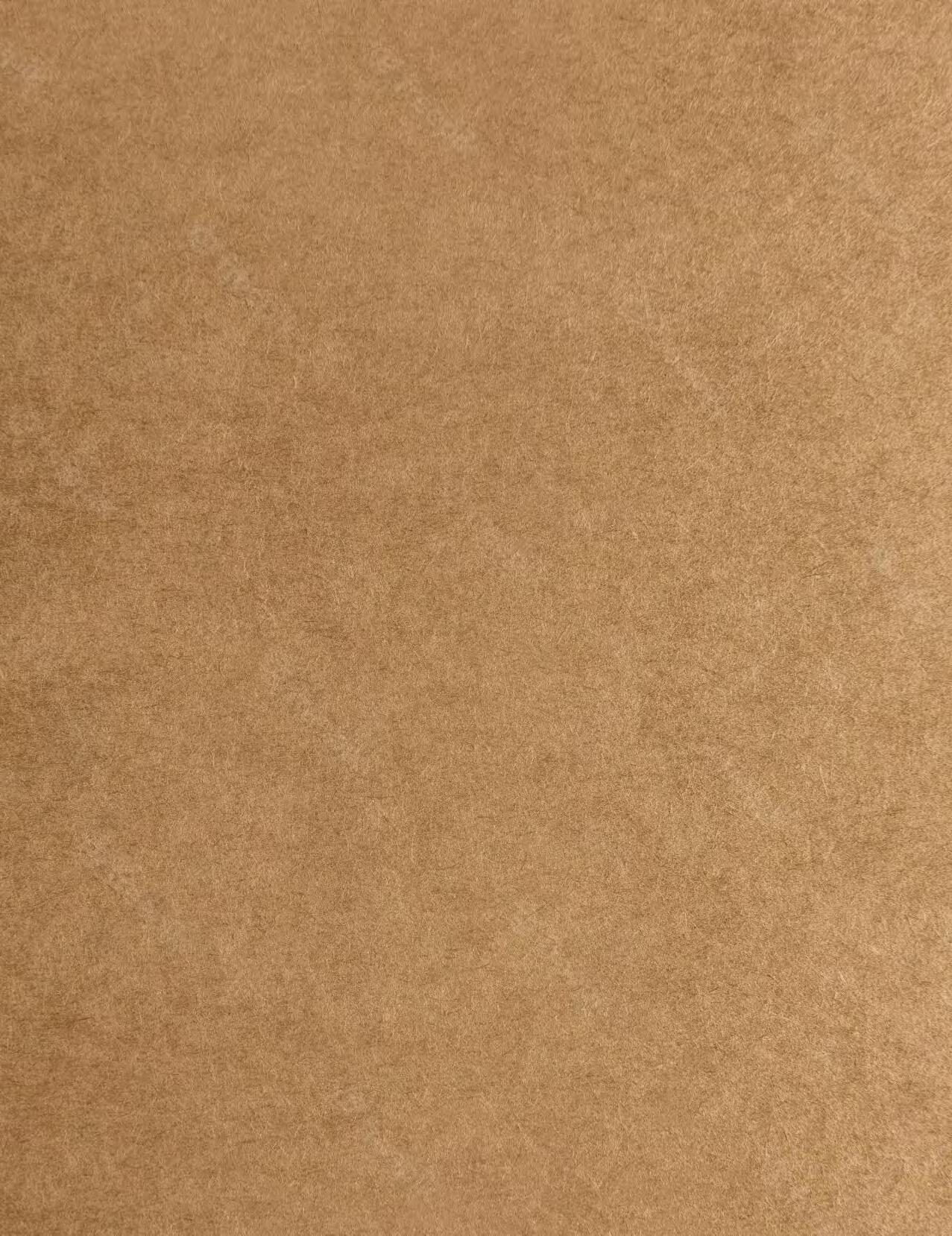
by �e�
RAW MATERIALS
P.3
STÉPHANE PIQUART
The Indiana Jones of natural ingredients by Éléonore de Bonneval P.4
VAN AROMA
A family business by Guillaume Tesson P.8
AMOUAGE
In Wadi Dawkah, the Omani Grasse by Béatrice Boisserie P.14
IFRA
To the rescue of oakmoss by Jessica Mignot P.19
IN THE AIR
P.23
SELECTION
The best of niche by the Nez editorial team P.24
BRAND PORTRAITS
The scent, the bottle & the story by Delphine de Swardt P.29
ATELIER MATERI
Minimalist odes by Guillaume Tesson P.31
OLFACTIVE STUDIO
When the eye speaks to the nose by Anne-Sophie Hojlo P.32
LEN FRAGRANCE
Perfumes for paradise by Guillaume Tesson P.33
MEO FUSCIUNI
Perfume as a life story by Juliette Faliu P.34
L’OBJET
Mediterranean myths and materials by Clément Paradis P.35
THE LEATHER TREND
Skin to skin by Jessica Mignot P.36
DESTINATION
Indonesia by Béatrice Boisserie & Jeanne Doré P.40
AROUND FRAGRANCE
P.47
EVENTS
A journey into perfume by Dominique Brunel, Mathieu Chévara, Samuel Douillet, Anne-Sophie Hojlo & Clément Paradis P.48
COMPTOIR NICHE BY NEZ Creators spreading their wings by Mathieu Chévara P.53
BDK PARFUMS X MANE
A family attachment by Jessica Mignot P.54

ATELIER DES ORS X DSM-FIRMENICH
A partnership made in heaven by Aurélie Dematons P.58
JUDITH X SYMRISE
A wonderfully vintage Parisienne by Béatrice Boisserie P.62
LUZI
by Guillaume Tesson P.67
MÄURER & WIRTZ
When a sillage opens up new horizons P.68
LEN FRAGRANCE
Putting big efforts into small brands P.71
THE NICHE ACADEMY
The art of transmitting olfactory culture P.71
SIDONIE GRANDPERRET AND MARK BUXTON Two takes on niche P.72
The international guide to niche perfumery P.75
Nez, the olfactory cultural movement P.80
An expanding universe
A year has gone by since we unveiled the first issue of Niche by Nez. The 25,000 copies of the magazine, produced in French and English, have traveled the world, distributed free of charge at a dozen trade events as well as a hundred or so sales outlets, including our online store. The magazine’s resounding success and international acclaim reflect the constantly expanding realm that is niche perfumery. The sector has nothing to envy of what is now known as “mainstream” perfumery, with its growing tendency to prioritize quantity over originality. Niche has carved a place out for itself, taking up more and more space and garnering increased recognition from all directions. Industry players are intrigued by the playground niche offers, with its endless horizons and boundless creative potential. Consumers,
meanwhile, delight in the variety of creations, even if the breadth of choice can be a little overwhelming.
This second issue therefore has a duty to push the boundaries further with thought-provoking content, meaningful editorial choices and a multilayered approach to a market with many more facets than we realize lying below the tip of the iceberg composed of brands and bottles. From flagship ingredients to the latest trends, responsible supply chains to a behind-the-scenes look at the creative process, the ins and outs of regulations to faraway lands, including a selection of fragrances and composition houses carefully chosen by the editorial team, there are as many stories to tell about this abundant universe as there are new brands emerging every year. Long live Niche by Nez!
Jeanne Doré, Editor in Chief
1
EDITOR’S NOTE
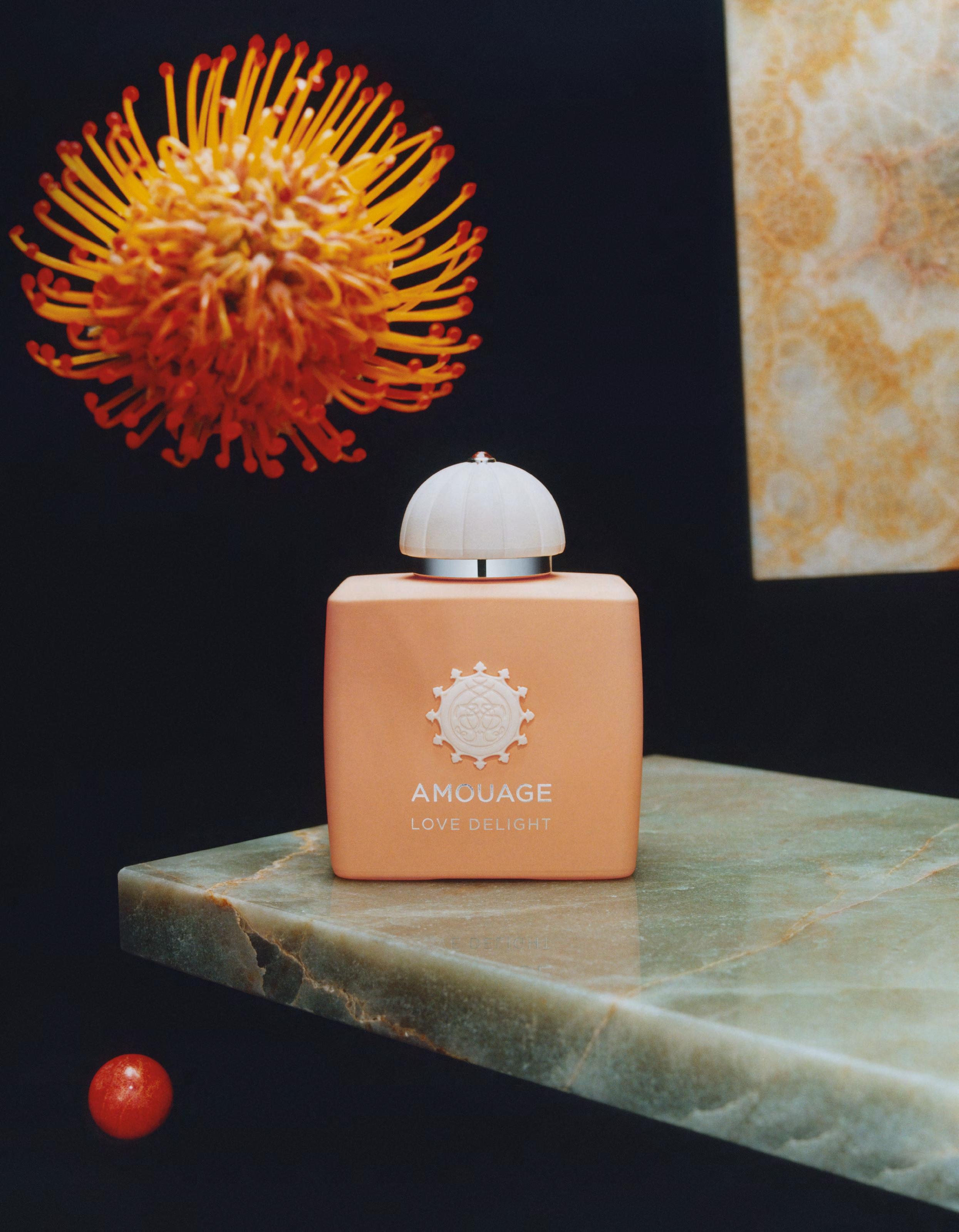
STÉPHANE PIQUART
THE INDIANA JONES OF NATURAL INGREDIENTS P. 4
IN WADI DAWKAH
THE OMANI GRASSE P. 14
RAW mat eri als
IFRA TO THE RESCUE OF OAKMOSS P. 19
3
VAN AROMA PATCHOULI A FAMILY BUSINESS P. 8
Stéphane Piquart
THE INDIANA JONES OF NATURAL INGREDIENTS
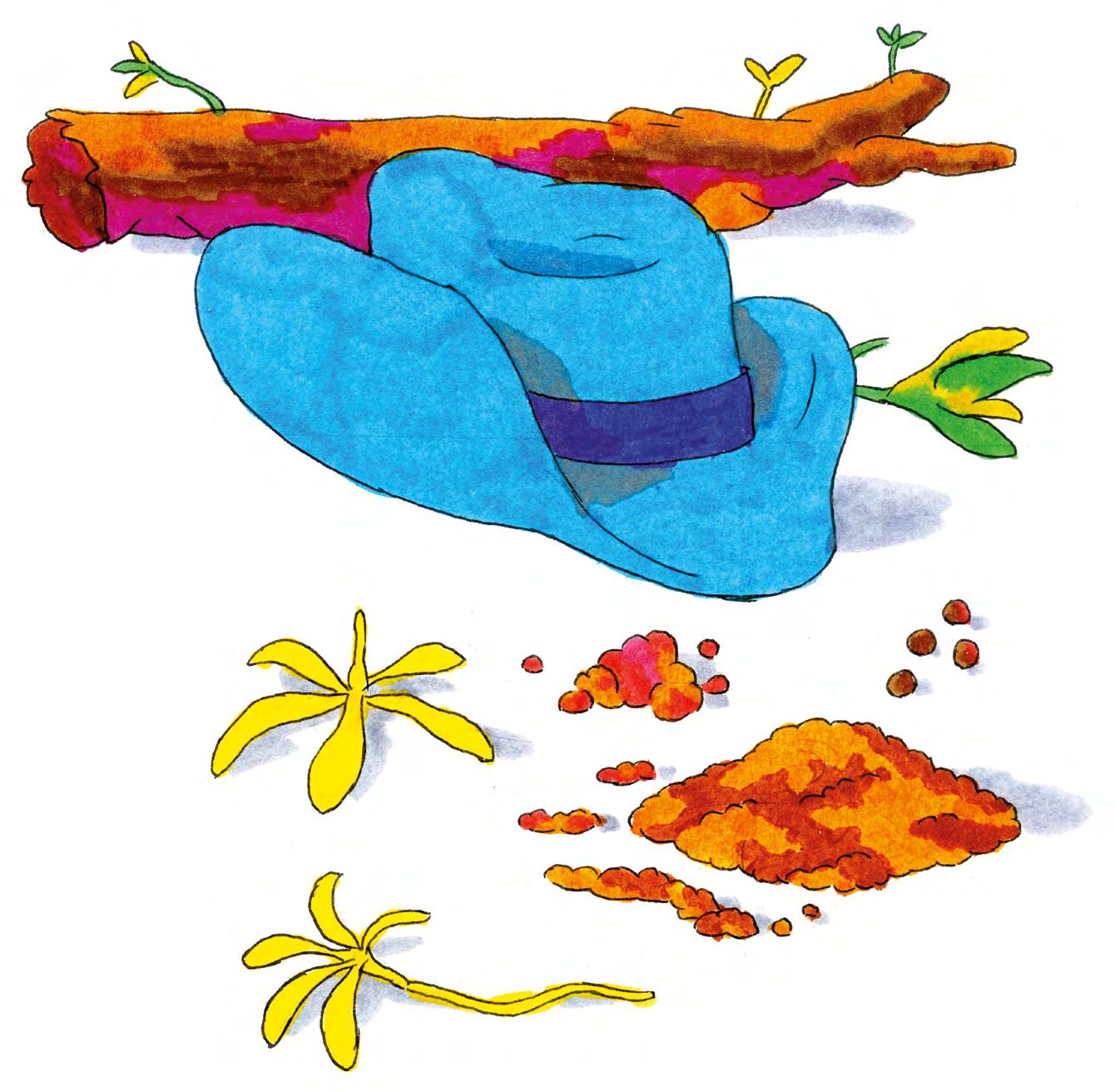
The sourcer likes to emphasize that his approach centers on serendipity, an openness to stumbling across discoveries as fortunate as they are unexpected. But his method gets a helping hand from his keen intuition and ability to find the right companions on the journey to turn his ideas into perfume ingredients. Interview.
By Éléonore de Bonneval
Illustrations:
Simon Roussin
How would you describe your role as a sourcer?
What I do is discover – and rediscover –raw materials. It’s not just about identifying new ingredients; the job also involves visualizing a different way of
working with them. I always try to improve, to invent new possibilities. There are still so many ingredients to discover, transformation procedures to devise, things to reinvent.
What’s the path to becoming a sourcer?
In 1999, I got the best possible start in the profession thanks to Steve Birkbeck, who pioneered the exporting of Australian sandalwood: It’s a vital raw material for perfumers, and it sets off lots of other ingredients. It was a real adventure, as we were proposing a native Australian sandalwood the market had never seen before, Santalum spicatum; at that point, perfumers were only familiar with Indian sandalwood, Santalum album. The new source gave us an entry point to the European market at a time when the album species was heavily criticized due to massive illegal deforestation. The Australian-sourced sandalwood offered a sustainable, ethical raw
material, since for each tree cut by the Aboriginal communities we worked with, who had been using sandalwood since the dawn of time, we replanted a dozen more. We paid them the same rate as white Australian suppliers, which was a first for them. The quality couldn’t fully match Indian sandalwood’s very creamy, milky notes, which meant it couldn’t totally replace it in fragrances like Guerlain’s Samsara, but perfumers gradually began to use it. Eau des merveilles from Hermès was one of the first to choose it for its specific qualities.
Has the Indian sandalwood supply chain cleaned up its act since then?
A solution was found for replanting it, particularly in northern Australia across tens of thousands of hectares, using the same model as Australian sandalwood. And in India, local sandalwood was reintroduced to areas protected by barbed wire and soldiers. The problem of sandal-
4
wood deforestation is now ancient history, and there’s enough to supply the perfumery market for decades. The advantage of the new Santalum album plantations in Australia is that it takes between 15 and 18 years for a tree to mature, while a wild Santalum spicatum, like the ones growing in the Australian desert, can’t be exploited until it has reached the 40- to 50-year mark. Thanks to these plantations, we’ve also seen birds returning – we really have recreated forests. The problem is that we introduced a non-native species to Australia. The Aboriginal communities are not at all happy with the new variety, which directly competes with Australian sandalwood. And that’s why I always make sure I promote the Australian supply chain and Dutjahn Sandalwood Oils, a company 50% owned by Australian Aborigines and recently recognized as ethically sourced by the Union for Ethical BioTrade (UEBT).
What solutions are there to repair the damage caused by deforestation and raw material extraction?
It’s not always easy to find alternatives. For example, ylang-ylang is responsible for 60% of deforestation in the Comoros, since the flower is primarily distilled using firewood. It’s a terrible situation because it involves cutting down lots of trees in spaces that shelter food plants. Once these crops are no longer sheltered, they can’t grow, they dry out, and in the rainy season they can’t retain the earth which runs into the sea, damaging the coral. And the coral provides food for fish. It’s a major problem, and brands are responsible for it. Everyone knows that it’s linked to the method for transforming ylang-ylang. But hardly anyone is looking for solutions, let alone finding them. In the Comoros, we’ve installed a machine designed in Europe which uses solar energy for distillation: It takes 50 minutes and has no environmental impact.
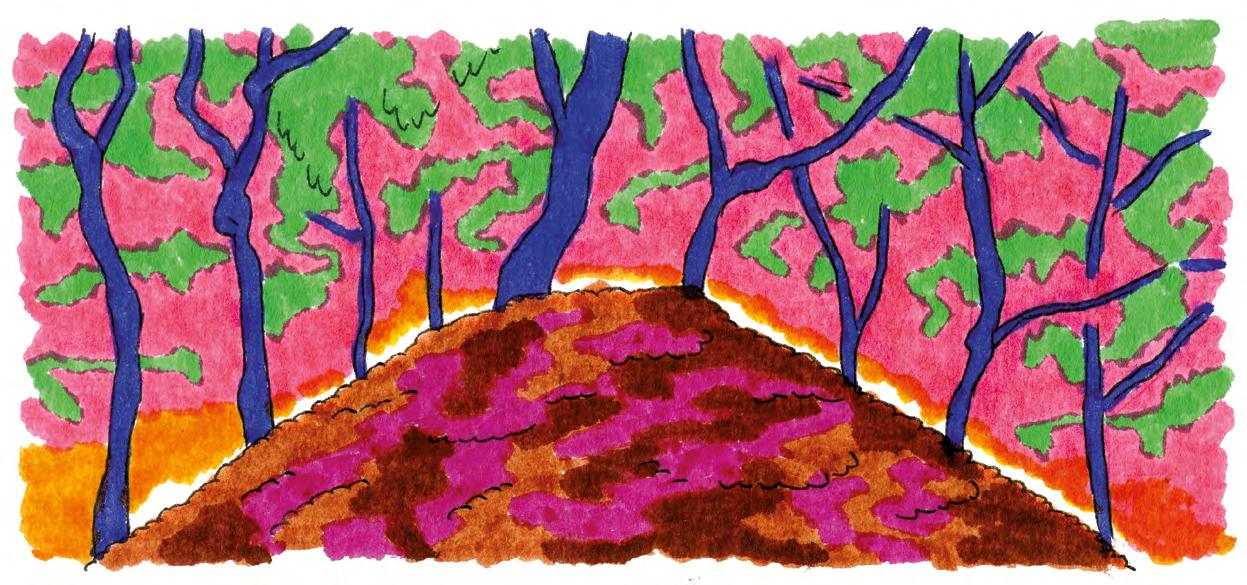
RECYCLING
SANDALWOOD WASTE
During a trip to Zanzibar, Stéphane Piquart’s interest was roused by the waste produced by clove distillation, which smells like vanillin. He wondered if the waste could be given a new lease on life, his mind also turning to the distillation residue from his Santalum spicatum, and developed a recycling formula
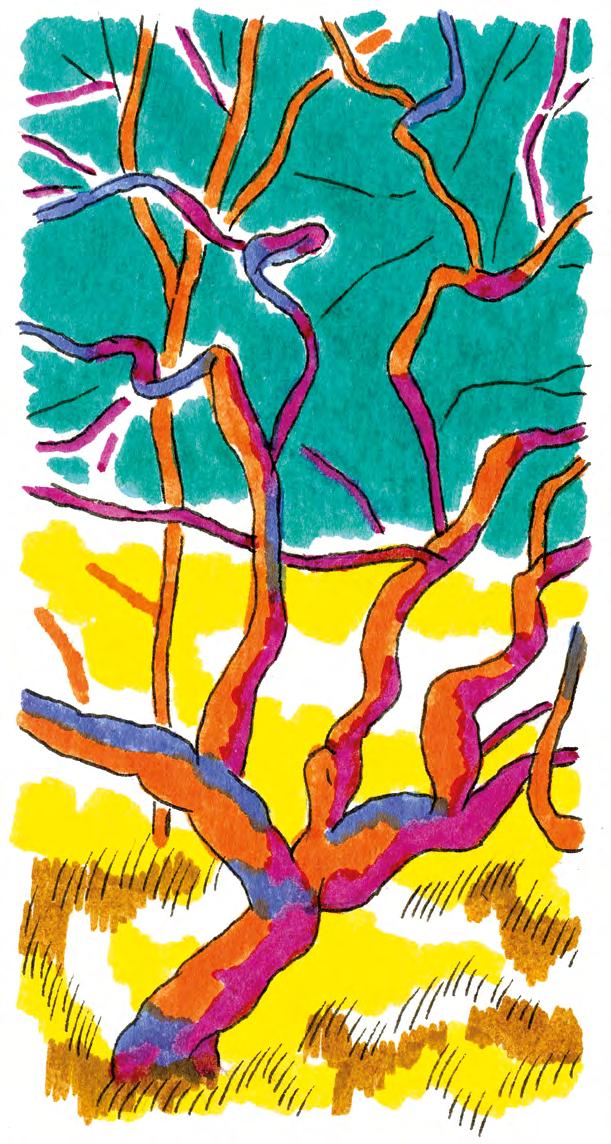
with his friend Jean-François Arnaudo. The sandalwood dregs undergo solvent extraction, which means untapped resources can be reused. The extract obtained is woody with slightly creamy roasted coffee facets, and is now an exclusive Symrise ingredient. This type of upcycling also resulted in a tea extract and recycled immortelle waste.
NAMIBIAN MYRRH
In 2007, Stéphane Piquart met with the non-profit organization IRDNC, in Namibia, which works on a variety of myrrh not used in perfumery, Commiphora wildii. He gave the NGO and the Himba tribe the task of estimating the amount that could be harvested every year while also guaranteeing the species would reproduce to build an ethical supply chain. The composition house Mane got involved in the project right from the start and took charge of registering and transforming the raw material. The sourcer continues to faithfully uphold his practice of tracking down extraordinary ingredients, such as Bushman Candle, to ensure that the Himba tasked with collecting them have an adequate income.
5
RAW MATERIALS
“With each one of them, we take the history of the ingredient as our starting point, looking at how it was used in the past, and at extraction techniques.”
Our yield is almost three times lower than with traditional ylang-ylang, but we can pride ourselves on obtaining an ingredient without damaging the environment, and on building a sustainable supply chain. Nevertheless, the brands feel the price is too high, despite its extraordinary olfactory profile and the real added value our supply chain offers.
Do you guarantee that your ingredients are systematically certified?
Sourcing is evolving. For the last few years, we’ve been working to provide
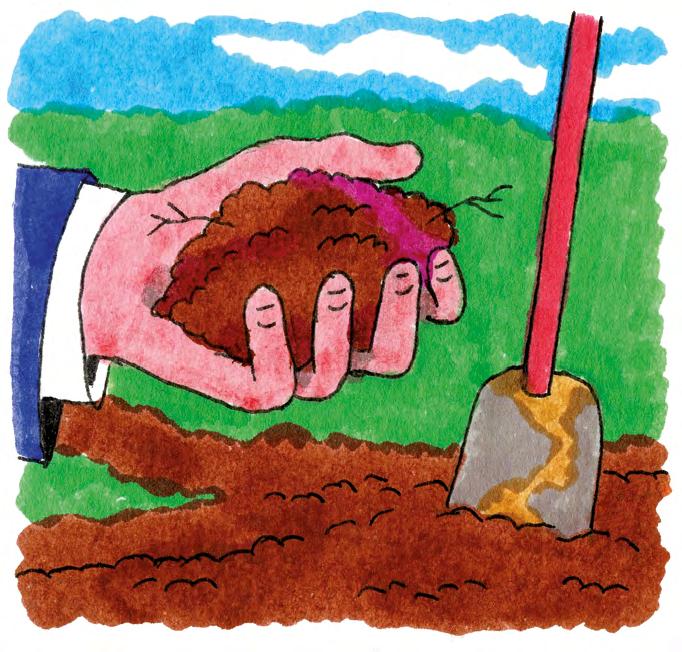
proof of our commitments. There are some very good organizations that check supply chains, like UEBT, and a number of major companies require their accreditation. But we don’t force our producers to apply for it because each time a brand demands certification, it’s always the same old story: The producers at the end of the chain are the ones who have to pay. It’s beneficial for the brand but it doesn’t change much for the producers, except that they face additional working constraints with no guarantee when it comes to the quantities brands order. As for us, we offer our producers a sort of self-certification, by encouraging them to respect the established criteria as closely as possible without having to pay for a label, audits, etc. Because brands don’t make long-term commitments or offer any forecasts for future sales and prices, even if a producer has UEBT certification.
What developments are you currently working on?
You need to be very open-minded in this job, which leads to unimaginable encounters and associations. We’re currently working on at least six or seven development projects in parallel. With each one of them, we take the history of the ingredient as our starting point, looking at how it was used in the past, and at extraction techniques, both traditional
THE FRAGRANCE OF THE SOIL
His latest innovation? A soil extract called Ecce Terra. During one of his experiments, he recalled the procedure used to create mitti attar in Kannauj, India. Baked earth from a pond is used to make bowls which are broken and co-distilled with sandalwood. He then had the idea of collaborating with the company SFE Process
and more modern. So, with L’Atelier français des matières, a company that develops exclusive ingredients, we opted for an ecological plant extraction process using ultrasound for a Tolu balsam sourced in Colombia. We’re running research in collaboration with a Paris company, ABCAR, using instant controlled pressure drop (DIC). It’s a technique for obtaining an extract in under a minute, something that would take six days of distillation in a different context; it’s used for patchouli, vetiver and sandalwood. From the ecological standpoint, it’s wonderful because we make huge savings on time spent and energy used, and on the olfactory level, we obtain notes that are very different from steam distillation. We’re also working on processes from the past. Up until last year, no one had managed to obtain a lily of the valley extract using enfleurage; we succeeded in doing it for the Nantes-based company AB 1882. And we’re currently producing plant infusions in 14 demijohns filled with natural solvents, like alcohol, and raw materials: rose, sandalwood, incense, etc. We’re trying to get a real understanding of how our ancestors worked and the lessons we can learn from their methods. Naturally, we know that the infusion of vanilla and tonka bean works, but we’re testing it with unexpected ingredients, as we always do.
to obtain an extract of soil from northern France. A concept that can be applied to soil from countless other places! The soil conceals within it so many perfumes, which differ depending on its history, climate and human activity. Drawing on this resource opens the door for brands to tell new stories.
6
RAW MATERIALS
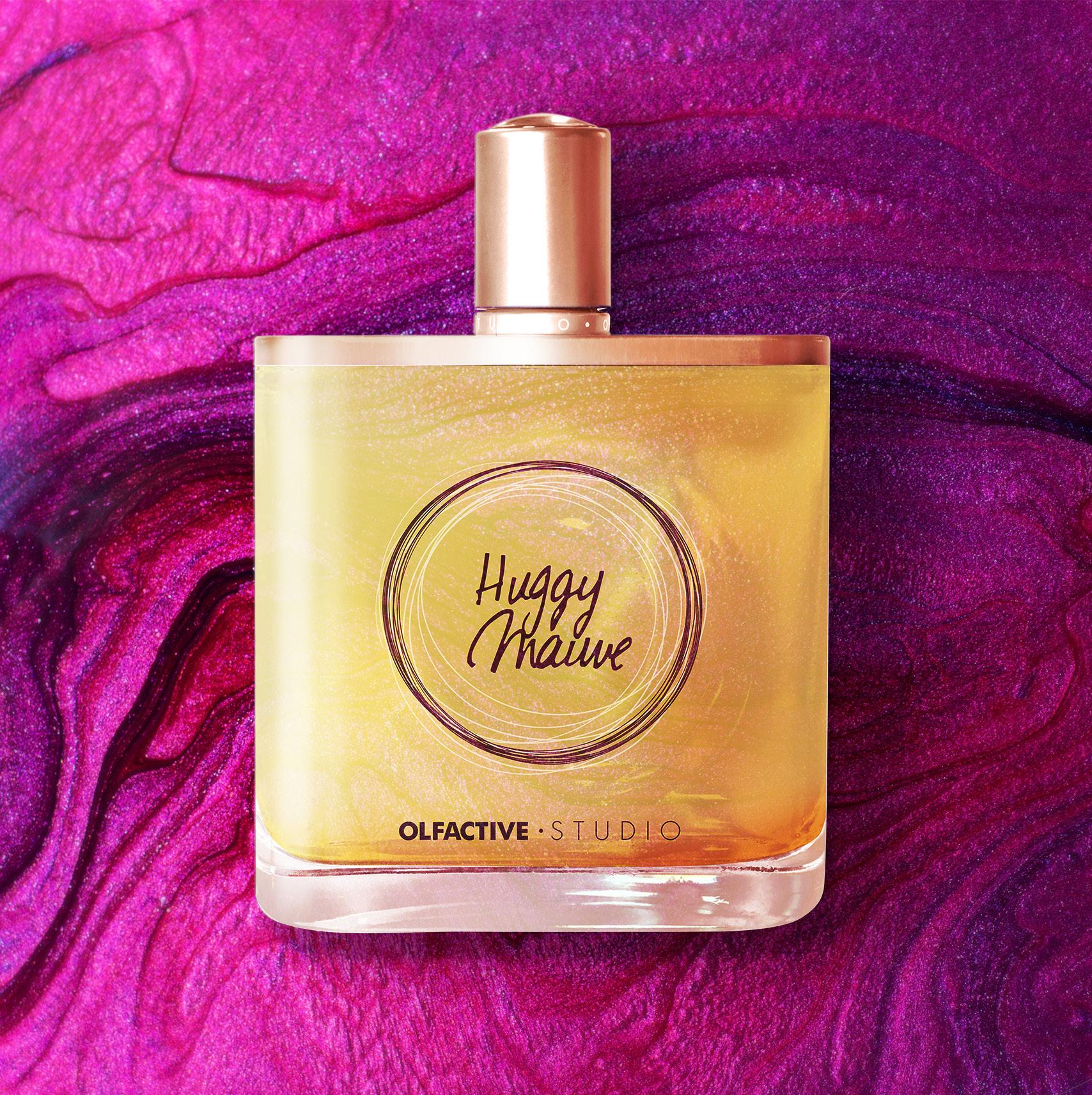
COLLECTION FÉMINITÉ
www. olfactiv estudio.com
Huggy Mauve / Parfumeur/perfumer: Cécile Zarokian
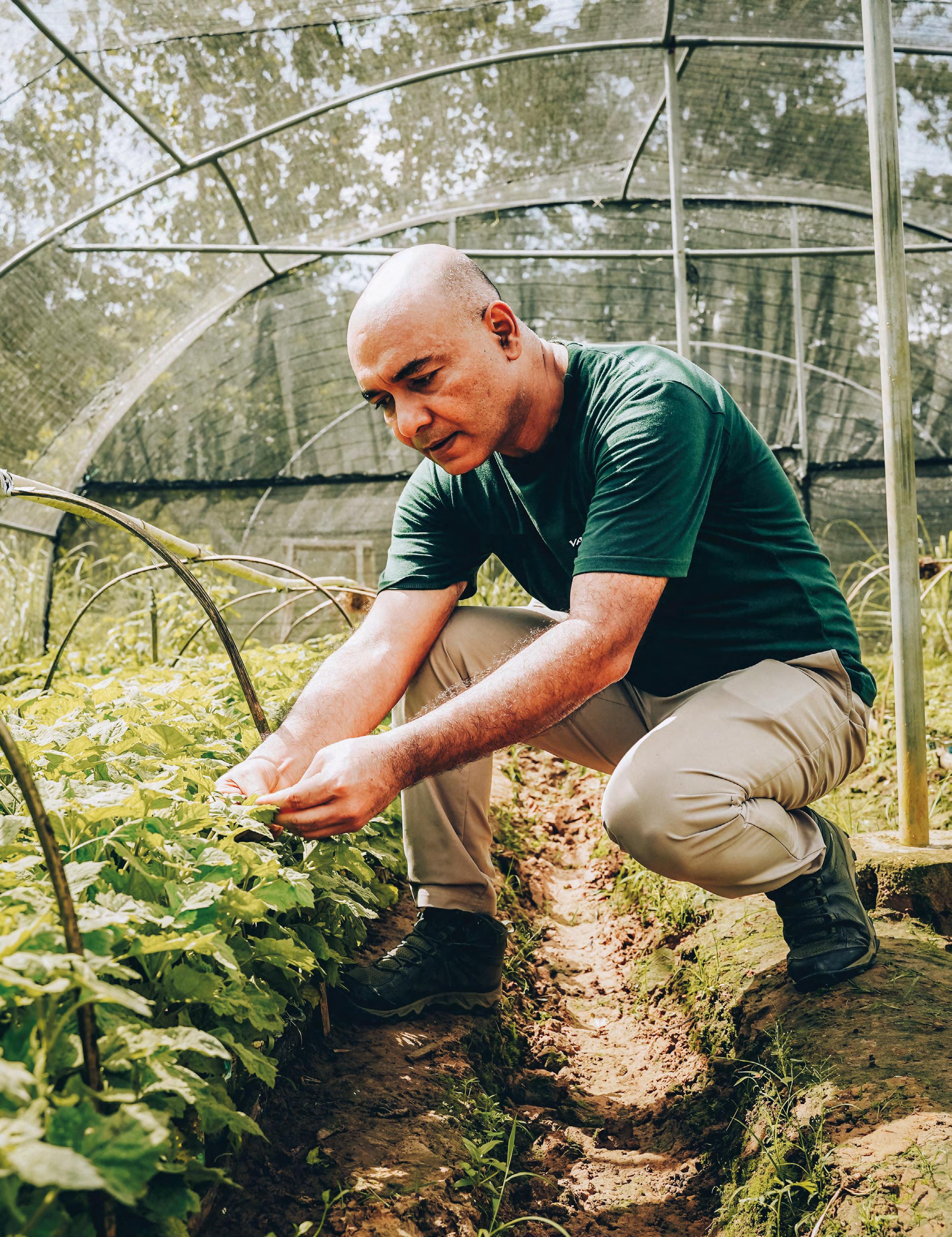
Van Aroma A FAMILY BUSINESS
By Guillaume Tesson
Van Aroma, based in Indonesia, is the world’s leading producer of patchouli oil and its derivatives. The young company has built a close relationship with local producers and is fully committed to respecting the land where its products are grown.
“It is not easy for patchouli to go back to where it used to be,” says Aayush Tekriwal, director of Van Aroma, which produces 650 to 800 metric tons of patchouli (of the 1,200 to 1,400 metric tons produced per year worldwide) in the form of an essential oil and deriva-
tives. “At the moment, more than 85% of the harvest comes from Sulawesi, one of the five main islands in the Indonesian archipelago. Tomorrow? Patchouli may potentially be cultivated in Borneo, or to the east, where a handful of farmers have started growing it.” He briefly outlines the challenges he faces every day: staying flexible and adapting to a crop that exhausts the soil, maintaining permanent contact with producers located hundreds of kilometers away from his office, all while developing ethical and sustainable standards.
“Van Aroma is a family business. It was started in 2006 by my father and his partners in a quest to become the trusted and most sustainable source of Indonesian origin essential oils and aroma chemicals. Prior to Van Aroma, my father traded spices and herbs globally, and Van Aroma made for a natural
course of value addition in his line of business,” Aayush Tekriwal explains. In addition to processing patchouli, Van Aroma produces other essential oils (citronella, cananga , nutmeg, clove, lemongrass, ginger and vetiver), as well as extracts (coffee, cocoa, ginger, black pepper and cubeb). By supplying these raw materials to the aromatherapy, perfumery and food sectors, the company has succeeded in making its mark in just 18 years. Van Aroma has 180 permanent employees in seven locations: two in Sumatra, three in Sulawesi, the headquarters in Bogor, near Jakarta, in Java, and one in New Jersey, USA.
One of the lightest patchouli oils on the market
“My shirts smell better before they’re washed because they’re drenched in the smell of patchouli by the time I get
9
Photo s : Van Aroma
PATCHOULI
IDENTITY SHEET
Latin name
Pogostemon cablin
Common name
Patchouli Family
Lamiaceae
ETYMOLOGY
From the Tamil paccai (“green”) and ilai (“leaf”), possibly via the English “patch-leaf.” The Latin term cablin is said to come from cablam, the name of the plant in the Philippines.
EXTRACTION
ESSENTIAL OIL NOTES
Woody, earthy, camphoraceous, smoky and liqueur-like with beetroot, apple, mildew and cellar facets, it can also evoke chocolate, leather, mint and licorice.
PATCHOULI IN 4 PERFUMES
PATCHOULI
Brand
Reminiscence
Perfumer Maurice Sozio Sortie 1970
This perfumery classic brings out every facet of patchouli, from its earthy humus dimensions to the more syrupy aspects, all swathed in balsams that add a gustatory, resinous touch.
PATCHOULI ABSOLU
Brand Tom Ford
Perfumer Richard Herpin
Launch 2014
Cypriol and guaiacwood heighten the damp, earthy facets of patchouli. An interpretation that stays true to the place where the plant has its roots, in the mountainside forests of Southeast Asia.
TEMPO
Brand Diptyque
Perfumer Olivier Pescheux
Launch 2018
Here, patchouli reveals its multifaceted personality: aromatic, spicy and languorous, it suggests a mossy chypre, ageless, quiet, with a dry, woody and vibrant sillage.
DANCE OF THE DAWN
Brand The Different Company
Perfumer Émilie Coppermann
Launch 2022
Harking back to the hippie era, the perfume evokes a feeling of happiness centering on a liquid, slightly salty patchouli which then unfurls with the contrast born between pepper and mandarin.
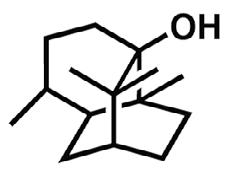
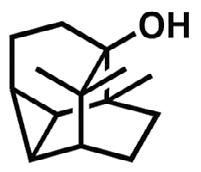
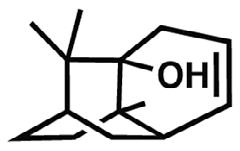


10
Steam distillation YIELD essential oil dry leaves and twigs 1 kg 50 kg
PRODUCTION PRINCIPAL COMPOUNDS Patchoulol Nortetracyclopatchoulol Norpatchoulenol Alpha-patchoulene Guatemala Rwanda Malaysia India Indonesia Madagascar RAW MATERIALS FOCUS For more information on patchouli mag.bynez.com
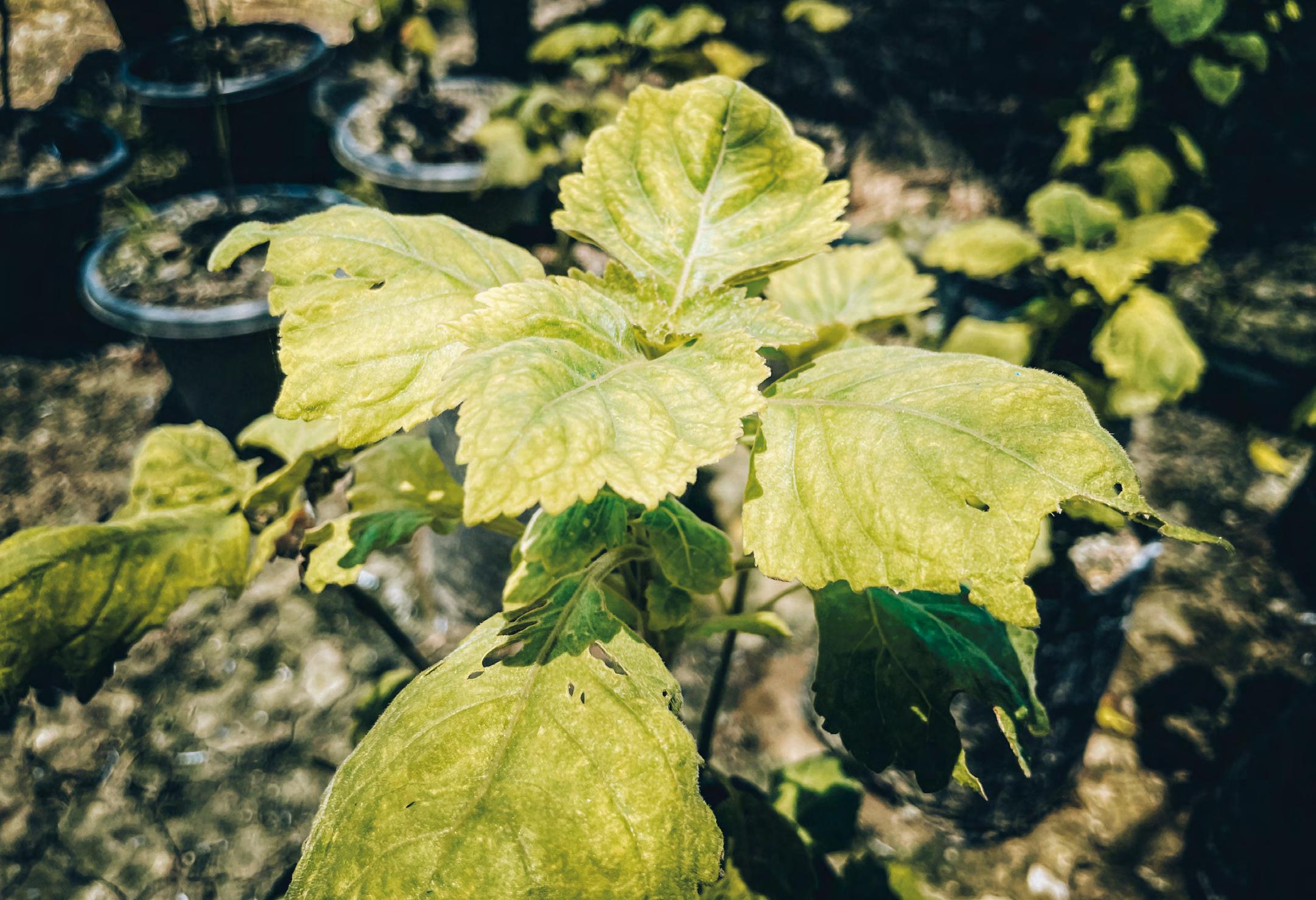
home,” smiles Aayush Tekriwal, who confesses that he prefers the testing sessions he loves to take part in to reading his emails and attending to the commercial aspects of the business. Van Aroma can deliver several standardized grades of patchouli by assembling essential oils from different production areas, with producers usually distilling directly at the farms. In terms of technical innovations, Van Aroma has developed one of the lightest patchouli essential oils on the market, without altering its olfactory properties, by means of a unique type of molecular distillation, classified as a company secret. It is also one of the only companies to produce heart fractions and pure patchoulol, the molecule responsible for the ingredient’s distinctive woody, camphoraceous notes.
Mutual aid and good practices on YouTube
The patchouli leaves are harvested by growers who have been given long-term
contracts. More than three-quarters of them are located on the island of Sulawesi, with the rest divided between Sumatra and Java. The average purchase price per kilo of essential oil varies between $48 and $60. “We don’t buy lower or higher, to avoid any devaluation or price hikes. As the leading producer and exporter of patchouli oil, we do our best to maintain stability in availability and pricing. Because we are not just buyers. Our work consists, upstream, in solving the farmers’ problems. Most of them practice mixed farming, with patchouli rarely exceeding 1 hectare. They need to be encouraged and supported.” The plant requires plenty of attention and is nutrient-hungry: In two to three years of cultivating patchouli, the soil is depleted. The farmers therefore need support so they don’t switch between crops or convert completely to a more long-lasting crop, such as banana, corn, ginger, turmeric and lemongrass. With this win-win
“We are not just buyers. Our work consists, upstream, in solving the farmers’ problems. They need to be encouraged and supported.”
Aayush Tekriwal, director of Van Aroma

approach to durability in mind, Van Aroma launched the Facebook group Nilampedia (nilam means “patchouli” in Indonesian) in June 2020. Created in partnership with Symrise, the platform for sharing information and ideas now has more than 2,000 members, almost all of whom are farmers. It is free and offers a discussion thread on good agricultural practices, with recipes for biodynamic fertilizers, advice on seedling care and the prevention of plant diseases, and more. A dedicated YouTube channel features all the video tutorials “made by farmers for farmers,” with suggestions that are easy to implement and low-cost. Beyond the educational aspect, the aim is to preserve the future of patchouli by respecting the soil and the ecosystem.
Giving back to the land by respecting it
Among a range of different factors, wastewater management is a key environmental criterion for a company like
Van Aroma. Wastewater is purified with a combination of bioreactors with aerobic and anaerobic bacteria processes, ozone processes, and then through carbon filters. In addition to daily analyses, the fish swimming in pools filled with the filtered water raise the alarm in the event of a problem. The company has implemented several practices to reduce its carbon footprint, using photovoltaics, heat exchangers and low fuel consumption, clean label supercritical CO2 extraction for spices and food-grade ethanol as a solvent. “This highly fertile, blessed, volcanic land gives us a lot. It’s only fair that we show it respect and give back,” concludes Aayush Tekriwal.
A dedicated YouTube channel features all the video tutorials “made by farmers for farmers.”
Beyond the educational aspect, the aim is to preserve the future of patchouli by respecting the soil and the ecosystem.
Van Aroma info@vanaroma.com www.vanaroma.com
Patchouli Reminiscence 1970
Patchouli antique Les Néréides 1980 – 2018
PATCHOULI IN NICHE PERFUMERY
Patchouli Molinard 1993
Patchouli Villoresi 1996
Noir Patchouli Histoires de parfum 2005
Patchouli intense Nicolaï 2013
Patchouli aromatique Lancôme 2019
Patchouli absolu Tom Ford 2014
Portrait of a Lady Frédéric Malle 2010
Patchouli Patch L’Artisan parfumeur 2002
Patchouli impérial Dior 2011
Tempo Diptyque 2018
Patchouli 1969 Maître parfumeur et gantier 2019
Patchouli ardent Guerlain 2020
Bornéo 1834 Serge Lutens 2005
Coromandel Chanel 2007
L’Heure défendue Cartier 2011
Monsieur. Frédéric Malle 2016
Carine Carine Roitfeld 2022
Patchouli Mania Essential parfums 2023 Dance of the Dawn The Different Company 2022
Patchouli de minuit Givenchy 2019
Patchouli Magnetik Maison Crivelli 2022
Click Song Une Nuit nomade 2022
AROMATIC LEATHER SPICY FLORAL AMBER
In Wadi Dawkah The Omani Grasse
By Béatrice Boisserie
In a corner of Arabia Felix, a place certainly visited by Sinbad the Sailor, lies the cradle of frankincense: Wadi Dawkah, a handful of square kilometers at the heart of the Dhofar region, a rocky land in the south of the Sultanate of Oman, where thousands of frankincense trees grow.
The blue Dhofar Mountains rise up in the distance. The ground is arid and bare. This is an isolated place, 45 minutes’ drive from Salalah along the road that leads to Muscat.
It’s an October afternoon and we are in Wadi Dawkah. A cool breeze blows, sparking the song of the paper-thin grey bark of the frankincense trees gently
rustling in the wind. A sound telling us that here on this 1,400-hectare site is where Hojari, the highest grade of all the frankincense varieties, is harvested.
The park, one of four UNESCO World Heritage Sites for frankincense, boasts the perfect climate for Boswellia sacra, the botanical name for the frankincense tree: a small knotty-branched deciduous tree whose aromatic resin was for many years traded at the same price as gold.
From June to September, during the khareef season, Wadi Dawkah is spared the heavy monsoon rains thanks to its location, protected from the desert heat of the Empty Quarter and far from the humidity of the Arabian Sea. A tree nursery, currently home to 5,000 saplings, has been set up at the entrance to the site. Other trees have grown naturally elsewhere in Wadi Dawkah, and tears of frankincense have been harvested in the wild here for several generations – some trees appear to be over
100 years old. In the past, groups of shepherds who grazed their sheep and goats in the area used to exploit the trees of Dhofar, tapping them for resin they then traded in the market for rice and dates. While barely structured, the harvesting system was highly codified, as it remained unaltered for close to 3,000 years.
Although Wadi Dawkah was recognized by UNESCO in 2000 for its trees bearing witness to an ancient heritage of growing frankincense in the region, the site itself remained essentially symbolic for over 20 years. The resin was not exploited for perfumery here until 2022, when the Omani Ministry of Heritage and Tourism decided to rekindle the sultanate’s frankincense industry and partnered with Amouage. This was when the site switched from being purely symbolic to becoming a place where frankincense resin would be transformed into an exceptional ingredient.
14
Photos: Amouage – Mulook Albalushi
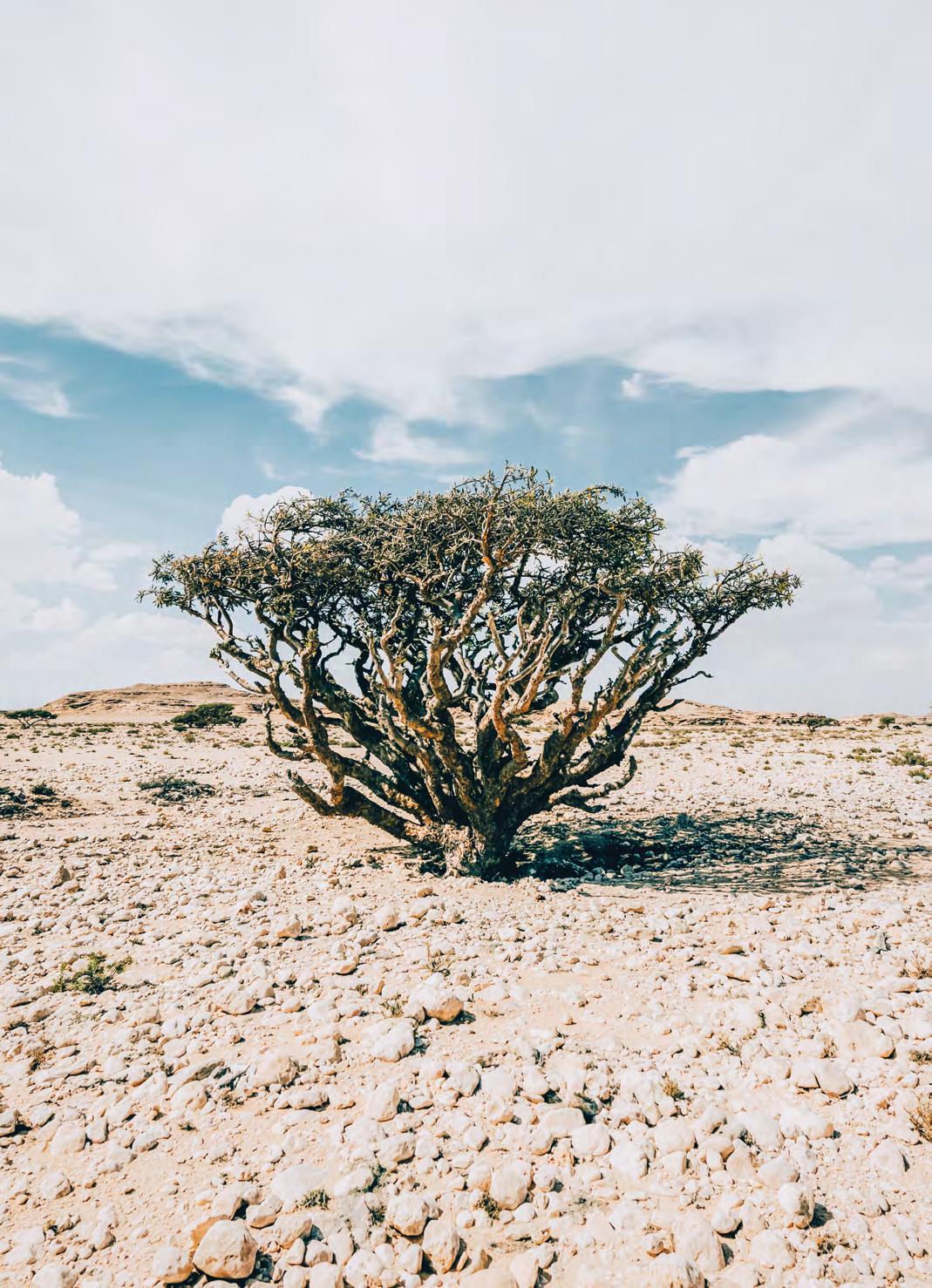
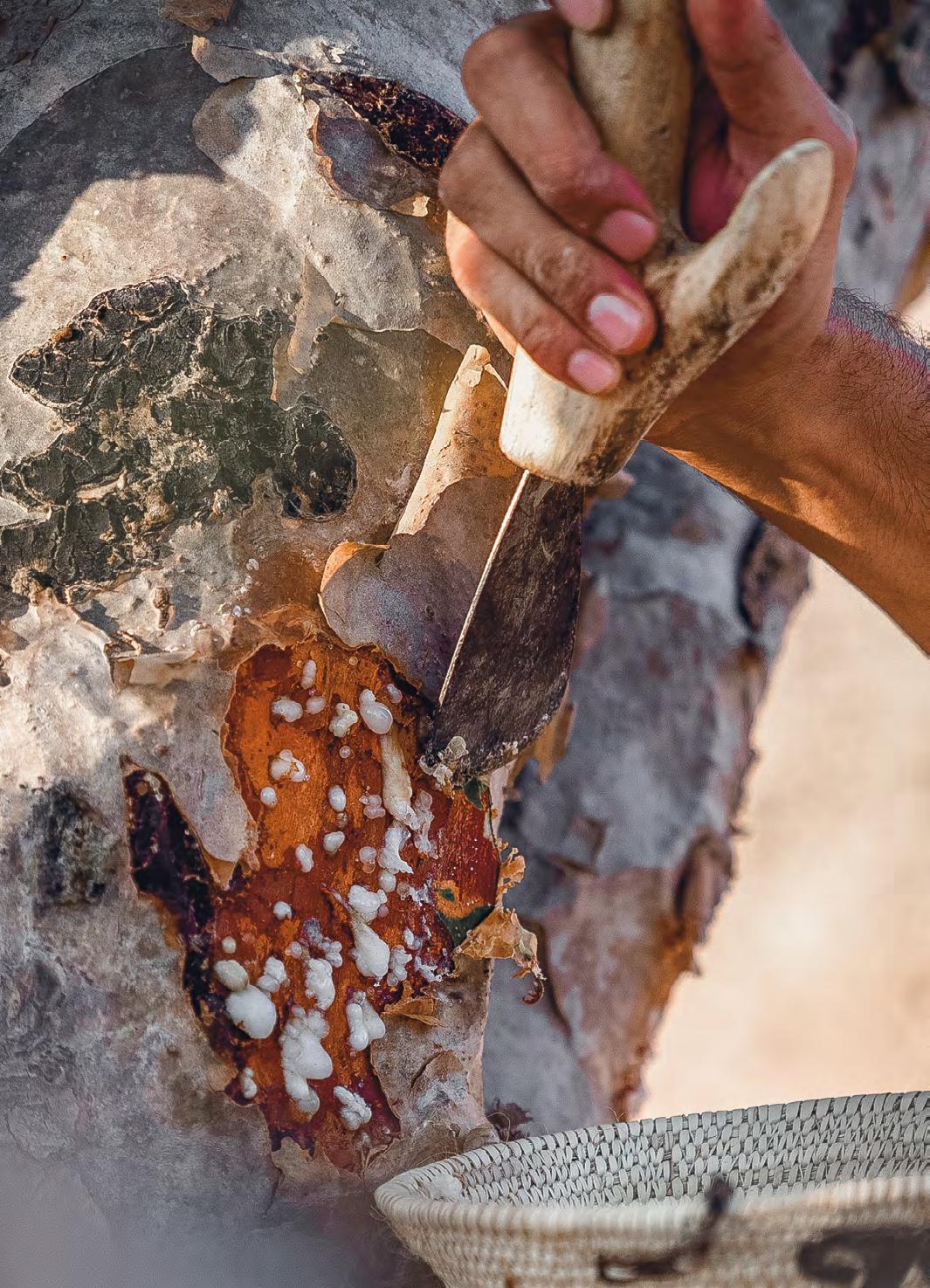
Today, the goal at Wadi Dawkah is to produce high-quality frankincense whose authenticity can be traced from tree to tear, then from resin to essence. This signals the development of a true Omani frankincense that is likely to benefit from a protected designation of origin. At the time of writing, seven key milestones needed to put this ambitious project into action have been identified.
Fencing the site
The first step was to protect the 15 or so square kilometers of Wadi Dawkah with fencing, essential to guarding the young trees from the appetites of grazing camels. These animals are capable of surviving for extended periods in arid zones simply by eating the leaves of frankincense trees. But the trees’ reproductive system relies on its leaves. Without leaves there can be no flowers or seeds, which in turn poses a threat to the survival of the species.
Forming a team
Rolling out a new management system at the site involved hiring a local team to care for and water the trees. Eight people were hired and then given training in sustainability to ensure traceability of the frankincense produced, a must-have for the industry. During the 1960s and 1970s, the discovery of oil provided more comfortable sources of employment than frankincense harvesting. Today, as the sultanate seeks to pivot away from oil and diversify its economic activities, frankincense may offer a significant potential for job creation.
Jointly defining quality standards
As part of the drive to prepare the ground for a responsible industry, a frankincense standard was created based on a combination of scientific references, input from older members of the local Bedouin community, and the desire of younger people to learn about working with frankincense. Specialists from
the Ministry, university researchers, perfume industry professionals and local people were all involved in a collective intelligence process designed to make the most of the site’s potential, working under the experienced eye of consultant Dominique Roques, formerly an ingredient sourcer for the DSM-Firmenich composition house.
Fitting the trees with chips
Amouage and the Ministry of Heritage and Tourism are both determined to create the Middle East’s first smart forest in Oman. Every tree will be fitted with a chip that will collect large amounts of data. This means that every tree will be better understood and treated as a unique individual. The data gathered will include tree height, watering frequency, exact position in the wadi, yield, harvesting dates, etc. QR codes will generate technical information about production, which will then be used to design an efficient and replicable farming
The scale of the project means that frankincense production will once again be central to Omani industry, as tourism is developed.
Modernizing logistics
The project includes setting in place the best working conditions for site personnel, providing workers with the right tools, and building tourism infrastructure and an on-site extraction unit. The scale of the project means that frankincense production will once again be central to Omani industry, as tourism is developed and local people are reintegrated into value creation.
Seeking improvements
method. Other data will be available online to help tourists better understand local biodiversity.
Improving watering
Another task is to gain a more detailed understanding of the water requirements of frankincense trees. Prior to 2000, the trees grew wild and self-regulated, benefiting from exceptional climate conditions that produced high-quality resin. The 5,000 or so trees planted since the inscription of Wadi Dawkah on the UNESCO World Heritage List have sometimes been overwatered, with the roots of a number of trees rotting as a result. When Amouage took over the site in September 2022, the irrigation conditions were redefined, and since April 2023 the frankincense trees have been watered less, with experts trusting the fact that they can doubtlessly manage by themselves. This change in irrigation method should result in larger quantities of resin in March 2024, peak harvest time. The watering infrastructure also had to be upgraded because there were leaks, and several kilometers of pipes were changed. Water was pumped on the site from a depth of 85 meters to meet the site’s needs.
There is no reason to think that the site will be error-free. “We can identify errors in planning and execution because of the data collection and transparency. We will learn and improve as we gain greater experience,” explains Matthew Wright, who heads the project for Amouage. The first trial harvest of frankincense for perfumery began in September 2023. Three full-time employees were hired to manage the trial. The goal? To characterize the olfactory profile of the frankincense obtained in Wadi Dawkah and determine whether there are different qualities of resin on the site. “We haven’t yet tested our harvest due to the low yield,” says Matthew Wright. “But we know that Najdi frankincense tends to have a high alpha-pinene content of over 70%. This high percentage is not in itself a proof of quality, but it distinguishes Omani frankincense from that sourced elsewhere. This frankincense is different, and that’s what interests perfumers.” The production at Wadi Dawkah is aiming for sustainability rather than quantity.
The goal is for Oman to become a model of excellence for frankincense, and the wadi a model that can be reproduced throughout the region. The initiative is part of the broader Oman 2040 program designed to diversify resources in the sultanate.
TRANSPLANTING TREES
For a long time, it was believed that Boswellia sacra could be neither cultivated nor moved. This reputation led to a monopoly on frankincense in the south of the Arabian Peninsula that lasted for many years. However, experts have recently realized that the roots of the frankincense tree grow horizontally rather than vertically, making the tree easily transferable. Wadi Dawkah will seek to provide sanctuary to frankincense trees affected by pollution, urban expansion and development. Trees will soon be removed and taken to Wadi Dawkah at a rate of 1,000 a year for 15 years. They will be replanted on the site 10 to 15 meters apart, the ideal distance for the trees to flourish.
THE LAND OF FRANKINCENSE
This cultural heritage site was inscribed on the UNESCO World Heritage List in 2000. The poetic name encompasses four extraordinary locations in the Dhofar Valley, a nature reserve in Southern Oman: the remains of the caravan oasis of Shisr (also known as Ubar); the affiliated ports of Khor Rori and Al-Baleed, outstanding examples of medieval fortified settlements, and Wadi Dawkah, home to the world’s largest forest of Boswellia sacra trees.
The UNESCO World Heritage listing requires the sultanate to take responsibility for site conservation and tree protection. It also opens the door to cultural tourism in Oman centering on frankincense. Thanks to exchanges with Sultan Qaboos University in Muscat, around 40 young Omanis have received tourism and architecture training, giving them the skills to protect and manage the site.
16
RAW MATERIALS

G R A S S E THE BLOTTERS KNOWLEDGE * - SCENTIS.FR - SCENTIS-SHOP.COM *le savoir-faire des touches à sentir


Celebrate International
21 March is International Fragrance Day - the first day of spring that also marks how essential scent and smell are to our daily lives.
Find out more about how the International Fragrance Association helps make fragrance safe and sustainable.
Une ode à la parfumerie au niveau mondial : Le 21 mars, nous célébrons la Journée mondiale du parfum. L’occasion, en ce premier jour du printemps, de comprendre combien les fragrances et les senteurs sont essentielles à notre quotidien.
Découvrez comment l'International Fragrance Association (IFRA) contribue à garantir la sécurité et la durabilité des parfums.


www.ifrafragrance.org
IFRA TO THE RESCUE OF OAKMOSS
By Jessica Mignot
Erwann Terrier
Oakmoss is often cited as a member of the family of much-missed raw materials. Its use is limited by a Standard established by the International Fragrance Association, better known by its acronym, IFRA. Although the restrictions are certainly complex to follow, blaming IFRA for them risks overlooking why they exist in the first place.
IFRA draws on over 50 years of experience in its various activities, including developing standards to guarantee the safety of perfume compositions used to formulate consumer products. It is an anxious time for fragrance houses whenever the IFRA Standards, published about every three years, are amended or updated. They then have between
two and 28 months to modify affected formulas (depending on the type of Standard) that are already on the market or are about to be. There is an ever-growing number of affected ingredients whose use has to be limited or halted. As of 2024, there are more than 200 Standards set out in 51 Amendments published over the years, compared to 36 in 1974. However, its constant vigilance means IFRA can guarantee that scented products are safe for human health and the environment. The organization relies on the work of the Research Institute for Fragrance Materials (RIFM), reviewed by an independent panel of experts to ensure its Standards reflect the latest scientific developments, including new data on molecules and the most recent risk analysis methodologies. Implementing a new Amendment involves a strict procedure that is inclusive and open to consultation by all stakeholders.
This scientific rigor gives IFRA the tools it needs to play another role in the industry – a role that is critical despite receiv-
ing less attention: advocacy toward key decision-makers to responsibly defend perfume ingredients. These ingredients, natural as well as synthetic, are covered by regulations on “chemical substances.” When the authorities regulate these substances, which feature in a great many applications, the question of how they are used is not necessarily asked beforehand: They might simply be heavily restricted or banned based on hazard considerations. In these instances, IFRA builds a case to demonstrate that the substance can be used safely if certain quantities or conditions of use are respected. The organization also raises awareness among the relevant authorities about the different repercussions their regulations can impose, by addressing their cascading impacts on the entire industry (from farmers to cosmetic product manufacturers) to assure that new rules are adapted to be workable for the sector as a whole. These are all facets of IFRA’s work that have come into play in the history of oakmoss.
19
Illustration:
CASE STUDY
OAKMOSS
We retrace the regulatory journey with Matthias Vey, IFRA Vice-President for Scientific Affairs.
Oakmoss is one of the allergens that since 2003 has to be included in the list of ingredients on cosmetic products sold on the market in the European Union. When did it come to be considered problematic?
Oakmoss, which is typically used in the form of its absolute in fragrances, has been one of the fragrance ingredients identified early by the dermatological community as a potential source of skin sensitization reactions if dosed at too high concentrations in finished consumer products. It is a constituent of the so-called fragrance mix 1, a mixture of fragrance ingredients created in the late 1970s based on the work by Walter G. Larsen in 1976 and used to screen patients undergoing a patch test investigation when seeing a dermatologist as a marker for fragrance allergy. The first industry risk-management intervention in the form of an IFRA Standard was issued in 1988.
Other amendments were then published. Why did the IFRA recommendations change?
The IFRA Standards were continuously adapted to reflect the latest scientific knowledge. Oakmoss was identified as a potent skin sensitizer, but as with any skin sensitizer, it is principally possible to determine maximum use levels for induction, which
would allow the majority of the population to use products containing oakmoss absolute safely without the risk of getting sensitized. Oakmoss absolute is a complex mixture of various constituents and actually over time it became possible to identify the various constituents of oakmoss absolute, and so those that would be the major driver for its skin sensitizing properties. This way we could set purity criteria by limiting the presence of dehydroabietic acid (DHA) and more recently of two constituents called atranol and chloroatranol (43rd Amendment, 2008). The latter ones have been restricted in a way that in combination with the stringent maximum use levels established by IFRA, the potential exposure to consumers can be considered a trace level.
The most recent IFRA restrictions of the oakmoss extract itself, issued as part of the 49th Amendment in 2019, are applying the Quantitative Risk Assessment approach 2 (or QRA2), a refined evaluation methodology.
Did government authorities recognize these restrictions? At the regulatory level, oakmoss is one of the materials that need to be declared as a fragrance allergen on the packaging of cosmetic products in Europe (now extended to over 80). Its role is to inform the consumer about its presence to allow them to avoid such products if they are sensitized. In 2012, the EU’s scientific advisory body issued an opinion suggesting a complete prohibition of atranol and chloroatranol, being concerned about the high elicitation rates of oakmoss. IFRA presented research
[the source of the 2008 Amendment] to demonstrate that the allergenic potential of oakmoss is mostly due to atranol and chloroatranol, and to show that oakmoss treated to reduce those two molecules down to trace levels significantly reduces the chance of skin reactions. Further research took place in close cooperation with dermatologists demonstrating that the new qualities also showed far fewer issues for already sensitized people. This scientific evidence helped the EU regulators to work toward a regulation prohibiting atranol and chloroatranol as cosmetic ingredients (beyond trace levels) in the European market, but still allowing treated oakmoss extracts – rid of those molecules – to be used. As is often the case, other regions carefully following what is happening in the EU have or are considering introducing the same regulatory measures.
The IFRA Standards were continuously adapted to reflect the latest scientific knowledge.
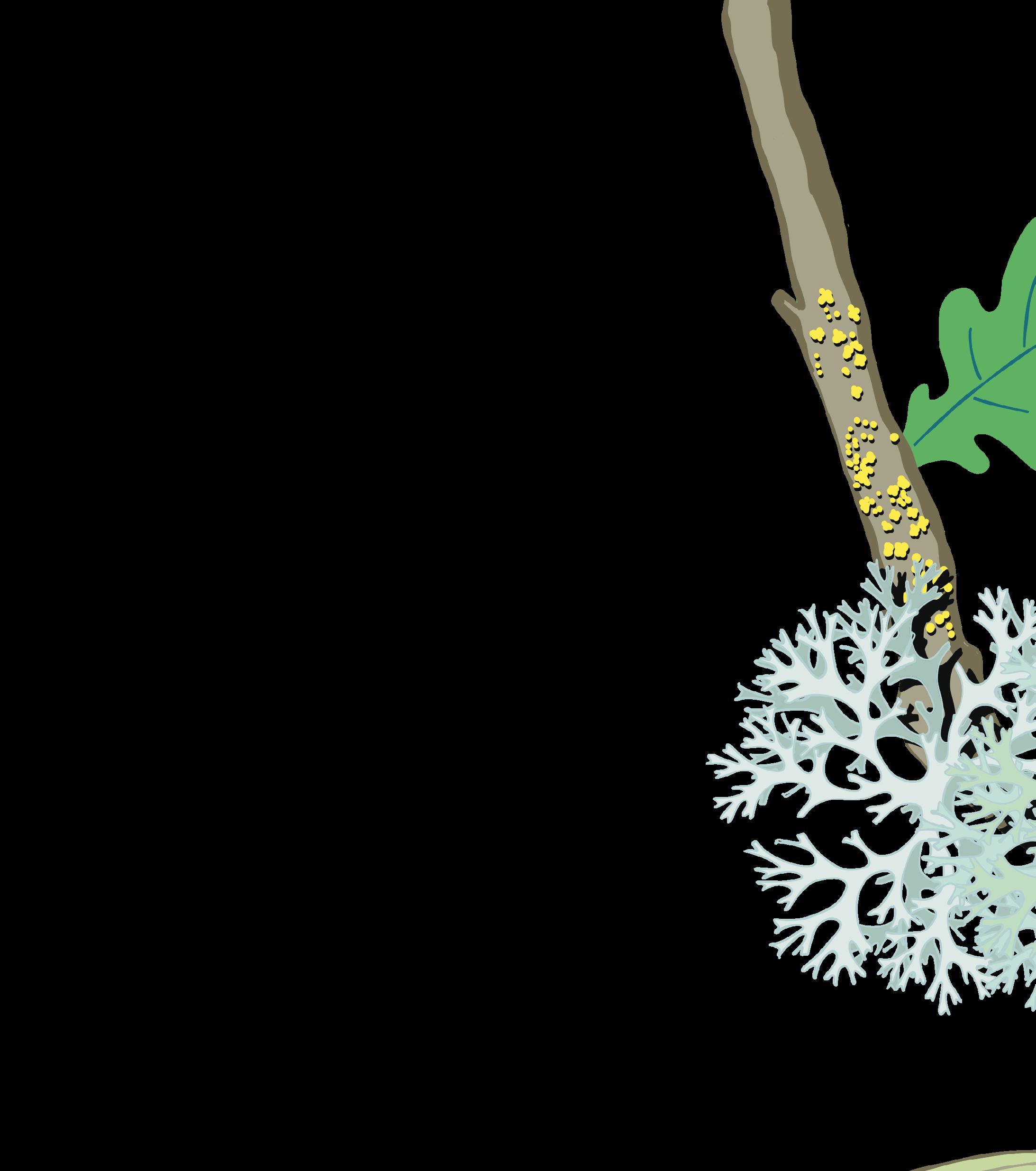
20
RAW MATERIALS
SUBSTITUTION
It is now, however, severely restricted and usually replaced by synthetic raw materials such as methyl 2,4-dihydroxy-3, 6-dimethylbenzoate, better known under its registered name Evernyl.

CULTIVATED LICHEN
Oakmoss is a lichen found on the bark of some trees and is cultivated particularly in the Balkans.
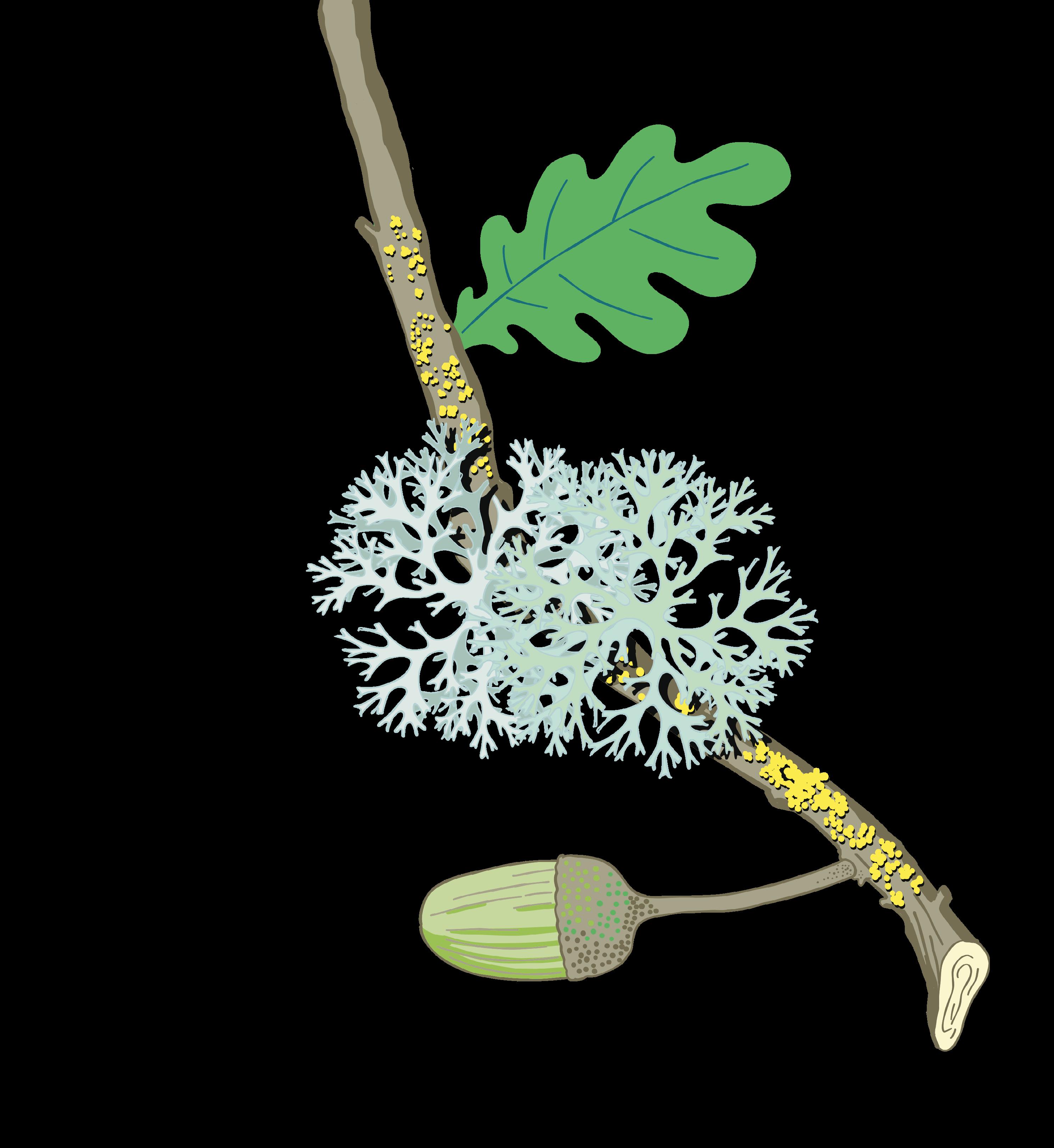
CHYPRE AND FOUGÈRE
Its absolute has been one of the key elements in chypre perfumes and fougère accords, to which it gives warmth and depth.
RISK REDUCTION
Since the allergenic potential of oakmoss is mainly due to atranol and chloroatranol, the EU authorizes the use of absolutes which contain only trace amounts of the two molecules, significantly reducing the risk of skin reactions.
21
RAW MATERIALS
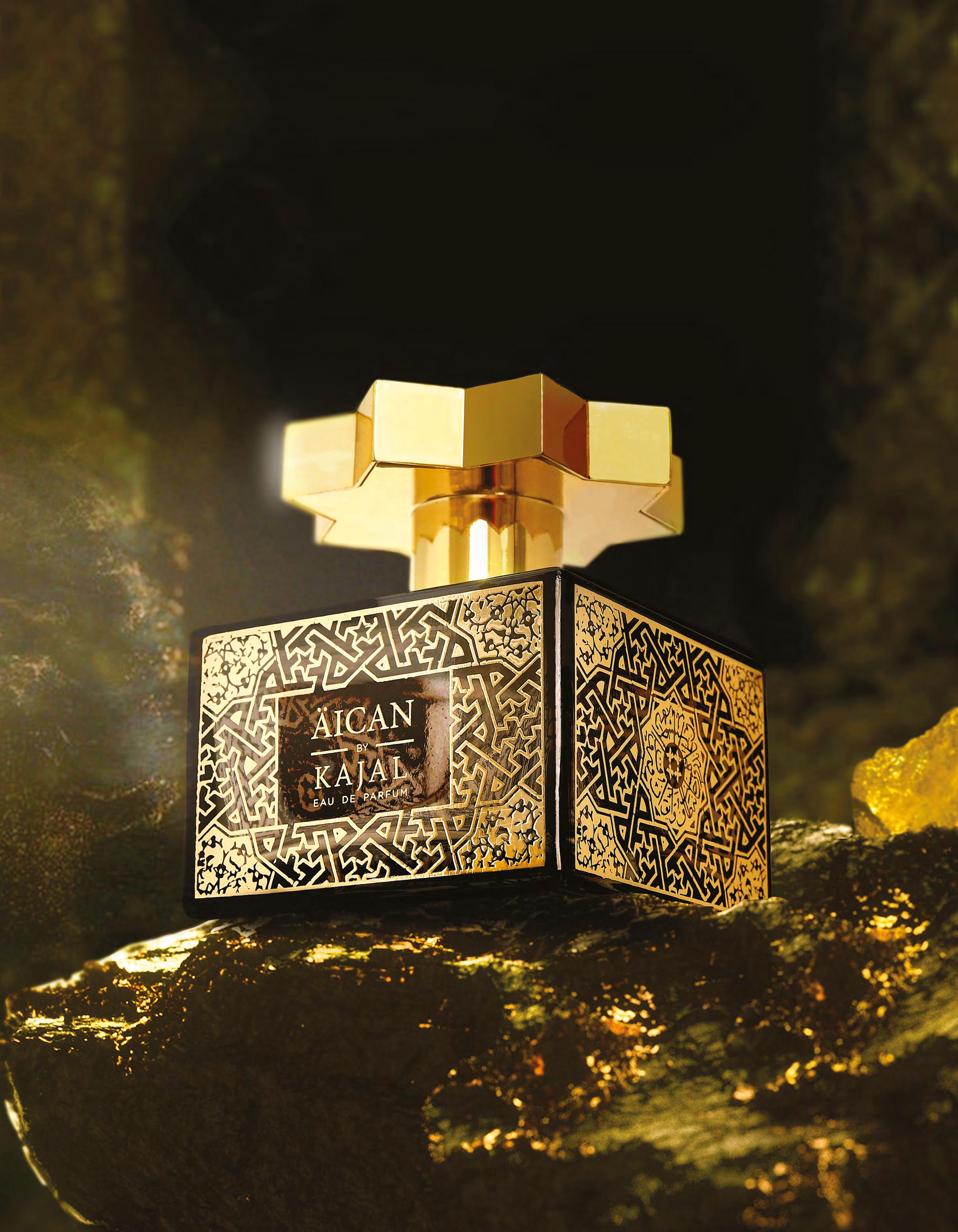

THE BEST OF NICHE, BY THE NEZ
I� the ai r
BRAND PORTRAITS THE SCENT, THE BOTTLE & THE STORY P. 29
DESTINATION
INDONESIA P. 40
23
EDITORIAL TEAM P. 24
THE BEST OF NICHE, BY THE NEZ EDITORIAL TEAM
Members of the Nez Review Committee meet four times a year to dip their noses into the latest perfumes to reach our offices. The fragrances are always blind-tested and their olfactory qualities carefully assessed. The process involves a lot of lively discussion: Opinions sometimes diverge, but our reviewers are often in agreement when it comes to the creations that really stand out. Because just like music, film and literature, perfume is more than a consumer product. It is also, for us, a creative work worthy of critical assessment.
Top 10 fragrances from last year.
Smelled and critiqued by:


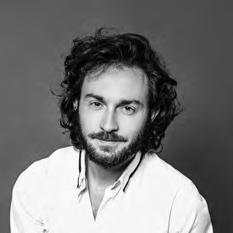

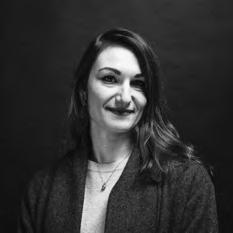

SMOKY SOUL
Brand Olfactive Studio
Perfumer Marc-Antoine Corticchiato
Type Extrait de parfum
Price € 68/15 ml, € 230/100 ml
Dark jam
For this new chapter of the “Sépia” collection, Céline Verleure has called on Marc-Antoine Corticchiato, founder of Parfum d’empire. The choice has turned out to be a fruitful one. The image of an apricot-tinged osmanthus flower, infused in a steaming cup of smoky black tea, gives off a sensation of striking, almost violent contrast that is seldom experienced. A potent cloud of black smoke, as thick and dense as a poisonous fog, fills the atmosphere and our nostrils. The Javanese vetiver that is blended with the black tea extract conjures burnt wood, an evocation of tarry cade juniper. The floral facets of osmanthus then emerge from this compact steam with their jammy, leathery tones, alongside a few jasmine and rose petals that tame this darkness. Wreaths of tea slowly develop their vegetal face, unfolding into a magnificent chypre accord. j.d.
24
Sarah Bouasse Jeanne Doré
Samuel Douillet Anne-Sophie Hojlo
Jessica Mignot Clara Muller
VIOLE NERE
Brand Meo Fusciuni
Perfumer Giuseppe Imprezzabile
Type Eau de parfum
Price € 220/100 ml
Purple Rain
A classic theme in perfumery, violet is often seen as the illustration of olfactory tenderness: It is pretty, well dressed and sometimes a little mawkish. While Viole Nere is indeed a violet, its beauty is skillfully constructed, as a flower whose every facet is exaggerated, including the darkest. We first meet an openly green, vegetal blackcurrant bud. Then, as iris adds its powdery, impeccably chic tones to violet, a bunch of floral notes turns up while remaining perfectly at the service of the protagonist, imparting it with abstraction and elegance. The composition evolves by gradually integrating woody, humid and chypre elements in a more austere finale. This “black violet” balances out its muted classicism with a ton and a half of spontaneous sincerity. A deeply human perfume, wonderful enough to make you sigh. s.d.
INDIGO SMOKE
Brand Arquiste
Perfumer Calice Becker
Type Eau de parfum
Price € 180/100 ml
A trip to China
Smoky notes aren’t always the easiest to wear. But Indigo Smoke’s unique softness makes it both comforting and comfortable. Calice Becker and Carlos Huber, the founder of Arquiste, drew their inspiration from the labor of the Chinese monks of Mount Wuyi who, over 300 years ago, created lapsang souchong by smoking the tea leaves they grew next to indigo shrubs with pinewood. The illusion is successful, captivating, even. The tea accord, with its bitter, earthy tones, is delicately smoked by a touch of pine tar. Soon, it is tinged with facets of mandarin and apricot reminiscent of osmanthus. The woody heart, both harmonious and contrasted, is caressed by the warmth of cinnamon and refreshed by camphoraceous, almost anisic cedar leaf. Indigo Smoke is a rich, voluble, remarkably long-lasting composition. c.m.
FLEURS D’ÉTÉ
Brand Bienaimé
Perfumer Patrice Revillard
Type Eau de parfum
Price € 150/75 ml
O tempora, o flores
An opening as juicy as freshly squeezed orange juice, where a few green notes stand as cut stems in limpid water, doesn’t leave much room for doubt: Soon, a great big armful of white flowers paints a retro décor, the signature of Bienaimé perfumes. The radiance of petals is soon powdered by a cloud of immaculate musks evoking baby products. The blend is completed by a smoothness that adds comfort to the composition, which unfolds on skin in a reassuring halo. A very beautiful tribute to classical perfumery, which we are grateful to certain artistic directions for allowing to exist. What shows through, along with great delicacy, is a form of modernity which translates here into creamy, slightly gustatory touches, as a counterpoint to more cosmetic facets. A delight. j.m.
25
SELECTION
OSMANTHE LIU YUAN
Brand Le Jardin retrouvé
Perfumer Maxence Moutte
Type Eau de parfum
Price € 120/50 ml
Leather bubble gum
After relaunching the compositions that made it a pioneer of niche perfumery in the 1970s, Le Jardin retrouvé offers a new creation around osmanthus. This tiny yellow flower, a symbol of happiness and prosperity in China, echoes the perfumer’s childhood memories in Provence, tinged with apricot-y sweetness. The naturally fruity and fleshy facets of osmanthus are emphasized. Meeting exuberant white flowers, between tuberose and ylang-ylang, they take on sugary bubblegum inflections. The clean, creamy bouquet then reveals leathery notes, stiffer and darker, that announce a chypre base and hold overly literal gourmand evocations at bay. a.-s.h.
ATTENDRE & ESPÉRER
Brand P. Frapin & Cie
Perfumer Meabh Mc Curtin
Type Eau de parfum
Price € 150/100 ml
A root liqueur
Echoing the poetic maxim Alexandre Dumas uses to conclude The Count of Monte Cristo – “wait and hope” –Frapin has devised a “gentleman’s” fragrance. Woody and gourmand, it stays true to the brand’s previous creations while introducing variations drawing on the universe of cognac and liquors. Haitian vetiver, so characteristic of the olfactory environment of the male wardrobe since the mid-20th century, takes up residence amid a rush of floral citrus fruits where lemon and orange blossom rub shoulders. But the root’s appetizing aspects quickly gain the upper hand: a walnut accord, subtly evoking the aroma of an oak barrel, teams up with vetiver’s natural groundnut facets. Black pepper and cardamom underline the surprising illusion of toasted cereals and cooked rice, as the composition settles into a lovely balance of freshness and sweetness. c.m.
DELHI
Brand Astier de Villatte
Perfumer Sylvie Fischer
Type Eau de parfum
Price € 185/100 ml
Indian cloth
As befits its name, Delhi conjures an array of materials characteristic of India. After a few minutes of a light note borne by bergamot, the dark opulence of a floral heart unfolds, around the vegetal suaveness of the champaca flower. At the same time, an accord reminiscent of Indian incense unfurls, in which woods and patchouli, in their seductive bitterness, dominate resins. It is here that the fragrance finds its long-lasting balance, which simply fades in intensity over time. Some may find that it reminds them too much of a home fragrance, yet Delhi is lovely on skin, like a soft cloth woven with a palette of warm tones, which you try to tease out with your nose. c.m.
26
SELECTION
LENTEZZA CAREZZA
Brand Filippo Sorcinelli
Perfumer Filippo Sorcinelli
Type Extrait de parfum
Price € 98/50 ml
Roman holiday
After having often explored the theme of incense, the organ player and fashion designer for the Vatican, Filippo Sorcinelli, chooses to lead us into a more vegetal register. Inspired by a sunny afternoon, this tribute to slowness takes on the form of a delectable stroll in a Mediterranean orchard. A vivid stroke of bergamot is the prelude to a cornucopia of green, in all its nuances: raspy with tomato leaf, fleshy with fig, fruity with blackcurrant leaf, crunchy with bell pepper, tart with green apple, anisic with fennel... Gorged with a thick, suave sap with discreetly vanillic accents, this succulent harvest is finally set down in the shade of tall, dry grasses whose scent evokes tonka bean and tobacco. It is now time for a nap. a.-s.h.
PERSONNE
Brand Iconofly
Perfumer Alexandre Helwani
Type Eau de parfum
Price € 150/50ml
Back to Ithaca
Could an olfactory reading of the Odyssey be imagined? That is the challenge that Olivia Bransbourg set out to meet, as part of a project initiated by the artist Laurent Derobert, aiming to collect all the plants mentioned in Homer’s book. After “Attache-moi,” she has therefore launched a second Iconofly collection, “Les Jardins promis,” inaugurated by this composition by Alexandre Helwani retracing Ulysses’ journey throughout the Mediterranean. After a subtle aromatic opening blending laurel, myrtle and rosemary, a potent, boozy immortelle blooms in the heart of the fragrance, bolstered by spicy accents of fenugreek. The tiny golden flower is adorned with fruity, candied nuances of date, fig and carob, conjuring an ancestral potion, before melding into the mineral, salty facets of oakmoss and algae, echoing the rocky shores of Ithaca. a.-s.h.
RAUQUE
Brand Roberto Greco
Perfumer Christopher Sheldrake
Type Eau de parfum
Price € 230/80ml
Floral skin
Roberto Greco is a talented photographer. But as an artistic director, he’s also got a pretty deft hand... For his third “odorant object,” this perfume lover, trained as a horticulturist, has not only managed to get his hands on Christopher Sheldrake (Chanel’s genius in the wings), but also to create with him this little oddity, along with a series of images. Blending humans and flowers, his visions of captive bodies have inspired a superbly unsettling composition in which the animal and the vegetal blend in masterful soft focus. Dense, bountiful, it is a quasi-living form teeming with the powdery texture of cassie with its honeyed accents, the raspy verdancy of blackcurrant bud, velvety osmanthus with its candied apricot accents, and a bestial weft of leather and humus that literally sticks to your skin. s.b.
27
SELECTION

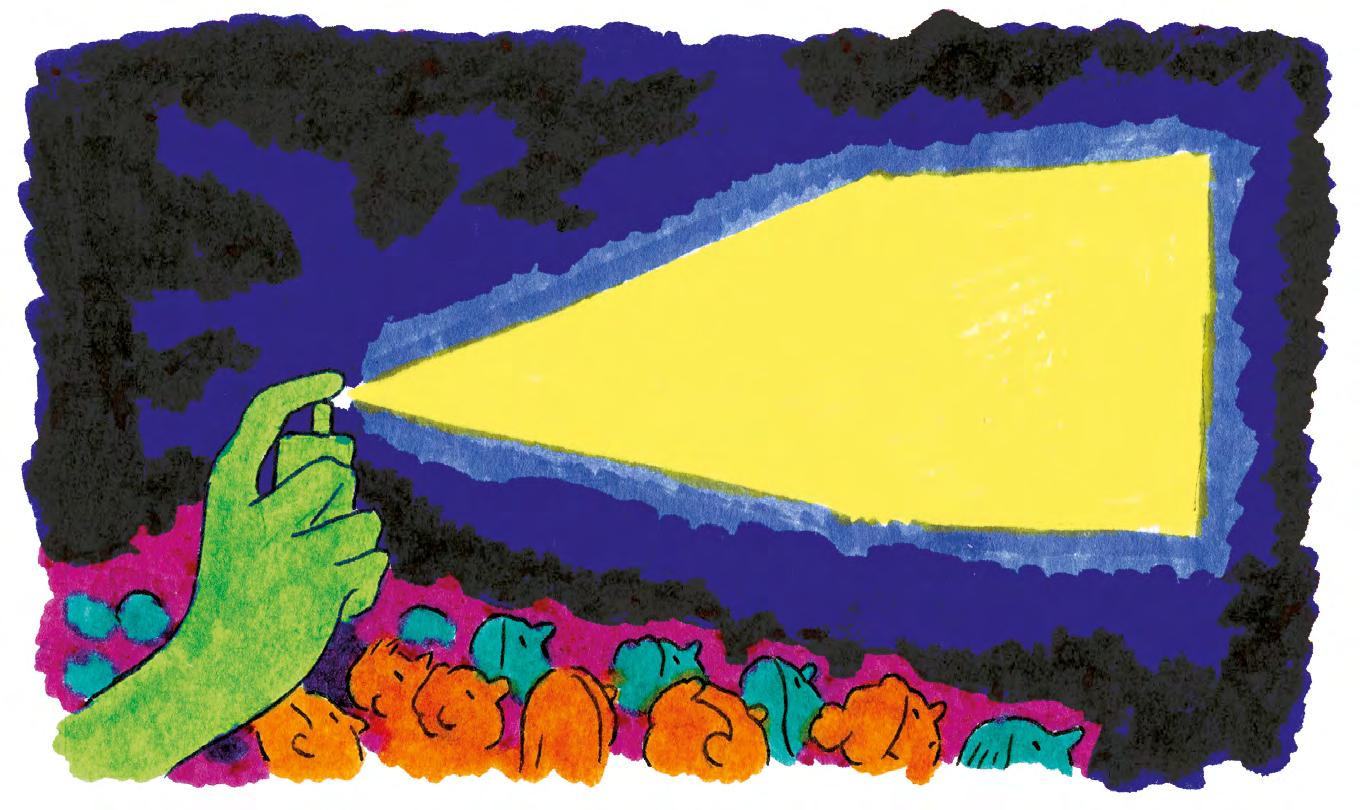
Brand portraits THE SCENT, THE BOTTLE & THE STORY
By Delphine de Swardt Illustration: Simon Roussin
Storytelling, so we are told, is all around us. And the world of perfumery is no exception. It’s who we are: We need narratives to understand the world and, most importantly, to give it meaning. Even more so when we encounter a fragrance, since we have trouble gauging olfactory artifice in the same way as the stories we find easier to grasp. The story of a scent’s genesis and the story it diffuses intertwine, creating a narrative within a narrative. Why the incarnation of this new perfume? The reasons are multilayered. We find ourselves in a story-as-framework, setting the scene for perfume’s reception. New themes and standards have
emerged and taken root with the niche revolution. The spotlight is on the art of the perfumer, who is sometimes also the brand founder, making it central to the present panorama. Perfumers’ creations are lauded as artistic works with an origin story worthy of telling. In today’s world, the result is no longer the only thing that counts; method, message and manifesto are important too. Synesthesia comes into play, making perfume resonate with other creative territories. Perfume stands back, giving the floor to inspiration, the voicing of biographical memories. Above all, it is a story that holds other stories within it. A core tenet of the artistic paradigm is that nothing is contingent on it; everything is a matter of choice. Even the
ingredients, which sometimes drive the composition, can infiltrate the narrative discourse, which then also becomes an olfactory description. This raw material rhetoric means that origin, sustainability and fabrication serve as proof of pedigree. A second narrative emerges in counterpoint. This is what’s known as reverse storytelling. Users, emboldened by social media, have now become storytellers too, personalizing their version of the story as they seize the chance to talk about themselves (everyone’s favorite topic). “With this scent, I feel/am/believe…” serves as the phraseology which primes the pump for articulating their truth. Perfume today is more than a source of stories: It has become a root of discussion.
29
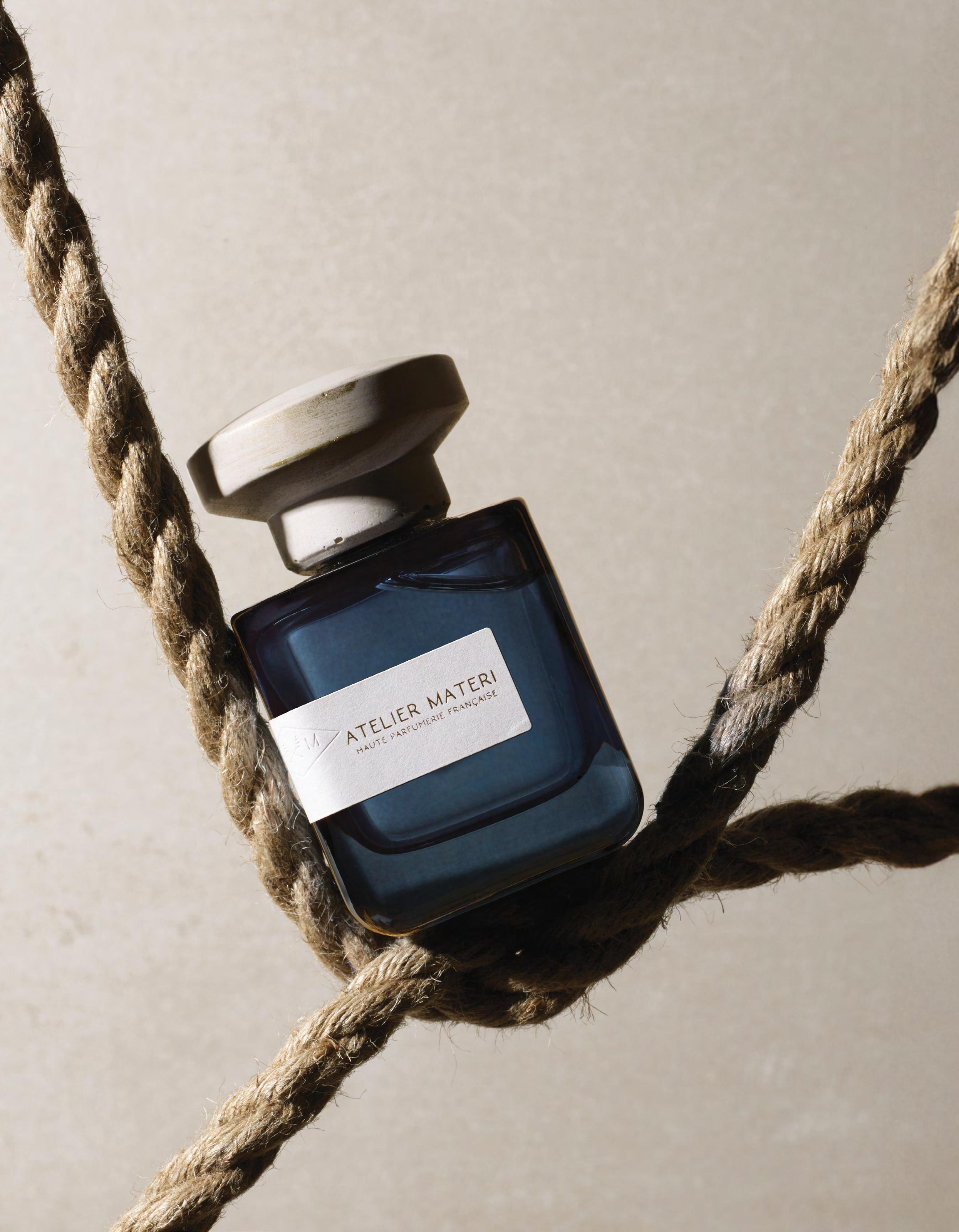
THE
A NEW LUXURY LE
LUXE
CHOICE OF
CHOIX D’UN NOUVEAU
Atelier Materi MINIMALIST
ODES
Véronique Le Bihan has been cultivating a discreet and elegant luxury portfolio since 2019. Her leitmotif? Nature at her rawest and wildest, and a distinctive artisanal touch.
After spending a decade developing cosmetic products and fragrances, Véronique Le Bihan wanted to give herself “time to be creative, in touch with nature and humans.” In Brittany, where she grew up, the word for material is materi. When she founded Atelier Materi in 2019, she wanted to hone marvelous ingredients, “like a ceramicist works with clay from the land” – land that is wild, protected – harnessing a minimalism that isn’t afraid of details. This source of inspiration permeates each of the nine fragrances in her collection. “I wear a perfume for myself, not for other people. My creations are designed to flourish in a private space,” explains Véronique Le Bihan. Unsurprisingly, she captures some of her ideas with her nose pointing toward the Pointe du Raz headland in southern Finistère. The memory of her grandmother giving off wafts of patchouli as she prepared a chocolate cake and her grandfather smoked in the next room gave her the inspiration for Cacao Porcelana But most of the time a simple sensation is enough. It might be the “sensuality of a white shirt” embodied by the ambery, musky facets of Bois d’ambrette Poivre pomelo, on the other hand, is an olfactory translation of David Hockney’s painting Portrait of an Artist, a man standing on the edge of a swimming pool watching a swimmer with a lush green landscape in the distance. “An ode to vibrant and sparkling joy” borne aloft by the fresh spicy notes of Timut pepper.
In early 2024, the brand launched Cèdre Figalia: Perfumer Céline Perdriel responded to a brief featuring the image of a tree seen in all its forms, from sap to fruit, by swathing fig leaf in green facets. The bottle is “deep blue, the color of the ocean after a storm.” The concrete cap has the look of a stone polished by sea spray, suggesting the mineral nature of cliffs. Each piece is handmade in Paris and cast in a silicone mold, leaving air bubbles visible to form random patterns. The bronze patina is added manually, bringing out the beauty of the object as a whole. Each bottle tells its own unique tale, in its own way. A magnet for the public: The brand founder reports that amid a forest of glass in the store, customers often discover Atelier Materi thanks to the distinctive little bottles. G.T.

CACAO PORCELANA
Perfumer Marie
Hugentobler
Launch 2019
The fragrance unfolds with a syrupy, gourmand opening before revealing the addictive bitterness of white cocoa underpinned by powdery, woody notes. Mild tobacco, patchouli and sandalwood bring the finishing touches to a voluptuous, sensual creation.
NARCISSE TAIJI
Perfumer Marie
Hugentobler
Launch 2021
The perfumer orchestrates a contrast between luminous facets imbued with the vegetal, damp freshness of a freshly picked flower and the dark, animalic aspect of the narcissus, bolstered by hints of leather and patchouli.
CÈDRE FIGALIA
Perfumer Céline Perdriel
Launch 2024
The vegetal notes of spinach and maté partner with the lush green, crunchy accords of fig leaf while cedarwood unleashes its power, bringing depth and warmth to the fragrance.
Atelier Materi atelier-materi.com @ateliermateri
31
© Marion Colombani
ATELIER MATERI IN 3 PERFUMES
BRAND PORTRAITS
Olfactive Studio WHEN THE EYE SPEAKS TO THE NOSE
Céline Verleure has been weaving narrative ties between perfumery and creative contemporary photography since 2011. The brand founder tells us about her working method and her latest collection, “Féminité.”
The encounter between eye and nose comes very naturally to her: When she was working at Kenzo Parfums, her briefs took the form of photos rather than words. “Certain images immediately conjure up an olfactory feel. The one behind Ombre indigo features a figure plunged into darkness with orange trousers draped over her shoulders,” she explains. In response to the photo, she worked together with Mylène Alran on smoky notes shot through with saffron. But the process is not always so literal. Although Autoportrait is inspired by a landscape of sky and water, it is not especially aerial or watery. What the photo suggested to Nathalie Lorson was a fairly dry, almost lunar environment, steering her toward cedarwood.
Céline has long been passionate about images, sometimes falling in love with one at an exhibition or gallery, as she did with Redwood Alien, “a magnificent forest of sequoias which immediately spoke to Bertrand Duchaufour for Woody Mood.”
Occasionally the photo is only chosen afterwards. Sidonie Lancesseur’s Lumière blanche, for instance, was triggered by the name, even before Céline came across the pure white rock photographed by Massimo Vitali in Sicily. The brand founder orchestrates an encounter between photographer and perfumer to make sure the tale of each photo gets told: “Even if it isn’t a physical meeting, I always try to transmit the
photographer’s emotion to the perfumer. They then have carte blanche, including in their choice of ingredients – but the result has to please me!” She also says she likes to switch between perfumers depending on the project, all the better to marvel at their diversity and creativity. Cécile Zarokian, in her first collaboration with the brand, based the latest collection, "Féminité," on a new concept: “Niche perfumery has gone all out for unisex perfumes, so I felt like swimming against the current with creations devised by women for women, championing a joyful femininity, a form of sisterhood.” The three perfumes will be unveiled at Esxence. Sister Oud is the first composition from Olfactive Studio dedicated to oud, an ingredient it “tackles with a distinctive and sensual approach thanks to various spices.” Huggy mauve delivers the comforting, addictive feel of marshmallow, sweet but not sugary, endowed with a strong personality. And Loving Sense offers “a gorgeous contrast between a mineral, invigorating incense and a rounder feel built on fig milk and milky woods like sandalwood.” A.-S.H.
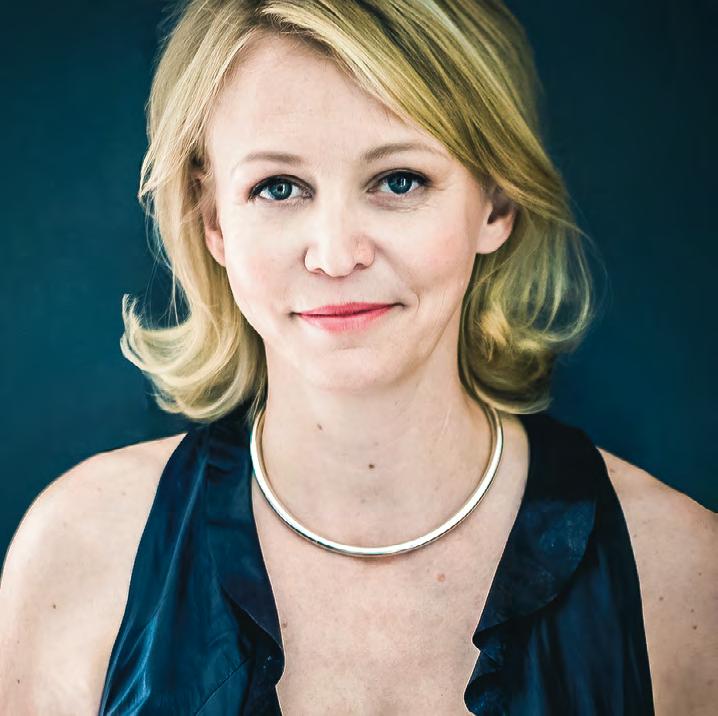
OLFACTIVE STUDIO IN 3 PERFUMES
CHYPRE SHOT
Perfumer Bertrand Duchaufour
Launch 2018
Warm and elegant, a chypre modernized by hints of spice and coffee, softened by syrupy ambery notes.
IRIS SHOT
Perfumer Dominique Ropion
Launch 2019
Heralded by a spicy wisp of cardamom, the majestic rhizome wraps itself in powdery almond before melting into velvety woods.
HUGGY MAUVE
Perfumer Cécile Zarokian
Launch 2024
The loving olfactory embrace of a soft cloud drenched in orange blossom, vanilla and enveloping musks.
Olfactive Studio olfactivestudio.com @olfactivestudio
32
© Luc Lapôtre
BRAND PORTRAITS
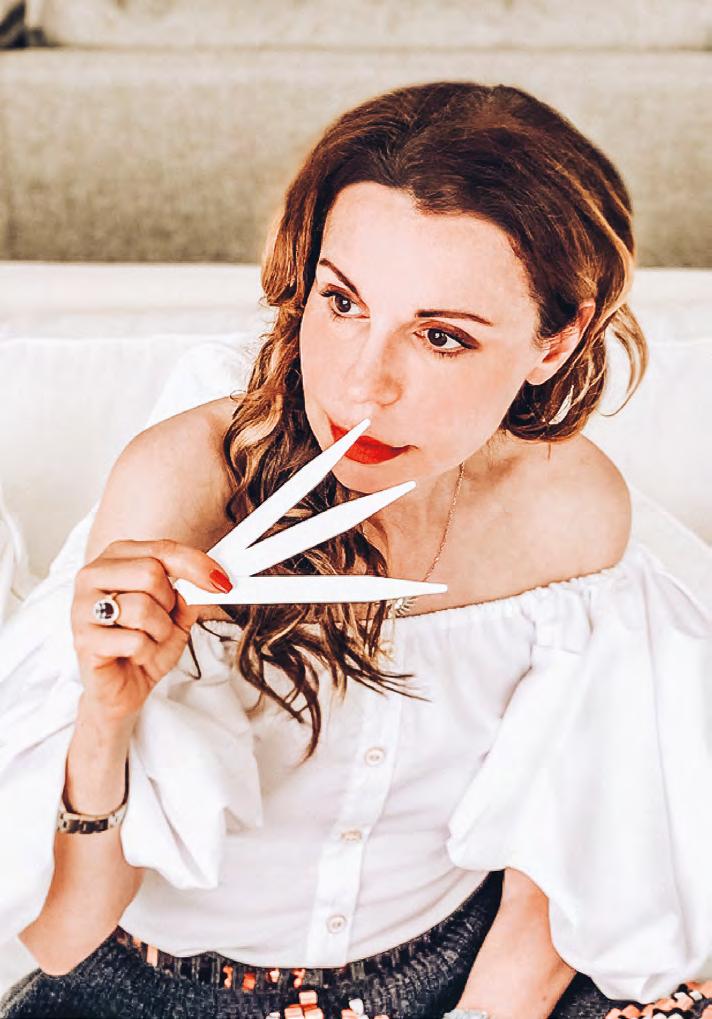
Len Fragrance PERFUMES FOR PARADISE
An olfactory translation of love stories – some real, some imagined –under the guidance of an inspired creator.
It’s the late 2010s. After years spent writing about other people’s fragrances, Jelena von Olnhausen – editor of a lifestyle magazine featuring wine, perfume and more – decided she wanted to create her own. The Swiss creator with Russian roots wanted to embed them in a narrative, so she drew directly on the history of her ancestors: “Over two centuries ago, one of my foremothers from Moscow, a countess, fell in love with a certain François de la Lènes, who gifted her perfume formulas. I came across them by accident, when I was putting away some old papers.”
Inspired by the family legend, she founded Len Fragrance in 2019: Each love story would correspond to an olfactory
impression. Perfumer Michel Almairac, from Robertet, agreed to design the collection’s first six creations. He uses the woody, vanilla and floral notes of Jeux dangereux (which won a FiFi Award in Germany) to portray the intriguing charm of a female secret agent, while the woody-ambery musk accord of Crystal Bomb evokes an encounter in modern-day Dubai with an Egyptian princess from antiquity. Jelena von Olnhausen usually finds narrative inspiration in her daily life as a globe-trotter. A flight onboard an Airbus A380 from New York sitting next to a professional poker player who could have been straight out of a movie led to Try to Follow Me, a “very masculine” fragrance centering on cedar and vetiver. Following Almairac’s contribution, the entrepreneur submitted her stories to the creators at Luzi. For Last Call to Ibiza, Mark Buxton draws on a quatrain by Nostradamus claiming that Ibiza will be the Earth’s final refuge, where people will still be able to love each other, to conjure up a carefree feeling perfect for dancing, expressed by coffee, white flowers and marijuana notes. “The ingredients come from my memories, since I spent lots of time on this Balearic island with my parents when they were into hippie culture,” explains Jelena. The only exception to the principle of paying tribute to idyllic spots is the fragrance Sense of Burj al Arab, a collaboration with the famous Dubai hotel designed to look like the sail of a ship. The vast scale of the hotel inspired Sidonie Grandperret to create an accord where Thai oud mingles with amber and whisky. Right now, the brand’s biggest market is Germany. “I’m well established in Switzerland, New York and Russia, and I’m hoping to add Paris to the list.” In the meantime, she is presenting six new creations at this year’s Esxence show, all linked to film, an endless source of fictional and real romances, like the one embodied by Marilyn Monroe and Joe DiMaggio. The never-ending wonder of love… G.T.
LEN FRAGRANCE IN 3 PERFUMES
JEUX DANGEREUX
Perfumer Michel Almairac
Launch 2019
Sparkling citrus introduces a floral rose and jasmine heart that gives way to woods enveloped in creamy vanilla.
JUST ROULETTE
Perfumer Michel Almairac
Launch 2019
A woody sillage underpinned by cedar, vetiver and moss and swathed in the powdery, buttery facets that orris brings.
LAST CALL TO IBIZA
Perfumer Mark Buxton
Launch 2021
A hippie touch rooted in the unexpected marriage of marijuana and roasted coffee, teamed up with fruity raspberry and peach notes languishing on a floral accord.
33
Len Fragrance len-fragrance.com @lenfragrances BRAND PORTRAITS
© Gerasymets
Anna
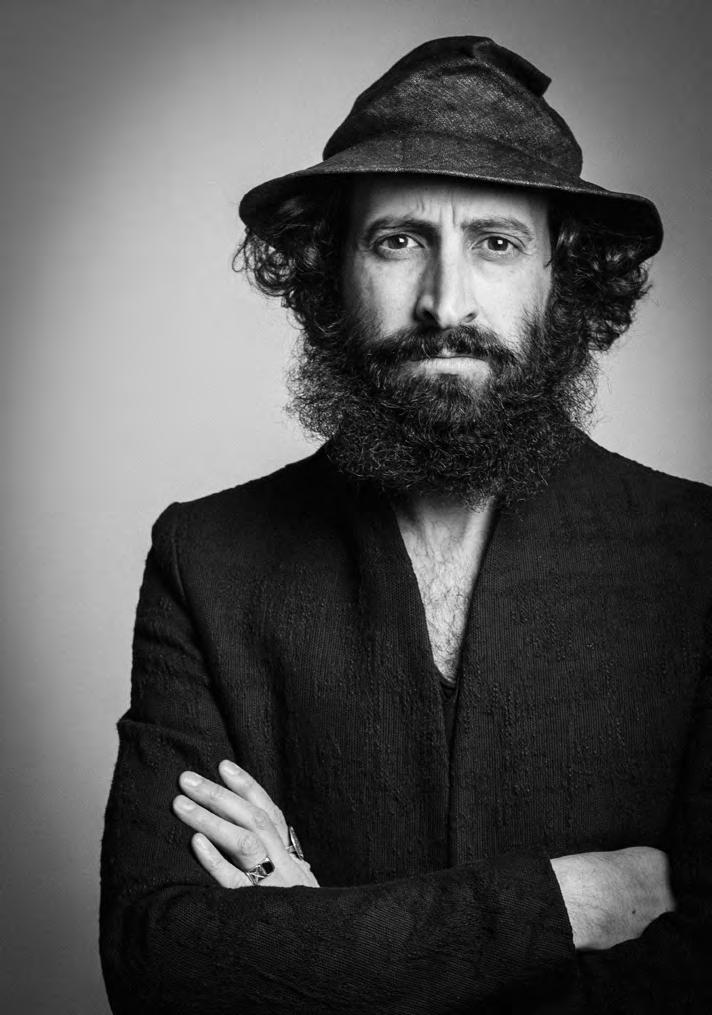
Meo Fusciuni
PERFUME AS A LIFE STORY
Perfumer Giuseppe Imprezzabile and creative director Federica Castellani founded the Italian brand Meo Fusciuni in 2010. Its mission? To explore the physical and spiritual journeys of the soul with perfume as the messenger.
The brand founder is a trained chemist and herbalist but describes himself first and foremost as a lover of nature, aromatic plants, the subtle bond linking art and science, which he calls alchemy. He feels that perfume is the perfect and beautiful illustration of his introspective work.
“Meo Fusciuni is the fruit of the upheavals I’ve experienced in my life, of a deep-reaching passion for natural medicine and an innate curiosity about
the journey as a means of discovering others and ourselves,” says Giuseppe Imprezzabile.
Reflecting this idea of looking within, the creative process always starts from a solitary impulse. Anything from a text written at the worktop to getting home after a trip can give birth to an idea for a fragrance. The Meo Fusciuni collection is made up of chapters with names like “Cycle of Poetry” and “Note di Viaggio.” Each concept involves research into the very best ingredients, which will illustrate or, rather, materialize the idea. And it can’t be hurried, which means this phase can take almost a year: “My goal is to cultivate a very close relationship with the ingredients and with their natural environment so that I can recreate what my head and heart ask of me.”
In its quest to transport us to faraway worlds, whether on earth or in our minds, the brand offers a range of 15 fragrances, operating as memories steeped in emotion as well as a unique olfactory experience: of a fleeting moment in time, a state of mind. The aesthetic exploration Meo Fusciuni undertakes encompasses a quest for identity as well as the possibility of bearing witness, of a perspective shared with the public. The perfumes are built from fragments of an autobiographical story, together forming the creator’s life story: “Perfume speaks of love and melancholy, the past and the present. All of that fascinates me because it contains the weightlessness of intangibility, something which is here right now and can disappear forever, but, equally, is embedded in our memory for eternity, kept safe in the deepest recesses of our being. My mantra is: Perfume is a soul that shapes our shadows.” J.F.
MEO FUSCIUNI IN 3 PERFUMES
2# NOTA DI VIAGGIO (SHUKRAN…)
Perfumer Giuseppe Imprezzabile
Launch 2011
A mint leaf crumpled between your fingers, grassy freshness contrasting with the white dust from the path on your shoes. You have arrived at your destination.
NARCOTICO
Perfumer Giuseppe Imprezzabile
Launch 2015
You open a gate and the intoxicating note of a flowering jasmine bush sends your head spinning. Like an old family photo, you recognize the soul of the place without being able to put a name to it.
LITTLE SONG
Perfumer Giuseppe Imprezzabile
Launch 2018
Strong black coffee fills your mouth. Swirls of tobacco catch your throat. It’s a little bitter, but rose brings comfort as it sings its solo song.
Meo Fusciuni www.meofusciuni.com @meofusciuni_parfums
34
© Meo Fusciuni
BRAND PORTRAITS
L’Objet MEDITERRANEAN MYTHS AND MATERIALS
Soon to mark its 20th birthday, the design house is also a young perfume brand. With the help of Jean-Claude Ellena and Yann Vasnier, L’Objet can now be worn directly on the skin.
“When I was in high school in Israel, I spent lots of time studying my country’s botany: the local plants, their life cycles, their resins. Later, I discovered the Corsican maquis, with its warm stones licked by the salty sea air; I was struck by the intensity of the sensory experience.
But I also encountered familiar smells: I understood that these scents had always been there, in the recesses of my subconscious.” A child of the Mediterranean, designer Elad Yifrach always carries the sea with him, from the Near East to Portugal, where he lives, and to New York, where he founded his brand, L’Objet, and met Yann Vasnier, who has created his first four fragrances.
“I feel the need to create a dialogue between the five senses,” he explains. “Scents bring the finishing touch to a form of expression rooted in volumes, colors and materials. It took time, because these fragrances reflect the best of what I’ve accomplished over the last 20 years, inspired by nature and the desire to follow my instinct.”
New York is where the perfume took shape, the fruit of a painstaking process involving discussions, strolls and workshop visits. Elad says that “it’s important to me that the perfumer gets to handle the objects, because the art we make is all in the detail. The perfume picks up where design leaves off; it translates certain forms we create and brings its own contribution.” Oh mon Dieu!, with its lipstick,
leather and cognac notes, evokes the sexual and artistic revolution that changed the face of Paris in 1969, a call to freedom that inspired the designer. “Objects are sedentary, but perfume moves with the people wearing it,” he says. “Designing a fragrance means tapping into something extremely intimate, acknowledging that a creation takes life on someone’s actual skin.” He was also set on breaking standards with the brand’s perfume bottles: “Every cap is unique thanks to a technique that gives each of them a different pattern.”
For his fifth fragrance, Elad Yifrach worked with Jean-Claude Ellena, another devotee of the Mediterranean: “I felt he was the perfect choice to compose the perfume I had in mind – a timeless orchard where the first citrus fruits to come to Europe grow freely. Yuzu, originally from China, mingles with citron, a fruit celebrated in the Jewish tradition, as well as grapefruit, the perfumer’s signature scent.” A concentration of time and space that goes by the name of Kérylos, a seabird that is a good omen in Greek mythology. C.P.
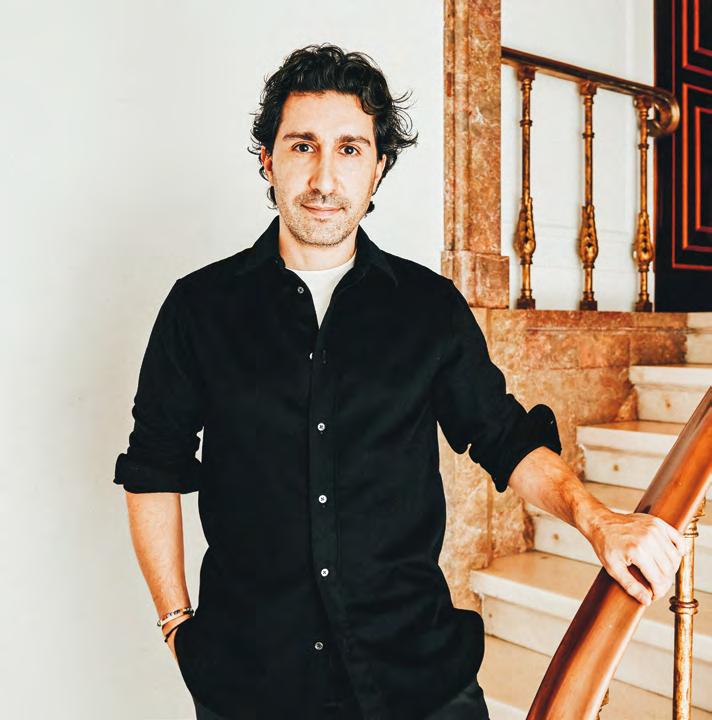
L’OBJET IN 3 PERFUMES
ROSE NOIRE
Perfumer Yann Vasnier
Launch 2023
The breath of a gentle twilight warmth. A blooming tea rose in a garden that is still damp, where berries and peppercorns rub shoulders with mosses and stems.
CÔTÉ MAQUIS
Perfumer Yann Vasnier
Launch 2023
A cloud of balsaminfused incense floats on a bed of scorched herbs: The Corsican rocky shores emerge on a tide of sensuality and spiritual reminiscences.
KÉRYLOS
Perfumer Jean-Claude Ellena
Launch 2024
Inspired by the sun-soaked, wild landscape of the Mediterranean. An expression of nature’s vitality, evoking ripe citrus falling onto warm, musky rocks.
L’Objet eu.l-objet.com @lobjet
35
BRAND PORTRAITS
© Daniel Schäfer

The leather trend SKIN TO SKIN
By Jessica Mignot
Illustration: Simon Roussin
In many ways, leather and perfumery have a similar history, always closely linked. At the heart of the great perfumery classics, the leather accord is now making a strong comeback, especially in niche creations. Let’s have a look at its evolution with Julien Rasquinet and Christian Provenzano, both perfumers at CPL Aromas.
Intertwined origins
It is generally accepted that its use developed with the consumption of meat in the Neanderthal period in the form of a useful by-product for clothing. The transformation process, which produces supple and, above all, rot-proof leather, involves various operations: fleshing, dehairing, drying and, most critically, tanning. Vegetable tannins derived from tree bark or leaves have long been employed in the tanning process and still form the basis of what is known as “vegetable tanning.” But by far the most common process is chrome sulfate tanning, which emerged with the beginnings of organic chemistry in the
1880s – the same decade that saw the birth of modern perfumery. This technique now accounts for around 80% of world production, with devastating effects on workers’ health and the environment, not to mention the animal suffering caused by the trade in the skins themselves.
But leatherworking does not stop there. In the 16th century, on the Iberian Peninsula, leather was perfumed with essences of herbs and flowers, civet and musk: This was the famous peau d’Espagne (skin of Spain), used in particular for gloves. This tradition was then introduced to Grasse. The privileges of master glover-perfumers, acknowledged and championed by Henri III in 1582, then by Louis XIV in 1656. As the historian Mathilde Cocoual points out in her doctoral thesis Aux sources des parfums , it was “the recurring crises in the leather industry, stifled by legislation on hide imports, that led to the separation of the guild of master perfumers from that of glovers in 1759.” The people of Grasse began to specialize in perfumery and soapmaking, before abandoning soaps to concentrate on scents.
From material to fragrance: The leathery palette
We can apply ourselves to the task of characterizing the scent of leather in general (animalic, smoky), yet its odor can differ greatly depending on the origin of the hide (nearly all from cows, goats, sheep and buffalo, in addition to the rare “exotic leathers”), the part used and its treatment: from peau d’Espagne to Russian leather – typified by its treatment with birch bark, making it resistant to mold for use in waterproofing Russian soldiers’ boots – and suede or buckskin, which refers to a velvety leather produced by working the inside of the hide.
When it comes to bringing out the olfactory complexity of leather, animalic
36
materials seem an obvious choice. Musk is now banned, but civet, castoreum and ambergris can still be used today, albeit cautiously. Perfumers must turn to the plant kingdom, with certain facets blurring the olfactory distinction between animal and vegetable: cistus labdanum, oud and tobacco, in particular. Chemists added fuel to the perfumers’ fire with the discovery of isobutyl quinoline (IBQ) in 1908, and more recently Suederal. It led to various fragrance houses creating bases – mixtures of synthetic and natural molecules – designed to facilitate the use of synthetic molecules. We may cite Mousse de Saxe from De Laire (now acquired by Symrise) or Cuir de Russie from Synarome. And the quest is not over yet: Christian Provenzano thus participated in the creation of Leather Fusion at CPL Aromas: “A unique ingredient in the world of perfumery, which was launched in 2023. Used in small proportions, this base rounds out a fragrance; in larger doses, it asserts the leathery character of a fragrance with power and depth,” he explains.
Perfumery classics
Leather has always been a source of inspiration for perfumers. Leatherinfluenced creations include Cuir de Russie authored by Aimé Guerlain in 1872, now discontinued; Peau d’Espagne released the same year by Oriza L. Legrand and reintroduced in 2022; and a fragrance of the same name by Santa Maria Novella in 1901, which still exists. But it was Caron that changed the game in 1919: “Tabac blond really did inaugurate the leathery family, standing out from the traditional peau d’Espagne and Russian leather accords with powerful oriental and woody notes alongside spicy floral notes (carnation and ylangylang),” says Yohan Cervi in Une histoire de parfums (Nez éditions). Christian Provenzano and Julien Rasquinet are enthusiastic about another great
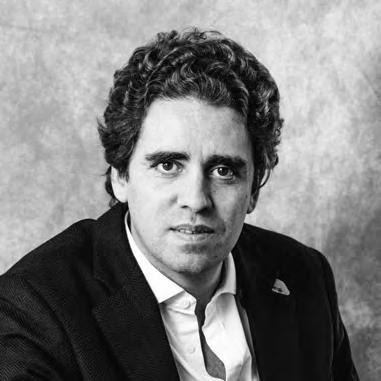
Julien Rasquinet
What does leather evoke for you? The most intimate memory I have is the smell of my mother’s leather handbag. It used to contain makeup products and cigarettes. So, in my mind, the scent of leather is perfect when associated with the smell of tobacco, lipstick and the bottle of Aromatics Elixir she always kept in that bag. How do you work on the note? I like rounding it out. I feel it works fantastically well with ingredients
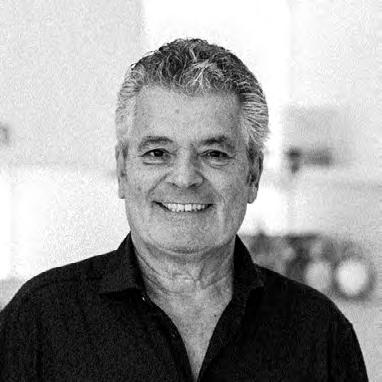
What’s your first memory involving leather? Growing up in Morocco, the vibrant and bustling souks were veritable treasure troves of sensory delights. Skilled artisans crafted beautiful pieces in vibrant colors using leather. I explored the stalls to the rhythmic sounds of craftsmen at work, touching the material’s different textures. The air was infused with the earthy aroma of leather.
How do you work on the note? I love to team it up with warm, sensual accords: ambery facets,
like patchouli, tobacco, amber and syrupy accords. In Cuir velours from Naomi Goodsir, I tried to find the perfect balance between smokiness, rum and the sweetness of labdanum. In Ambre Safrano from BDK Parfums, I softened the gourmand top note of boozy plum and the spicy saffron facets with an ambery base. Plum also crops up in Orchid Leather from Van Cleef & Arpels, where I took a floral, vanilla approach to leather.
Is it a difficult note to tame? It can be overpowering if not masterfully blended with other ingredients. I prefer its tanned, aged-leather effects rather than when it’s too “new”: harsh and too green. I like recreating the aged aspect with phenols, or osmanthus, which brings sweetness. But I also love its smoky facets that you get with juniper, birch and all the “pyrogenated” ingredients.
which stick to the skin, are longlasting and sustain the fragrance; musk, which provides depth; and woody notes, from dry cedar to milky sandalwood as well as the darker feel of patchouli and mystery of oud. But I also like to use leather with fresher notes like citrus, or combine it with spices. One of my favorite fragrances is Blue Sapphire from Boadicea the Victorious, where the note melts into the formula.
Can you tell us about the Leather Fusion base, a recent addition to the CPL Aromas portfolio? Right when I was asked to create it, I received samples of vetiver fractions that fascinated me; I knew straightaway they would be my starting point. It’s a woody, dry material that adds a spicy, almost saffron, ambery aspect. It brings a lot of texture to the composition.
37
Christian Provenzano
THE LEATHER TREND
Leather is now a musthave in the niche sector, probably because of its strong character.
masterpiece: Ernest Beaux’s creation Cuir de Russie for Chanel, celebrating its 100th anniversary in 2024. An aldehydic star jasmine sparkles against a backdrop of animality and the smokiness of birch tar. Knize Ten, a powdery leather fragrance that has become a classic among perfumistas, attributed to François Coty and Vincent Roubert, was also released in 1924. We lament the disappearance of Lanvin’s magnificent Scandal, launched in 1933.
It is interesting to observe that, at the time, the leathery note was intended for a feminine audience, as opposed to the masculine category where mainstream perfumery most often classifies it today. The first slap in the face – the right expression to use for this overdose of IBQ – came from Germaine Cellier with Bandit by Robert Piguet. A green leather, where oakmoss and patchouli give depth to the bouquet of dried flowers. The perfumer also created a leathery, elegantly animalic chypre with Jolie Madame by Balmain in 1953. Cabochard from Grès in 1959 gave us Bernard Chant’s interpretation of chypre leather. It wasn’t until later that leather became a masculine fragrance. Behind its aromatic opening, Eau d’Hermès is one of the most delicate interpretations offered by Edmond Roudnitska in 1951. Jean-Louis Sieuzac explored a darker leather with Bel Ami in 1986, in a chypre,
resinous and spicy ensemble. Guerlain’s Habit rouge, launched in 1965, is an ode to horse riders’ clothes, a leather that is both citrusy and balsam-like, which has lost none of its majestic character and remains an icon of the genre. And then there’s Polo by Ralph Lauren in 1978: a masterpiece offering a skillful interplay between the vegetation of lawns and the animality of the players’ sweat beading on saddle leather. As Alexis Toublanc describes it in Les Cent onze parfums qu’il faut sentir avant de mourir (Nez éditions), it “heralds the many explorations of the darker, more animalized woods that are now in vogue in the niche sector.”
Exclusive leathers
The niche market, as well as private collections from big brands, is where leather has re-emerged in magnificent form, while also featuring as a facet of many mainstream perfumes. “The leathery facet that fascinated me the most was that of Fahrenheit by Dior. But Daim blond by Serge Lutens and Tuscan Leather by Tom Ford are also references,” Julien Rasquinet points out. The influence of Middle Eastern perfumery is part of this movement, as Christian Provenzano remarks mentioning Ombré Leather , also by Tom Ford, released in 2021: “This fragrance reflects the modernization and commercial success of leather fragrances, appealing to a diverse audience with its ambery vibe and innovative use of molecules.” Whether spicy, animalic, smoky or velvety, leather is now a must-have in the niche sector, probably because of its strong character, and certainly because we’re “a bit tired of mass-market fragrances, made to please all markets and tested in every part of the world. People are looking more and more for compositions with a strong identity, character and uniqueness. Leather is certainly a part of the answer,” concludes Julien Rasquinet.
CUIR VELOURS
Brand Naomi Goodsir
Perfumer Julien Rasquinet
Launch 2012
A delicate suede glove, inseparable from the skin that wears it, with its hints of velvety apricot, honeyed tobacco, vanilla rum and spicy immortelle.
HALFETI LEATHER
Brand Penhaligon’s
Perfumer Christian Provenzano
Launch 2020
A spicy, smoky leather. The luminosity of citrus is dimmed by a patchouli enveloped in candied plum and swirls of oud where cumin and cinnamon dance.
PEAU D’ESPAGNE
Brand Oriza L. Legrand
Perfumer Unknown
Launch 2022
The scent originally launched in 1872 is reworked with a retro yet bold feel. Old-fashioned soap mingles warmly with assertive animality.
PEAU D’ÂNE
Brand Jardins d’écrivains
Perfumer Unknown
Launch 2022
This homage to the Charles Perrault fairy tale enchants us with a thousand nuances, from decorative violet to iris-y flour, wrapped up snugly in an animal pelt.
SUGAR LEATHER
Brand Une Nuit nomade
Perfumer Anne-Sophie Behaghel
Launch 2023
A gourmand, syrupy, resinous interpretation of the material, evoking a caramelized skin sprinkled with cinnamon.
38
THE LEATHER TREND
Awaken your senses with the softness of leather, a n essence that melds with your skin to craft a unique and timeless olfactory experience.

Éveillez vos sens avec la douceur du cuir, une note qui imprègne votre peau d'une expérience olfactive unique et intemporelle.
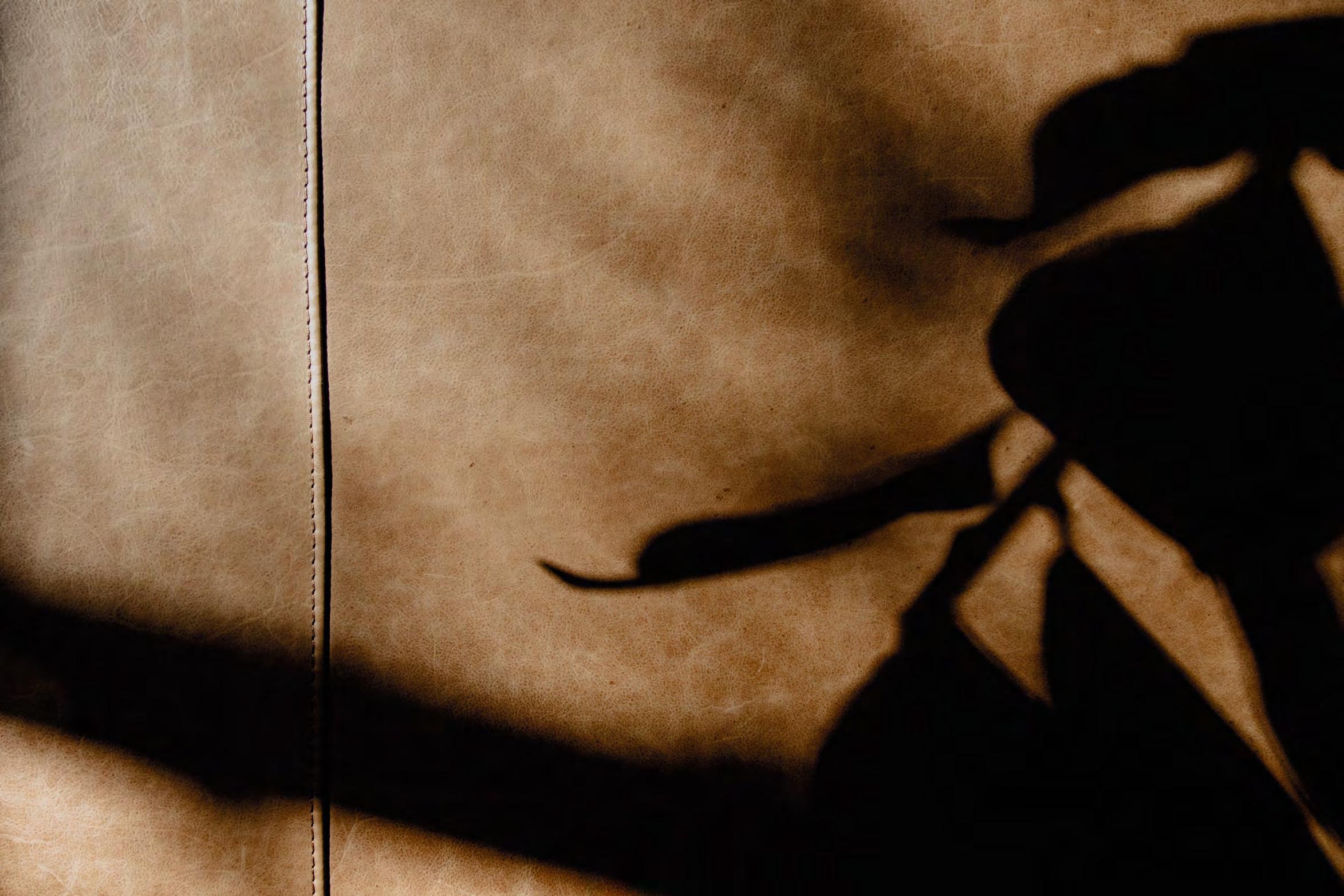
Scannez le code QR pour nous contacter et discuter de votre prochain projet parfumé


Destination Indonesia
Olfactory products take on different forms and are used in a variety of ways depending on where you are in the world, reflecting diverse cultures, living conditions and climates. Each year, Niche by Nez invites you on a journey to a faraway destina-
tion to give you a better understanding of the potential, development and future of perfume in unexpected places. Thomas Espinasse, a perfumer at Iberchem, is our guide as we discover some of the many facets of the Indonesian archipelago.
By

Jakarta JAVA SUMATRA BORNEO MADURA BALI 2 1 4 1 3 4 40
Béatrice Boisserie and Jeanne Doré
For more information mag.bynez.com
Photos:Thomas Espinasse, Iberchem
KEY FIGURES
Area
1,885,000 km2
Population
275 M inhabitants including 120 M on Java, Madura and Bali, including 30 M in Jakarta and its surrounding area Nº4
Global ranking based on population Religion
PERFUME MARKET
2022 statistics
Total fragrance market
7,700 billion IDR:
Hygiene products
12,000
The world’s most populous Muslim-majority country
90 %
10 %
1 Nutmeg 2 Clove 3 Vetiver 4 Patchouli
Islam
Others
SULAWESI
MOLUCCAS
Indonesian rupiah
= 17,000 IDR
IDR = 0.00006 €
billion IDR IDR =
€1
1
premium
3,100 billion IDR
fragrances
1
41
4,600 billion IDR mainstream fragrances
1 2 4
“The Indonesian perfume world relies on sensations rather than an olfactory pyramid.”
In September 2023, Thomas Espinasse, who grew up in Alsace and the HauteSavoie department of France, moved to Jakarta. After freelancing in the personalized fragrance sector, the co founder of ScenTree joined the new creation center set up by Spanish composition house Iberchem, active in the country since 2002.
What does the Indonesian fragrance market look like?
The thing that really stands out is the vast population. There are 30 million people in Jakarta and its suburbs alone. Given that smells play a major part in the archipelago, it’s not hard to understand that winning a contract means millions of people will use your product! Especially since Indonesians tend to go for successful perfumes, creating a snowball effect
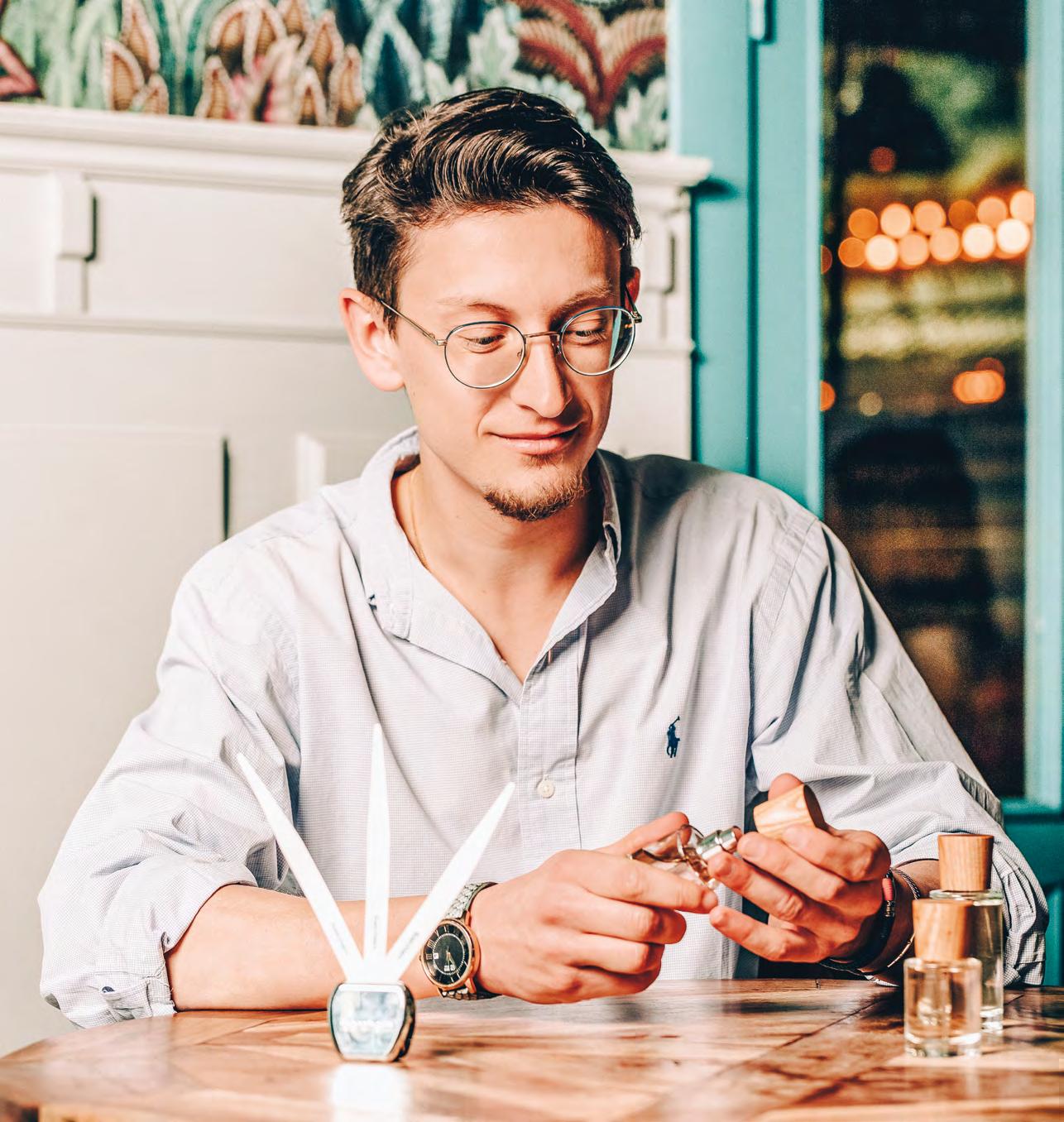
that is further amplified by social media messaging from influencers and artists.
Which notes are the most popular?
Not necessarily plants grown in the archipelago – patchouli from Sulawesi or vetiver from Java. Their notes have earthy or smoky facets that Indonesians aren’t particularly fond of. Their tastes are very much influenced by their fruit-growing culture! Passion fruit, mango and guava alongside peach and melon, as well as apple and pear, extensively used in hygiene products. And jasmine flowers, traditionally used during marriage ceremonies, as well as telon oil with its eucalyptus aroma. These are all familiar scents.
What types of fragrances do Indonesians like?
Perfumes I’d describe as playful without being sticky! In other words, pleasant fragrances with a fruity, floral heart (jasmine, rose and magnolia), not too balsamic and not too oriental. Everywhere from Sumatra to Papua, and Java in particular, by far the favorite fragrances are powerful, diffusive and fresh. Bali is the exception, the only non-Muslim island in the archipelago, where kilos of flowers are used every day in Hindu rituals that feed into an olfactory trend in cosmetics: Jasmine and frangipani are extremely popular in body creams, shampoos and shower gels.
Perfume is used in mosques as well as bazaars. So, two alternative markets?
In mosques people use oil-based perfume or attar for prayer rituals. They’re not too expensive and can be found in bazaars: This is an enormous market. These fragrances, created by composition houses like Iberchem, are sold in huge quantities, and often mixed together. They center on oud, incense and balsam notes and can be similar to
DESTINATION
42
Thomas Espinasse, perfumer at Iberchem
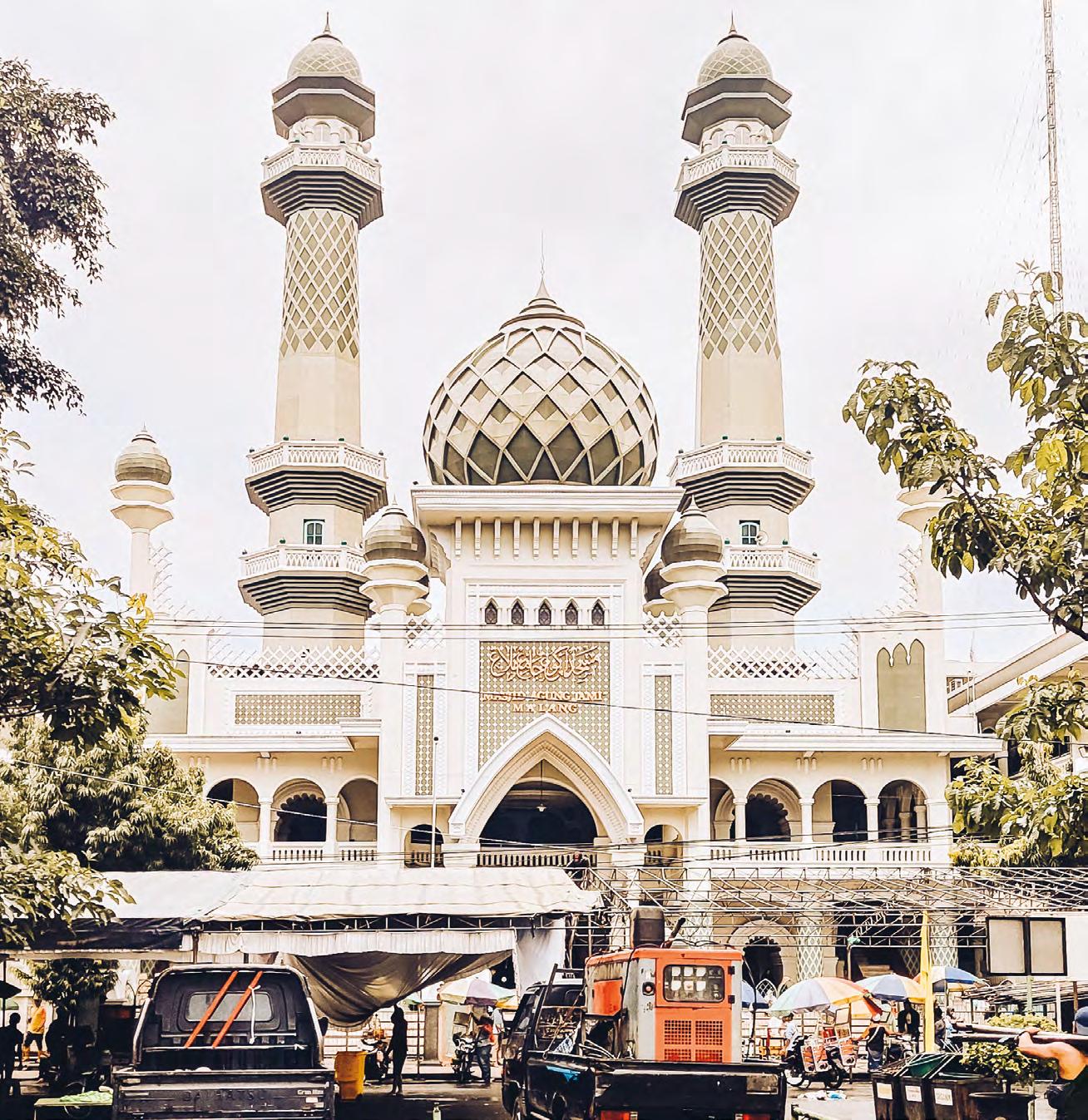
what works well in Europe – floral fruity accords with sugary notes for women, or aromatic and woody notes for men.
A large population with a taste for concentrated perfume. But a vocabulary that’s not always easy to decipher?
The perfume world here relies on sensations rather than an olfactory pyramid. A customer might ask for a “thick” perfume, which means they want it to have “body” – in other words, heart notes and a certain depth. But you have to be careful with the word “fresh”: In Indonesia, freshness doesn’t mean citrus, or pepper, mint and cardamom, like in Europe. When I first arrived, I didn’t understand. People would say, “It needs to be fresher!” – when I had used 10% menthol! Referring to a fresh accord simply means you like it a lot. Another
example is that what we call “green notes” are classified here as “spicy.” Why? Because Indonesian cuisine is crazy about chili pepper, which smells of raw capsicum! And other spicy notes, like ginger, are perceived as “green” in the archipelago. So it’s important to make sure you can interpret things properly. That’s why we’re lucky we work with local evaluators, who are very familiar with regional olfactory references. b.b.
LOCAL TREASURES
Indonesia is a land where numerous perfume plants thrive under the welcome effects of the heat and humidity of the Asian tropics.
PATCHOULI
Originally from the Philippines, and now nearly exclusively produced in Sulawesi, patchouli gradually traveled across the archipelago, from Java to Borneo. Thanks to its smoky, earthy olfactory profile, it has been the star of niche perfumery since the 1970s. (Read the report on page 9.)
VETIVER
Vetiver, a native of southern India, is grown in various places including Java, in the mountainous region of Garut in the south of the western province. The essential oil produced there has woodier, smokier and more leathery aspects than the oil from Haiti.
NUTMEG
Indonesia is the world’s leading producer of nutmeg, using the spice in traditional recipes like rendag, a beef-based dish. Originally from the Banda Islands in the Moluccas, it is now also grown in Java, Sulawesi and Sumatra, and produces a spicy, dry and intense essence.
CLOVE
Another spice that emerged in the Moluccas archipelago (known as the Spice Islands), the clove tree now grows in Bali and Sulawesi. Clove is used to perfume local cigarettes, or kreteks, producing a warm, intense and medicinal essence.
DESTINATION
43
WHEN NICHE TAKES ROOT IN INDONESIA
Unsurprisingly, the profusion of raw materials native to the archipelago have inspired plenty of Western brands, celebrating their olfactory beauty with solinotes and creations evoking exotic faraway lands.
BORNÉO 1834
Brand Serge Lutens
Perfumer Christopher Sheldrake
Launch 2005
Undoubtedly one of the first fragrances to pay homage to the birthplace of patchouli, enveloping it in cocoa, the perfume evokes the date when the plant’s woody aroma was discovered in Paris, in silk fabric transported from Indonesia.
FLEUR DES FLEURS
Brand Une Nuit nomade
Perfumer Karine Chevallier
Launch 2015
Une Nuit nomade pays tribute to Bali, nicknamed the “flower island,” with nothing less than an entire collection. In company with Mr. Vetiver and Suma oriental, Fleur des fleurs – referring to ylang-ylang’s Malaysian name –is a sunny white floral bouquet highlighted by saffron and vanilla.
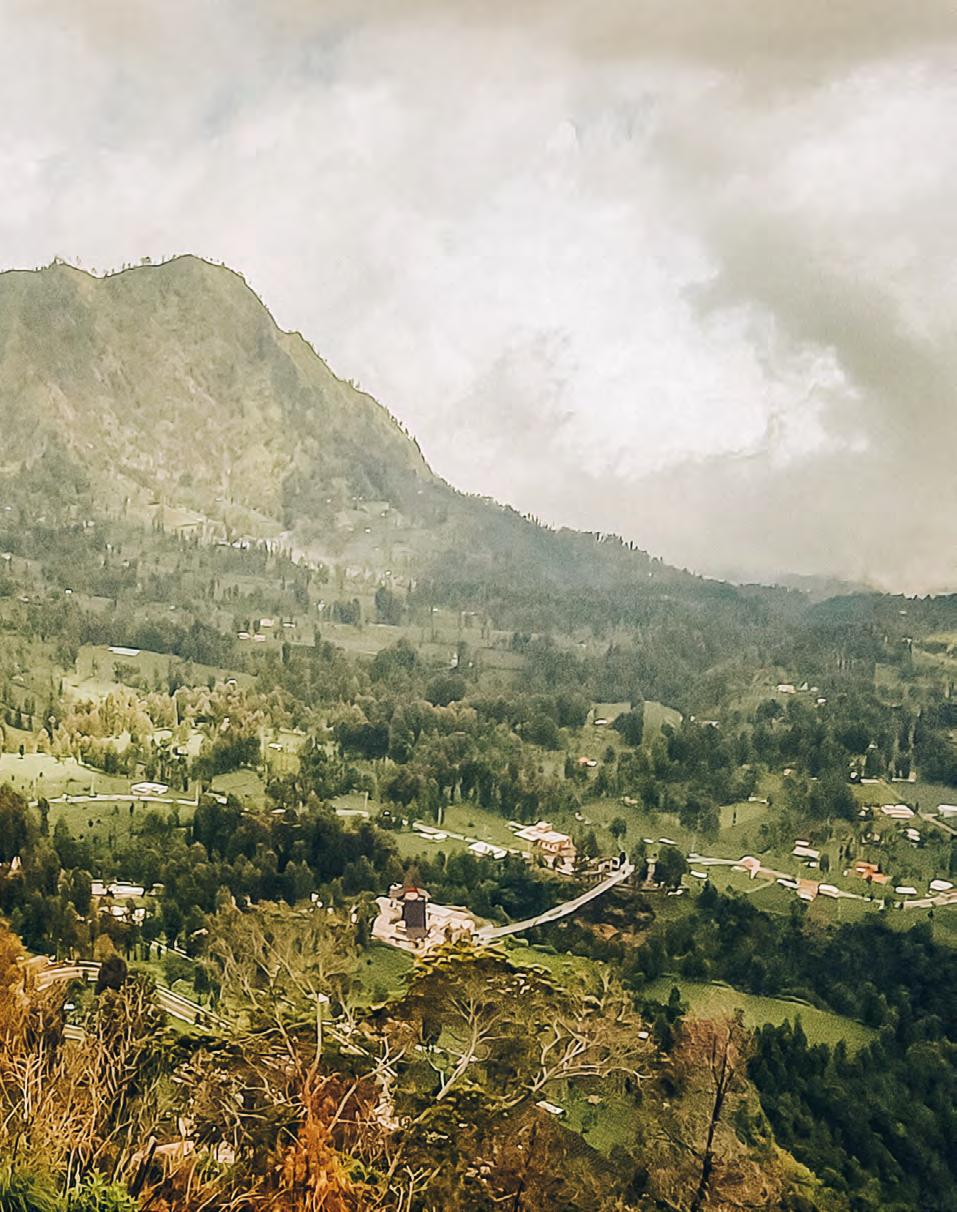
CELEBES WOOD
Brand Mizensir
Perfumer Alberto Morillas
Launch 2018
In this olfactory portrait of a lush exotic forest, described as a “wood of spices,” cinnamon, pepper and cardamom are warmed by a balsam-like accord of vanilla, labdanum and tonka bean.
VETIVER JAVA
Brand Perris Monte Carlo
Perfumer Gian Luca Perris
Launch 2021
Intrigued by the smoky, burnt, spicy facets of the root native to Java, the Italian perfumer has shone the spotlight on it, refreshing it with bergamot, grapefruit and Timur pepper and swathing it in ambery musk.
NICHE
PERFUMERY
MADE IN INDONESIA
Non-exhaustive selection of houses founded in the archipelago.

NORMAL ESTATE
Jivanesia & Levina, two interior designers based in Jakarta, launched their brand in 2022. They work with Lygia, head of perfume creation, and a number of French perfumers.
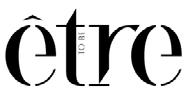
ÊTRE
Lygia, who studied at ISIPCA in France, also created an artisanal brand in 2022, spanning Paris, Grasse and Indonesia, together with Tiara, a digital communications expert.
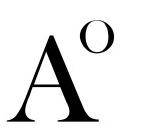
ALIEN OBJECTS
Founded by perfumer and former architect Lucky Heng in 2019, the company offers a personalized service, an exclusive luxury collection targeting connoisseurs.
DESTINATION 44

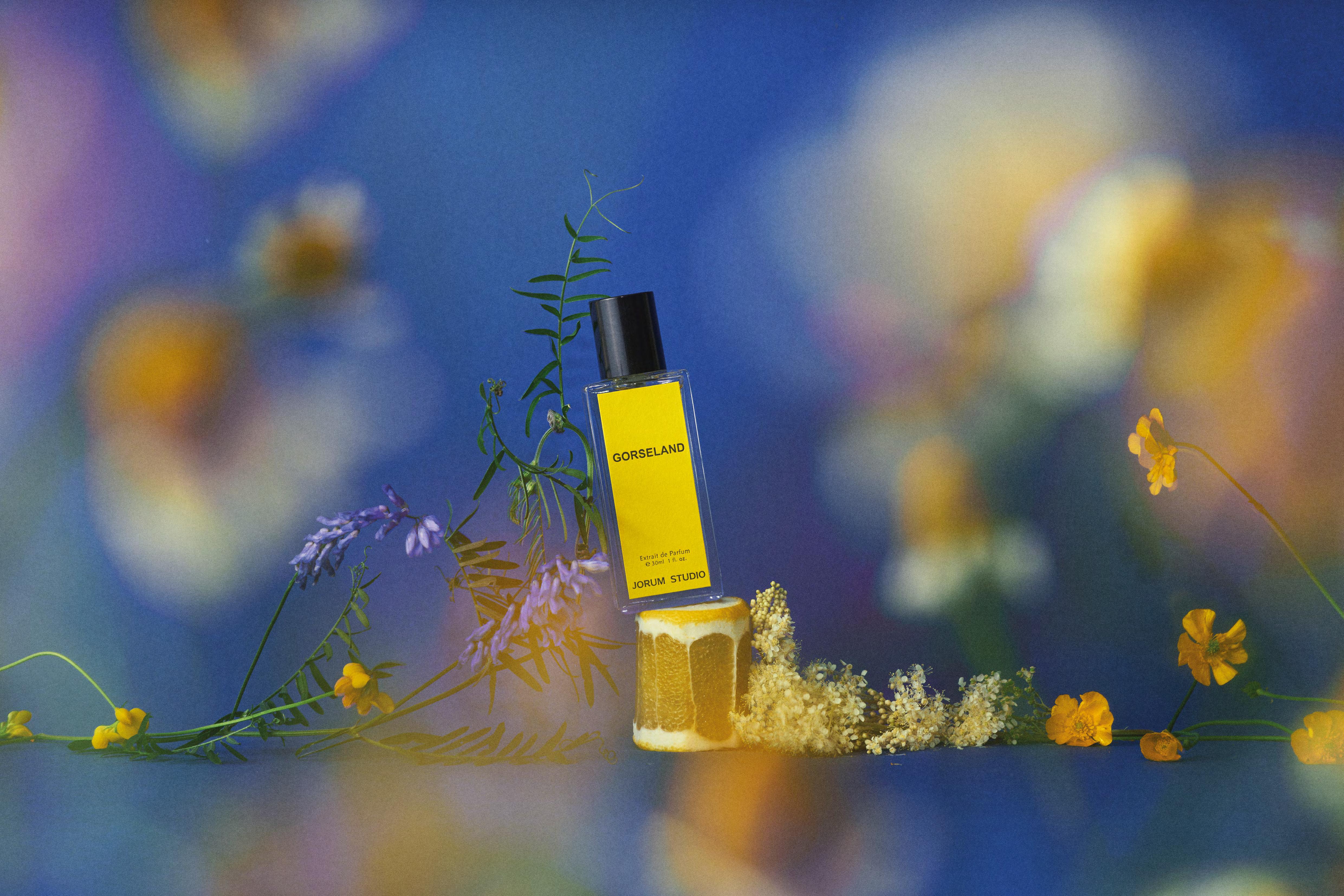
JORUM STUDIO jorumstudio.com 12 Saint Stephen Street - Edinburgh new luxury fragrance nouveau parfum de luxe
EVENTS A JOURNEY INTO PERFUME P. 48
arO U�D fra gra �ce
COMPTOIR NICHE BY NEZ CREATORS SPREADING THEIR WINGS P. 53
47
Events A JOURNEY INTO PERFUME
By Mathieu Chévara
Dominique B. is tired. Barely two weeks ago, he was in Grasse for the Phénix Prize award ceremony. Next stop, Catalonia for the Barcelona Perfumery Congress before heading to New York, where he dived headfirst into ScentXplore.
Exhausted from spending two interminable days explaining that a rectangular object with pages inside is a book not a perfume, he’s already back in Europe, landing in Geneva for the IFRA Summit. He’ll get home three days after that, dragging a heavy caseload of unsold books behind him. You could get the impression that Dominique B.’s life is not a bowl of cherries. Nevertheless, in that short space of time, he met with several influential distributors and a host of managers of stores with ambitions, ran into old acquaintances delighted to pass on a few pieces of secret information, talked to fifty or so brands he didn’t already know, smelled several hundred fragrances he had sent to the Nez editorial team, strengthened various promising partnerships, came up with ideas for two or three book projects, realized that the U.S. market is now in the hands of content creators on TikTok and YouTube, and tested out various local sparkling beverages. Perfume is, evidently, about more than
just noses compulsively sniffing different scents, some more pleasant than others, composed by different creators, each doing their own thing with varying degrees of skill. Perfume is also all about encounters, markets, communities and, above all, culture.
Every year, a large number of events take place throughout the world, appearing and disappearing like giant encampments, sophisticated and ephemeral, covering hundreds or even thousands of square meters in large airconditioned halls. Some of the smaller
ESXENCE, A TSUNAMI OF NICHE!
11,000 square meters, 10,300 visitors, 298 brands from 30 countries, 26 conferences and workshops, and, of course, thousands of fragrances on display and tens of thousands of scent strips waiting to be sniffed. The Milan-based show, held 13 times since its 2009 launch, has successfully established itself as the beating heart of independent perfumery, an unmissable gathering for distributors, stores and brands. The trade fair attracts a throng of independent perfumers, salespeople and
events converge on various conference rooms, where industry figures busily review and document the state of perfume yesterday, today and, most importantly, tomorrow. Others spend three days hunkered down in large hotels turning business into a battle far from prying eyes.
Now that Zoom, Microsoft Teams and Google Meet are methodically swallowing up every opportunity to meet flesh and blood people, to enjoy encounters that are both sensitive and sensible, open-minded and rich with potential, the major events, paradoxically enough, have never been so well attended. Surely the sign of our pressing need to get together, far from our screens and the confined spaces of open space bubbles. From Esxence to WPC, Beautyworld Middle East to Pitti Fragranze, ScentXplore to Cosmoprof, Scent Week to Paris Perfume Week, what really goes on at these big gatherings? How do organizers make sure their events are relevant?
Above all, how is it possible to travel successfully down this international, not-so-globalized path where decisive encounters could take place and change the destiny of the niche brands that embark on the journey?
evaluators from fragrance houses, students and perfume lovers. Because at the Milan event people come to sell services, smell the latest trends, improve their market knowledge, or simply find an internship or job! Esxence is also the ideal place to unveil new fragrances and make the most of the presence of all the planet’s perfume influencers at the trade fair, which gives launches a massive boost. And let’s not forget that each new issue of Niche by Nez is launched at Esxence! Not to mention the parties – but shush, what happens at Esxence stays… in Milan.
48
PARIS, CAPITAL OF PERFUME
PARIS PERFUME WEEK
MARCH 21-24, 2024
Public General public and professionals
Organizer Nez
First year 2024
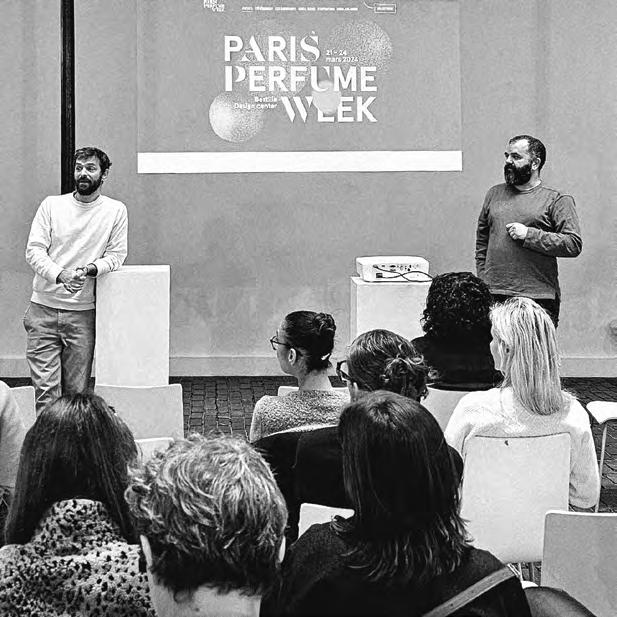
Interview with Romain Raimbault, Events Director, Paris Perfume Week
How did you get involved with perfume?
I come from the world of gastronomy and spent nine years working as the director of Omnivore, an international festival dedicated to food. I discovered olfactory culture thanks to Nez and was won over by the new approach to fragrances. I found the breakdown of the journey from plant to essence particularly fascinating!
How did the idea for Paris Perfume Week come about?
There was something missing in French perfumery: a specific focus on the fascinating personalities in the perfume world, and a space to promote discoveries and discussions. What we want to do is give the public the chance to physically encounter fragrances and the people involved in creating them.
The challenge is to invent a new way of interacting with perfume.
What should we expect from this first edition of Paris Perfume Week?
It’s an event that is part trade fair, part festival. Around 50 international exhibitors will be there, as well as a stage to host 30 or so conferences over the course of the week, along with masterclasses given by leading figures in perfumery. Among other topics, we’ll be looking at young creators, research and olfactory culture.
What do you think will make this event stand out from the others?
We’re holding it in a place that’s different from the usual trade fair venues: the Bastille Design Center, which we’re turning into a giant cabinet of curiosities. The idea is also to create ties between different artistic spheres – perfume and film, fashion, music –which will be showcased to underline the fact that smells are everywhere and the sense of smell plays a decisive role in our lives.
What will the highlights be?
There’ll be lots of them! The event will host an exhibition celebrating 20 years of the brand Parfum d’empire and will feature an off-site program: Around 20 sales points will take the event out of the Bastille Design Center and into every part of Paris.
What vision of perfume does Paris Perfume Week want to cultivate?
It’s a demanding but accessible vision, inspired by the creative direction and editorial line that Nez has shaped, marked by openness to the general public, everyone who is curious or passionate about fragrances. The event’s name is Paris Perfume Week, but we’re inviting the whole world of olfactory culture to it. c.p.
DUBAI, THE QUINTESSENCE OF NICHE
BEAUTYWORLD DUBAI OCTOBER 28-30, 2024
Public Professionnel
Organizer Messe Frankfurt Middle East
Year of creation 1996
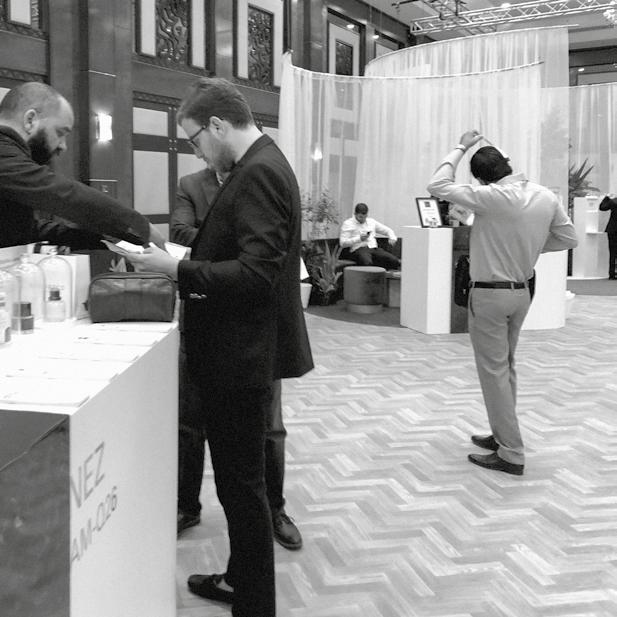
Quintessence is Beautyworld’s platform for niche fragrance. What’s its role? Fragrance is at the heart of Beautyworld Middle East. The event is one of the biggest and most important in the world for the fragrance industry. In 2016, Beautyworld identified the need for a specialized showcase of the niche segment, which required a curated environment tailored to the niche culture and community. Since then, Quintessence has become a go-to feature of the show for fragrance connoisseurs. With attendance from visitors across 156 countries, it became the platform to bring artisan brands from around the world to the global stage.
What’s the difference between the European and Middle Eastern niche?
One of the key differences would probably be the Middle East’s love of more
49 EVENTS
Interview with Flyn Roberts, Portfolio Director, Beautyworld Dubai
potent scents such as oud, musk, frankincense and sandalwood. We’ve seen a rise of international brands successfully targeting the local markets, but interestingly, there is also a surge in their popularity in Europe too.
How do you see the evolution of the perfume market in the Middle East?
How did it translate within your show? There is a true entrepreneurial spirit here, with new artisan brands being launched every year and with no signs of slowing down. Fragrance is the region’s top beauty category for spend across both males and females, and in 2025, the fragrance segment will see double-digit growth for the third year in a row. At Beautyworld Middle East itself, we’ve observed the demand for the Quintessence category grow year after year. Thus, we look for exciting brands to introduce to our targeted retailers, distributors and the media, not just with the traditional show but also with complementary events like our networking evening and awards ceremony.
What do you think will be key factors for growth in the next few years?
Some of the major trends we are noticing and hearing a lot about are sustainability and fragrance layering. We cannot ignore the influence of social media: TikTok in particular is the most popular way of discovery for younger generations. Travel retail has also been a significant driver for growth in the industry, with perfume reigning supreme in the duty-free space across many regions. Saudi Arabia is one of the most promising and fastest growing markets in the world and will also drive growth here in the region. Our upcoming Beautyworld Saudi Arabia event in February has doubled in size compared to the last edition, hence the interest from brands globally. The industry is projected to continue its growth trajectory over the next few years, and we are excited to watch that unfold at Beautyworld. s.d.
NEW YORK, A SPIRIT OF CAMARADERIE
SCENTXPLORE
DECEMBER 2024
Public General public and professionals
Organizer Max Forti
Year of creation 2019
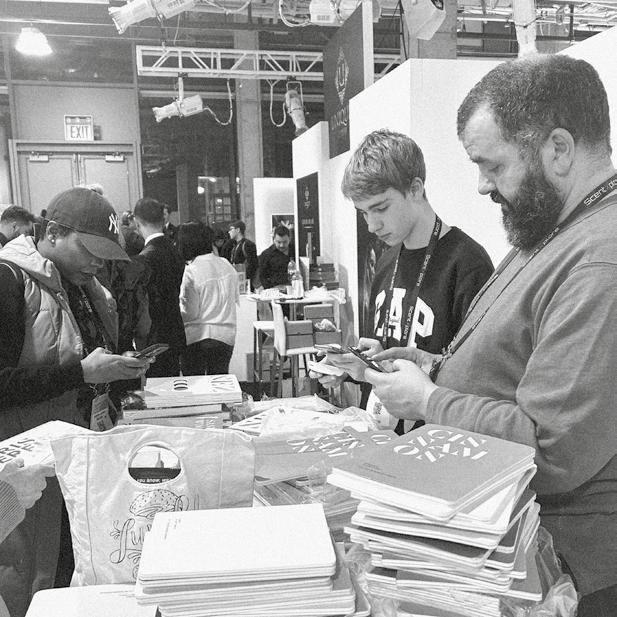 Interview with Max Forti, Founder of ScentXplore
Interview with Max Forti, Founder of ScentXplore
What sets ScentXplore apart from other perfume events? ScentXplore is created for the true fragrance lovers who enjoy the intricacies of the world of fragrance. However, we welcome one and all to discover our platform. Our ethos is: “explore, discover, share and connect.’’ We are people-focused, and we try to cater to their tastes and make a bespoke event for them. Through our workshops and presentations, we provide the ability to create a bond between the fragrance aficionado and perfumers and industry experts.
From 600 attendees and 28 brands in 2019 to 4,500 attendees and 75 brands this year: How do you explain this impressive growth?
It’s mostly due to the word-of-mouth of people who previously came to the event and shared their feelings about the experience. That being said, we are witnessing a remarkable growth outside the fragrance community. As more people become aware of niche fragrances, profiles from different landscapes appear – coming from fashion or makeup – which is fascinating and encouraging.
As a scent lover for a while now –you started on YouTube ten years ago – how would you describe the evolution of the U.S. market ? The market has evolved tremendously when it comes to knowledge. The consumer is getting very savvy in regards to ingredients, for instance, and is therefore more demanding of quality, performance and uniqueness. This is where niche brands have an opportunity to continue to grow in comparison to the “mainstream” releases, which essentially offer “more of the same.”
From my experience, the successful independent brands are those that have made a true effort to connect with the consumer. Some of them have limited resources, but they manage to create an emotional bond and are ready to listen to what the market really wants rather than just pushing new releases.
Now that ScentXplore is well established, what are your ambitions for the future? We hope to continue to provide value and innovation to our attendees and brands, looking to connect on the utmost authentic level and delivering educational, entertaining and enriching content. There is a feeling of camaraderie that surrounds the event where everyone feels accepted and belonging – we’ll always strive to keep this feeling alive. s.d.
50 EVENTS
Eurofragance EXHIBIT, DISCOVER, ENCOUNTER
What are the reasons that make a composition house decide to take part in a trade fair?
Antoine de Riedmatten, Chief Fine Fragrance Officer and General Manager IMEA, shares his insights.
What events does Eurofragance take part in as an exhibitor and with what goal?
The biggest show is unquestionably Beautyworld Middle East in Dubai, an event we’ve attended faithfully for over ten years. It gives us the opportunity to tell people about our expertise and innovations, such as our captives and ICON ingredients, in-line with an ecofriendly approach, via exceptional creations. This year, we again opted for a very large exhibition space, specially “eventicized” to provide our guests with an immersive experience.
The show is also an excellent place to meet our partners, clients and future customers, as we’re always just as keen to hear their news as they are to hear ours.
And as a visitor?
Esxence in Milan and Pitti in Florence, which both showcase niche perfumery. Esxence hosts all the brands active on the market; they’re mainly European, some of them already very well-known while others are just starting out –a combination that makes the event highly rewarding! At Pitti you’ll find a series of emerging brands, possibly more creative and avant-garde. These two events are a major source of inspiration for our marketing, creative and development teams. In France, we also take part in TFWA in Cannes. The fine fragrance teams (sales staff from the Europe zone, management, marketing and perfumers) meet up there every year to identify trends, meet exhibitor brands, develop new partnerships and consolidate the ones already in place.
Are there other examples?
Cosmoprof Bologna, even though fine fragrance doesn’t play such a big part there. Our industry isn’t confined to fine fragrance, as our areas of expertise prove! So, it’s a good opportunity to meet the people leading the brands in a friendly environment where everyone takes the time to think about, focus on and value other people’s work. It also gives the Eurofragance teams the chance to meet up with our retailers, mainly from Europe and Turkey, as well as strengthen ties with our clients and work in real time with them on new projects. A.-S.H.
Passion Nez ONE PASSION: PERFUMERY. ONE MISSION: TRANSMISSION.
Claire Lonvaud, founder of Passion Nez, is driven by her love of encounters. A trained chemical engineer who graduated from both ISIPCA and ESSEC, she has worked for brands and composition houses in France and internationally to guide them in their creations.
In the historic town center of Grasse, she provides training courses to international professionals and private visitors, in partnership with Cinquième Sens. A founding member of Grasse Expertise, she also teaches at ISIPCA and Côte d’Azur University. Thanks to her 360° approach encompassing every aspect of scent creation, from the initial idea and the search for suppliers to the finished product, Claire provides support for a wide variety of projects, helping turn dreams into reality. While
some clients approach her for guidance in creating their own brand, she is increasingly working with organizations seeking to tie fragrance in with their business. Motivated by her desire to bring perfume lovers together and to share knowledge and skills, Claire also founded the Café des Nez. In person and on Instagram, attendees learn about raw materials from plant to fragrance. Passion Nez offers bespoke solutions for marketing and olfactory expertise in the capital of perfume. C.P.
51 EVENTS



Comptoir Niche by Nez CREATORS SPREADING THEIR WINGS
Nez has been taking an active part in all the major international perfumery events for several years. As a result, we have gradually established ourselves as an invaluable partner for organizers who are increasingly keen to develop highquality content.
Our consistent presence at the heart of a large variety of markets has brought us into contact with everyone involved in olfactory culture, and allowed us to hone our understanding of the many dynamics that drive the fragrance world. In addition to the publications we propose to visitors and exhibitors, we have come up with a complementary concept, giving a handful of niche
By Mathieu Chévara Illustration: Simon Roussin
brands the chance to accompany us throughout the year. Firstly, in Paris at our March event, Paris Perfume Week. Then in Dubai in the Quintessence space at Beautyworld in November. And lastly, in New York in early December at ScentXplore. Comptoir Niche By Nez will host three brands every year thanks to the support of our partner fragrance houses. The initiative not only represents an opportunity for the creators involved to take the next step, but also aims to highlight the importance of the relationship between brands and their partners, above and beyond product development. Leading composition houses are providing access to perfumers, evaluators, salespeople, and experts in marketing, innovation and ingredi-
ents for creators who are embarking or continuing on the perfume journey. The quality of this permanent dialogue will help to open up new avenues for a project and enhance its prospects. Solid and lasting ties will be forged in the process of devising, step by step, a unique style so brands can develop an olfactory approach that really stands out, while also creating the conditions to help brands encounter their public. This chain of skills reflects a collaboration whose goal everyone shares: to conceive a perfume world that is inventive and inimitable. Judith, BDK Parfums and Atelier des ors, the first brands to partake in this innovative initiative, recount their creative universes alongside the partners accompanying them to every milestone.
53
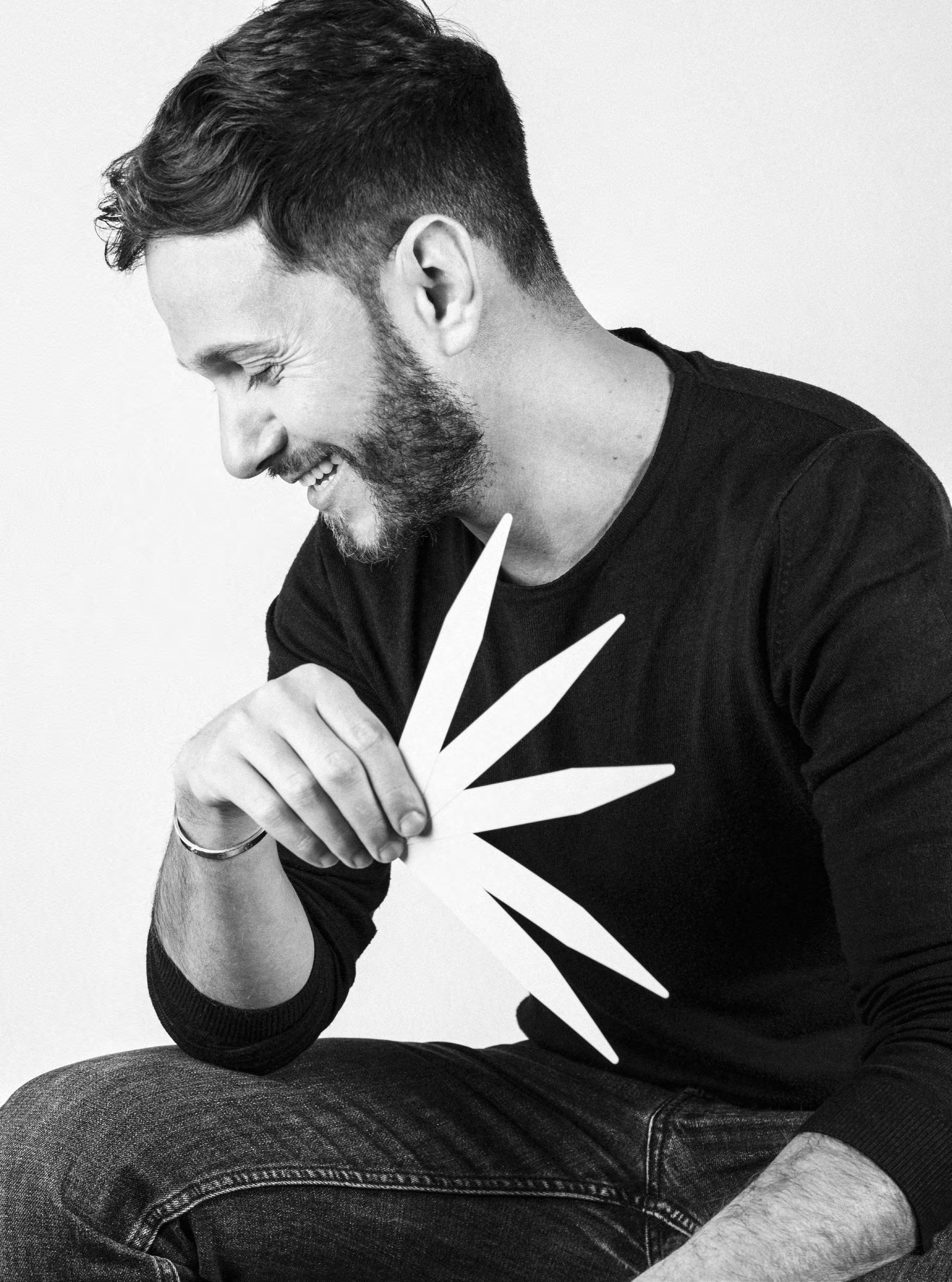
© BDK Parfums
BDK Parfums × Mane A FAMILY ATTACHMENT
By Jessica Mignot
Since it was launched in 2016, BDK Parfums has built a close working relationship with the composition house Mane. The collaboration has resulted in nine creations so far.
Brand founder David Benedek was born into the world of fragrances: His grandparents distributed Dior and Worth in Paris and all over France in the 1950s. “It’s a world I’ve been in love with since I was little, but I didn’t know I wanted to work in it. It was only when I lived in China then the USA that I realized how culturally influenced applying perfume can be, and the two sides of me, artistic and rational, led me into entrepreneurship,” he explains. After studying perfumery and cosmetics at the Institut Français de la Mode, he built up in-depth expertise in raw materials, which he honed at Cinquième Sens in Paris.
The emergence of the niche market convinced him to launch his own brand: “I realized that you don’t have to be one of the big traditional houses to offer splendid fragrances, and I simply wanted to create an olfactory library where everyone can read their own story.” He then turned to a friend of his parents,
Monique Ledunois, an evaluator then salesperson at Mane: “She opened the doors for me and let me conduct my first trials. I met the perfumers and developed a bond based on trust with them, what you could call family ties,” he says. The interactions are smooth and the freedom David provides is greatly appreciated. “David is very approachable and there’s lots of transparency between us,” underlines Kevin Brillouet, Sales Manager and Project Leader at the composition house. “He knows our perfumers really well and likes talking to them about technique and formulation, which has built up trust on both sides. The freedom he gives us is rare and appreciable. He has a sense of aesthetics that means he can follow his heart, but he also makes sure he listens to the Mane teams. And the budgets and time allocated to the creative process are considerable.” When he launched the brand, David Benedek was determined to propose creations that put beautiful ingredients center stage, whether as part of a collection dedicated to each ingredient or the “Parisienne” collection, with its more urban feel. Two additional ranges have been unveiled since then: “Exclusive” for Harrods of London – one of the first major department stores to distribute BDK Parfums – which combines two ingredients or facets; and a tribute to the Mediterranean, named “Azur,”
which introduces freshness as a counterpoint to the house’s sensual, heady signature style. “Even in this collection, which is designed to be lighter, you can recognize the brand’s generosity,” notes Ines Gilioli, an evaluator at Mane. She’s the one who guides perfumers so their compositions correspond to the brief, serving as a “second nose” to add a layer of objectivity.
A role that involves real interaction, ensuring the brand can keep evolving. After the success of fragrances like Gris charnel extrait (named Best Niche Perfume 2023 by Fragrantica, and awarded the Perfume Extraordinaire prize by the Fragrance Foundation USA the same year), David Benedek is more convinced than ever that creative risk-taking is the way forward, as he explains: “Authenticity has always been a core value in my approach, but these days I go much further in embracing the element of surprise. I want to offer the market concepts that have an olfactory style that really is different.” His first store in Paris’s very chic Rue SaintHonoré has also helped him make his mark: More than a sales outlet, it is also a cocoon where clients can discover the ingredients showcased in his creations, giving them the keys to building up their knowledge and introducing them to brand aesthetics.
55
COMPTOIR NICHE BY NEZ
BOUQUET DE HONGRIE
Perfumer Serge Majoullier
Launch 2016
A bouquet of jasmine and roses, transparent and sun-kissed, rounded out by juicy fruits – pear and blackcurrant – reclining on a cloud of comfy, almost honeyed musks.
CRÈME DE CUIR
Perfumer Violaine Collas
Launch 2018
The citrusy opening with its sour, zesty feel gradually gives way to a luminous and velvety suede, with mild spices, ambery vanilla and powdery woods adding more texture.
GRIS CHARNEL
Perfumer Mathilde Bijaoui
Launch 2019
A chiaroscuro effect where the light of a powdery iris and creamy sandalwood offsets a black tea fringed with tonka bean and resinous notes clad in woody trappings.
CITRUS RIVIERA
Perfumer Ralf Schwieger
Launch 2020
The dancing breeze conveys the perfume of the waves along with the scent of citrus and the fragrance of flowers carpeting the warm, salt-coated earth.
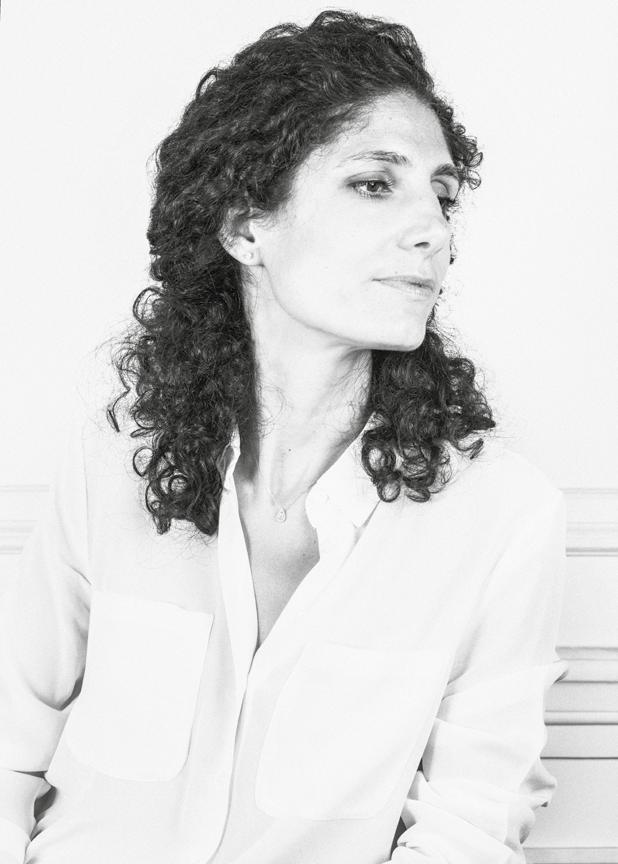
“I recently realized that if I had needed to create a fragrance for myself, it would have been identical to Gris charnel”
3 questions for Mathilde Bijaoui, Mane
What aspect of the collaboration did you enjoy in particular?
It was David’s idea. And a real challenge: Since Gris charnel was already successful, the idea was to propose something else that differed from it enough to be pertinent while retaining the same identity. I struggled initially, but the discussions with David helped me find a path forward. I worked on the composition’s intensity with an almost animalic vanilla plus patchouli, which adds a lot of depth. I was delighted by the awards from Fragrantica and the Fragrance Foundation USA: BDK Parfums is a brand that’s all about passion and poetry, as illustrated by its olfactory choices, as well its aesthetic decisions, conveyed by communications and the bottles, which I find particularly attractive. BDK PARFUMS AND MANE IN 5 FRAGRANCES
PAS CE SOIR EXTRAIT
Perfumer Violaine Collas
Launch 2023
This dense cocktail of peach, pear and ginger reveals a spicy, gourmand jasmine with patchouli and woody amber base notes bringing a darker feel.
How did you develop Gris charnel ? We showed David Benedek a trial, which we sometimes do proactively, outside of a brief. I started with tonka bean, one of my favorite ingredients. He liked it a lot, but took the time to let the idea take root. He came back to us six months later and we set to work on the project, which he wanted to include in the “Parisienne” collection: I was inspired by the idea of a black-and-white photo of Paris; I love working with color shades. And tonka bean has two facets: It’s dark as well as creamy. I gave it texture with an enveloping iris, a milky sandalwood and black tea extract, which isn’t too smoky. Cardamom and fig top notes add some sparkle.
The working relationship was very smooth: David has a strong sense of the aesthetics of his brand, which is useful in guiding perfumers without imposing choices on them, without trying to take their place. I recently realized that if I had needed to create a fragrance for myself, it would have been identical to Gris charnel. I’m just so happy it has met with success, to know people like it: I get the impression there’s a real coherence, an honesty, that is perceptible on the olfactory level. This first collaboration allowed us to build a relationship on trust.
How did the idea of creating an extract come about three years later?
56
COMPTOIR NICHE BY NEZ
© BDK Parfums
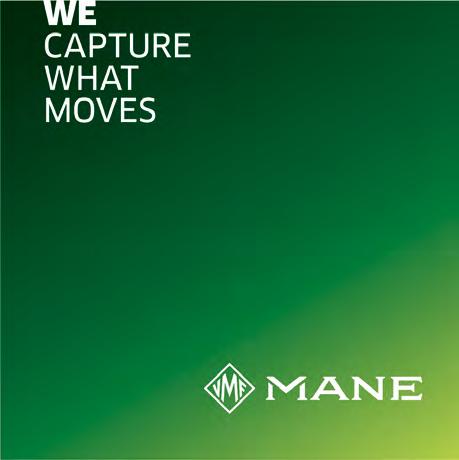
THE FIRST PHOTOGRAPHY
CONTEST BY MANE
CAPTURE WHAT MOVES
EN To support young creative talent, MANE is launching a photo competition for recent graduates of art and photography schools. The group’s next corporate campaign will showcase the competition’s winning photographers.
Scan the QR code for more information.
FR Afin de soutenir la jeune création, MANE lance un concours de photos à destination des diplômés des écoles d’art et de photographie. Les photographes lauréats illustreront la prochaine campagne corporate du Groupe.
Scannez le QR code pour soumettre vos œuvres.
Atelier des ors × DSM-Firmenich A PARTNERSHIP MADE IN HEAVEN
By Aurélie Dematons
DSM-Firmenich and Atelier des ors have been collaborating closely since 2015, creating remarkable fragrances whose sources of inspiration include art, crafts and the French art of living.
No one is a prophet in their own land. A saying that applies, at least partially, to the creative universe of Atelier des ors. While the fragrance house has many sources of inspiration, they all point to the desire to see perfume as “an aesthetic quest, an art of living.” The French brand is shaped by the “culture of elsewhere” dear to its founder, Jean-Philippe Clermont, as well as the decisive encounters that have marked his path through life. Nothing in his former career in fashion then cigar distribution marked him out for the perfume world – other than an olfactory presence that accompanied him on every step of his journey: “I lived in Lebanon then Dubai, and I was always fascinated by the powerful sillages of the Middle East.” A dinner with a bottle designer first opened the door to perfumery. Then the idea of creating a brand came to him, like a castle emerging from the
sand. A second meal with a fine fragrance director at DSM-Firmenich convinced him he needed to meet one of his dinner companion’s friends. “You absolutely have to meet Marie Salamagne,” he was told. “I’m sure she’s the right person for your project.” A meeting was arranged in Paris. “We talked about everything –travel, Dubai, children; we didn’t particularly mention perfumes, but I was captivated, we really connected,” says the brand founder.
In 2015, composition houses tended to focus on major companies and were rarely interested in projects by alternative brands. This particular brand, however, piqued their curiosity: “His approach showed an appetite for the extraordinary: specks of gold in the bottle, a taste for opulent materials, an Art Deco aesthetic,” recalls Marie Salamagne, a perfumer at DSM-Firmenich. “We spoke the same language without having the same background, and I was delighted to draw inspiration from unknown and exotic stories.”
A decade and twenty fragrances later, the two of them are still working happily together. “I enjoy this sort of long-term collaboration, which allows you to develop a degree of intimacy with the perfumer,” says Jean-Philippe Clermont.
“When she presents a trial to me, she can read my face like a book! You could say that Marie is our house perfumer, since she’s been on board since the beginning.” When the brand founder works with her, what he looks for most of all are “elegant and beautiful notes which speak to the imagination: I see perfume as a means of expression, a powerful emotion.” When he is occasionally assailed by doubts, “Marie is always there to address them and reassure me.” For the “Blanche” collection, she was inspired by Gustav Klimt’s Frise Beethoven, proposing a host of trials to explore the abstract theme of Ode to Joy. The range finally emerged three years later: “A long-standing partnership is what makes that possible.” In addition to the advantages of this unique relationship, Jean-Philippe Clermont also benefits from invaluable assistance in building his brand. This includes the development of ad hoc ingredients, as was the case with his “Frivolité” collection, conceived during the pandemic: “The lockdown period that deprived us of social ties made me want to launch a range inspired by a festive feeling.” Two olfactory innovations were custom-developed using the Nature Print technique, also known as “headspace.” They resulted in Pink Me Up, which captures the aroma of champagne, and Noir by Night, a homage to the scent of caviar: “a note that doesn’t play on the ingredient’s usual marine aspect, but on its creamy, buttery facets,” explains Jean-Philippe Clermont. The partnership, however, is not just about olfactory creation: “DSM-Firmenich also helps us with regulatory questions and communication, including by making Villa Botanica in Grasse available to host journalists and influencers.” Any plans for 2024? A new collection, and the acquisition of a property the brand is renovating at the heart of Grasse: Villa Primerose, a beautiful little place where the public will be welcomed. Proof that it is indeed possible to be a prophet in your own land!!
58

© Benjamin Ricard
ATELIER DES ORS AND DSM-FIRMENICH IN 5 PERFUMES
LUNE FÉLINE
Perfumer Marie Salamagne
Launch 2015
Tahitian vanilla is in the limelight, warmed up by balsamic and animalic notes – styrax, Peru balsam and ambergris – and embellished with a spicy hint of pink pepper and cardamom.
ROSE OMEYYADE
Perfumer Marie Salamagne
Launch 2015
A Damask rose crystallized in brown sugar and infused with raspberry, its sillage given depth by agarwood and guaiacwood.
NUDA VERITAS
Perfumer Marie Salamagne
Launch 2018
A luminous orange blossom creating the impression of a white cloud. The base centers on moss which unveils its salty notes, underpinned by a sensual Ambrox.
NOIR BY NIGHT
Perfumer Marie Salamagne
Launch 2022
Caviar is given a highly unusual treatment: Coriander and incense suggest radiance, while guaiacwood and sandalwood envelop it, adding depth and creaminess.
PINK ME UP
Perfumer Marie Salamagne
Launch 2022
A delight that sparkles like champagne bubbles. Centifolia rose unfurls in joyous and fruity facets of bergamot and blackberry, unwrapping a base note that pays tribute to the nobility of patchouli and iris.
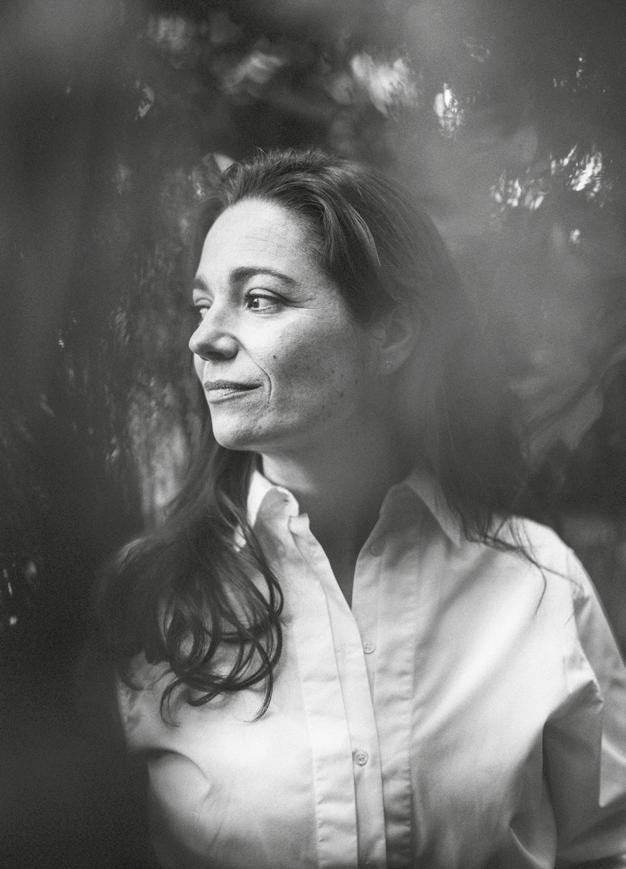
“Jean-Philippe gives me carte blanche when it comes to olfactory direction, and the creative process is pretty intuitive.”
3 questions for Marie Salamagne, DSM-Firmenich
How did you develop the signature olfactory style of Atelier des ors?
At first, the brand centered on iconic ingredients – vanilla, rose and iris –bound together by the concept of offering elegant, textured fragrances. Jean-Philippe gives me carte blanche when it comes to olfactory direction, and the creative process is pretty intuitive, a mix of his inspiring travels and my personal tastes. I’m always keen to hear his first impressions because he’s very spontaneous – his eyes sparkle when he likes a note! He also has a lot of respect for everything I propose; nothing is set in stone.
What form do his briefs take?
The themes vary from one collection to the next. Jean-Philippe shares his experiences and his taste for art with me. Sometimes the brief is very hands-on, like when he turned up for Bois Sikar with cigars and Lagavulin 16-year-old whisky. He knows I’m very visual so he brings along storyboards to illustrate a new adventure, a journey. For the “Frivolité” collection, he showed me images of women in a palace. I remember noticing the shininess of a tin of caviar and I wanted to replicate it with a maté, incense and coriander accord. At other times the brief is more abstract: For Nuda Veritas, I worked on finding something that could add a sort of light and purity. A note that wasn’t really in his usual style, but I told him: “Wear it, you’ll be seduced by its sillage.” And he’s always very happy to listen.
What aspect of this exclusive relationship do you value the most? I feel very fortunate. Playing the role of “house creator” for Atelier des ors enables me to see the whole; it means I can build the brand’s olfactory identity. My interactions with Jean-Philippe enrich my research. I really enjoy our discussions: They’re very spontaneous but we also know how to take the time needed to accomplish what we set out to do.
60
COMPTOIR NICHE BY NEZ © DSM-Firmenich
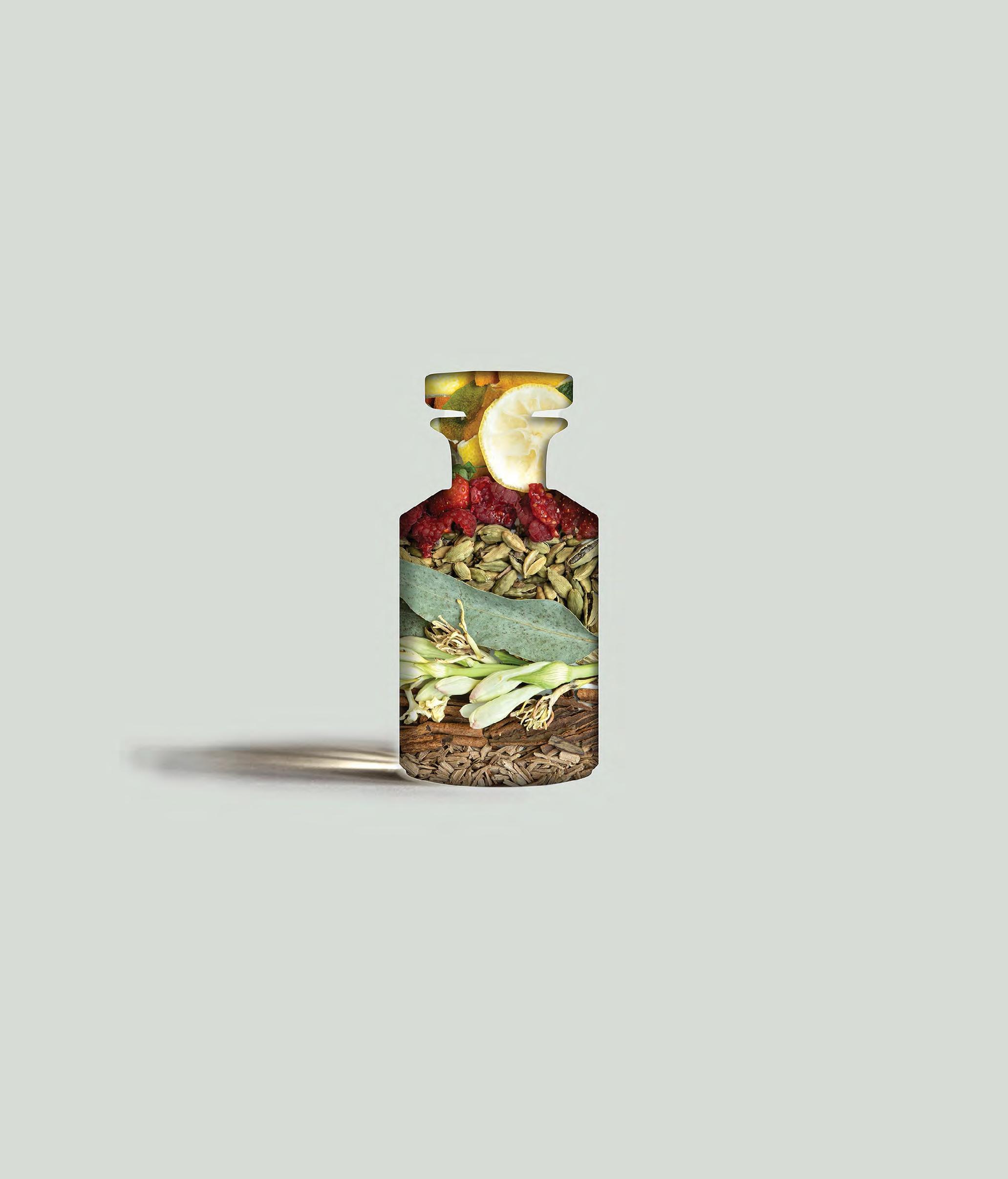
Leading in Transparency with EcoScent Compass®
Next Generation*

Environmental & Social Impact of Fragrances**
*Pionnier de la transparence avec EcoScent Compass® Nouvelle Génération
** Mesurer et guider l’impact environnemental et social de nos parfums


Judith × Symrise A WONDERFULLY VINTAGE PARISIENNE
By Béatrice Boisserie
Sarah-Lee Chlewicki, with 15 years of experience as an evaluator under her belt, decided to launch Judith in 2022, working hand in hand with the Symrise teams.
The fresh new perfume brand paints a stylish portrait of today’s Parisienne – feminine, cool and elegant –as it revisits the olfactory aesthetic of the 1980s.
aromatic baby could well have seemed a little premature: “I arrived at Symrise in December 2021 and launched Judith just six months later.” But Sarah-Lee had been planning her new adventure for a long time – since the COVID-19 pandemic. “Naturally I talked about it at my job interview. And they said: ’Let’s give it a go!’”
between cool, seductive and sophisticated. With Col rond, Taille haute and Oversize, Sarah-Lee takes a fresh look at the fashion shapes from the era, illustrating a deliciously vintage complexity that is wholly feminine. And she has an eye for detail: The font for the perfume name on the bottles is based on car decal typography from the 1980s!
“When I arrived at Symrise, the concept for Judith was ready, only the smells were missing!” Sarah-Lee Chlewicki is a 40-year-old evaluator and the founder of Judith, a young brand that emerged only a few months ago. The birth of this
Sources of inspiration for the perfume collection include Paris, fashion and the 1980s, the decade when Sarah-Lee was growing up in the capital and putting down her olfactory roots (“the trends that made me fall in love with the world of perfume”). She also forged her visual codes for the ideal woman during those childhood and teenage years, with a preference for Meg Ryan or Julia Roberts as role models for women who feel good about themselves.
The first three fragrances from Judith draw on different archetypes of femininity to portray a versatile Parisienne who loves to dress up, moving seamlessly
Another motivation for her was “the desire to smell these perfumes, to be able to wear them.” Never without emotion.
As Sarah-Lee explains: “For Taille haute, for example, Suzy immediately understood what my intention was. When I smelled it for the first time, it corresponded exactly to what I’d had in mind: I was enormously touched by it; I even had tears in my eyes.” Suzy is Suzy Le Helley, the 32-year-old highly gifted perfumer behind two of the first three Judith fragrances. “Her style is clean, intelligible; it perfectly expresses everything I want to emphasize,” she adds.
62
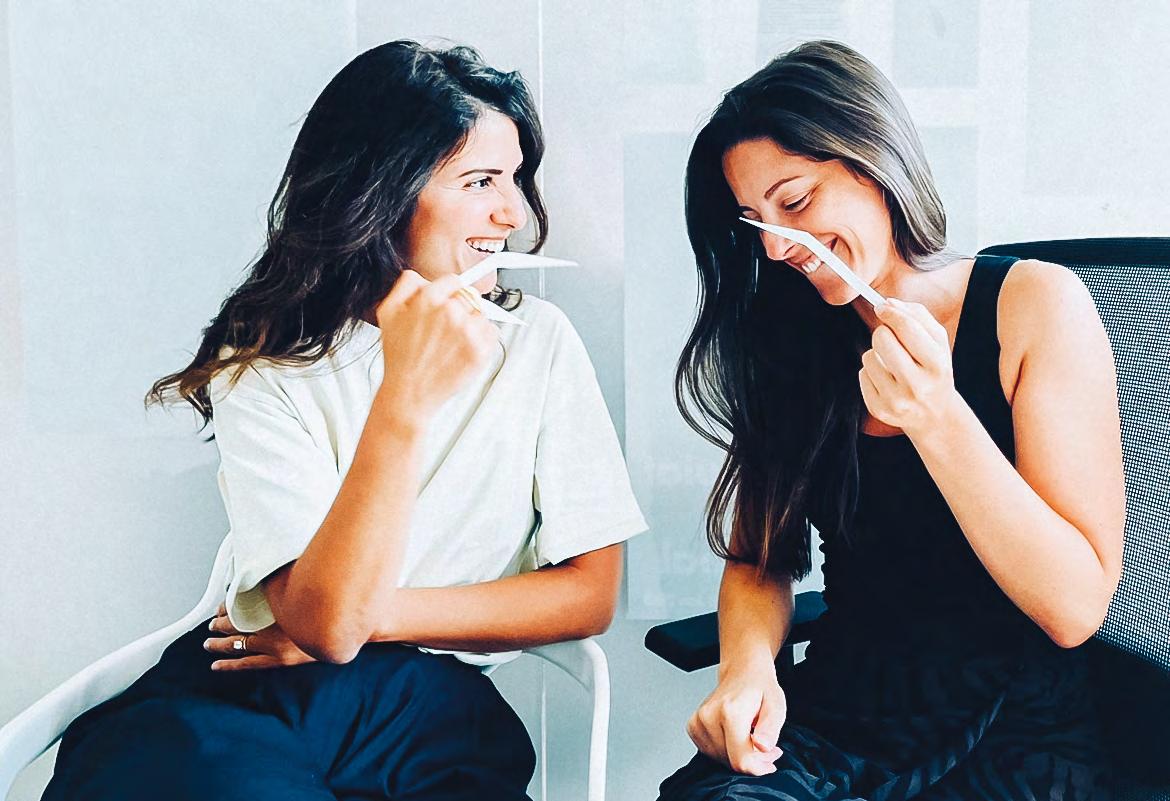
The two women met barely two years ago at Symrise and bonded right away. After just four months they began working on the Judith project. “We speak the same language; we have the same aesthetic codes regardless of the project or note,” says Sarah-Lee. “We really did elaborate the fragrances together.” While their relationship hasn’t changed since SarahLee has taken on two roles, as evaluator and creative director, their mutual trust has kept growing. “What I love is that Suzy listens to me, but she also takes me out of my comfort zone.” And Sarah-Lee felt “extremely flattered” that perfumer Maurice Roucel agreed to work with the young brand, creating the oriental fragrance Oversize. Today, the collection continues to evolve: “The perfumes are designed to form a whole; we need to be able to explore different olfactory territories.” Two new releases are scheduled for 2024. “They smell so good!” exclaims Sarah-Lee. Suzy worked on the first one, a zesty floral
drenched in orange blossom. The second, created by Aliénor Massenet, pays tribute to oakmoss, “an ingredient [she] adores.” Judith will also work with clothing brand Arizona Love. “Since my whole world is tied to fashion, I’m not limiting myself to selling only in perfume stores,” explains the brand founder. The 14 places in three different countries offering the brand include hotels, in Saint-Tropez and Méribel, a concept store and a secondhand store in Paris.
The question begs to be asked: Who exactly is Judith? “It’s the name of my 10-year-old daughter. But before that it was the name of a woman I felt embodied the ideal Parisienne, free-spirited and feminine,” explains Sarah-Lee Chlewicki. “I wanted a powerful name to personify the brand.”
“We speak the same language; we have the same aesthetic codes regardless of the project or note. We really did elaborate the fragrances together.”
Sarah-Lee Chlewicki, evaluator at Symrise and founder of Judith
© Symrise
JUDITH AND
IN 3 PERFUMES
TAILLE HAUTE
Perfumer Suzy Le Helley
Launch 2022
A fragrance inspired by Sarah-Lee’s desire to modernize florals from the 1980s and 1990s that meant something to her (Paris by Yves Saint Laurent, Escape by Calvin Klein). Suzy Le Helley added woods to rose oxide to really bring the accord alive.
COL ROND
Perfumer Suzy Le Helley
Launch 2022
“The smell of your man’s clean T-shirt worn like a second skin.” An effect produced by an overdose of dihydromyrcenol (DHM), a molecule rarely seen in feminine fragrances. Suzy had the “aesthetic intelligence” to add jasmine and a woody complex, transforming the DHM into a new musk.
OVERSIZE
Perfumer Maurice Roucel
Launch 2022
The only one of the olfactory trio to be created by Maurice Roucel, the Symrise amber master. A balsam-like jasmine steeped in sensuality. Woody and musky, Oversize has the reach of elegant perfumes like Lancaster Concentrate or Youth-Dew from Estée Lauder.
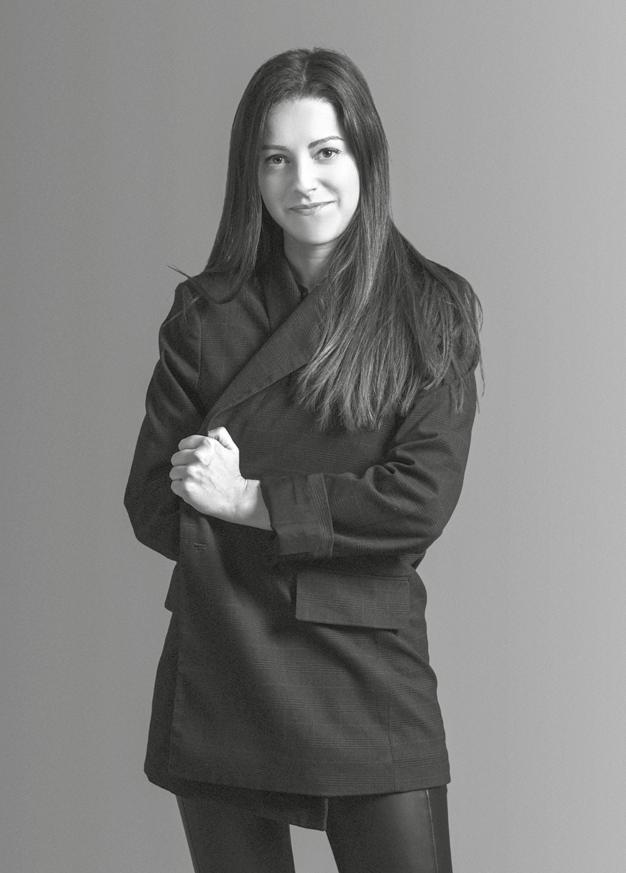
“As Sarah-Lee knows, I have to be honest.”
6 questions for Suzy Le Helley, Symrise
Is it easier or more complicated to work with a client who is also an evaluator at a fragrance company?
With Judith, Sarah-Lee is both judge and jury for her own brand: She performs her duties as an evaluator while playing the role of creative director. It’s tricky and really nice at the same time. As she knows, I have to be honest (laughs).
What do you mean?
For example, by proposing, among other possibilities, a concept based on citrus fruits for essentially technical reasons, even when she’s explicitly asked me not to go down that path.
And does it work?
Sometimes. But the main thing is that it goes two ways! We trust each other; we understand each other. And most importantly, we know we can say anything to each other, because we’re not oversensitive. The evaluator role is also a challenge for the perfumer.
Especially since Sarah-Lee always knows exactly what she expects of an accord she has in mind. Happily, her briefs and the names of the fragrances she chooses are always very clear. With Taille haute, for example, the goal was to modernize florals. And with Col rond, our aim was to take an ingredient traditionally associated with a very masculine fougère accord and make it feminine and sexy.
How would you describe Judith?
As a brand that is engaged, in the professional as well as the personal sense. I think it’s a very brave thing to do, launching a brand when you’re still an employee. But when Sarah-Lee talks about Judith, everyone can see how passionate she feels. The brand speaks to people because it’s embodied.
What specifically does Symrise bring to the project?
The fact that it allows an evaluator who’s in charge of a major account to spend time on a fulfilling personal project on the side. Symrise trusted her. That sort of freedom is invaluable. Not all fragrance houses would have given it to her.
64
COMPTOIR NICHE BY NEZ
SYMRISE
© Martin Lagardère
DE LA TERRE AUX ESSENCES
L'histoire continue*

MAISON LAUTIER 1795 , LA NOUVELLE MARQUE D R É INTERPR È TE LA PARFUMERIE
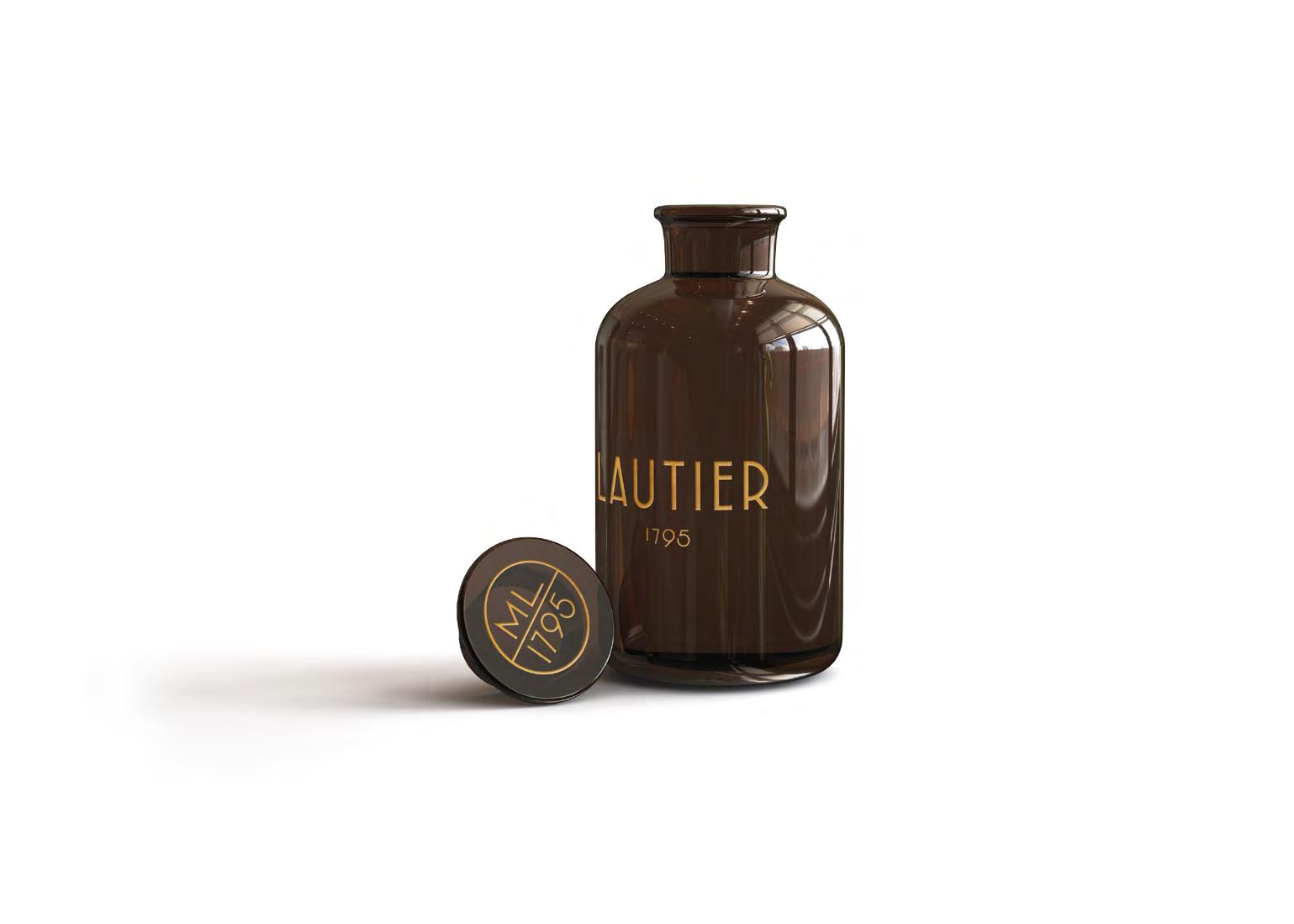
NATURELLE EN RELIANT L ' ARTISANAT ET LES M É TIERS DU PASS É AUX INNOVATIONS DU FUTUR .
MAISON LAUTIER 1795 , IS SYMRISE NEW NATURAL INGREDIENTS BRAND
CONNECTING THE CRAFT OF THE PAST WITH THE INNOVATION OF THE FUTURE .
* FROM EARTH TO ESSENCE T he story continues
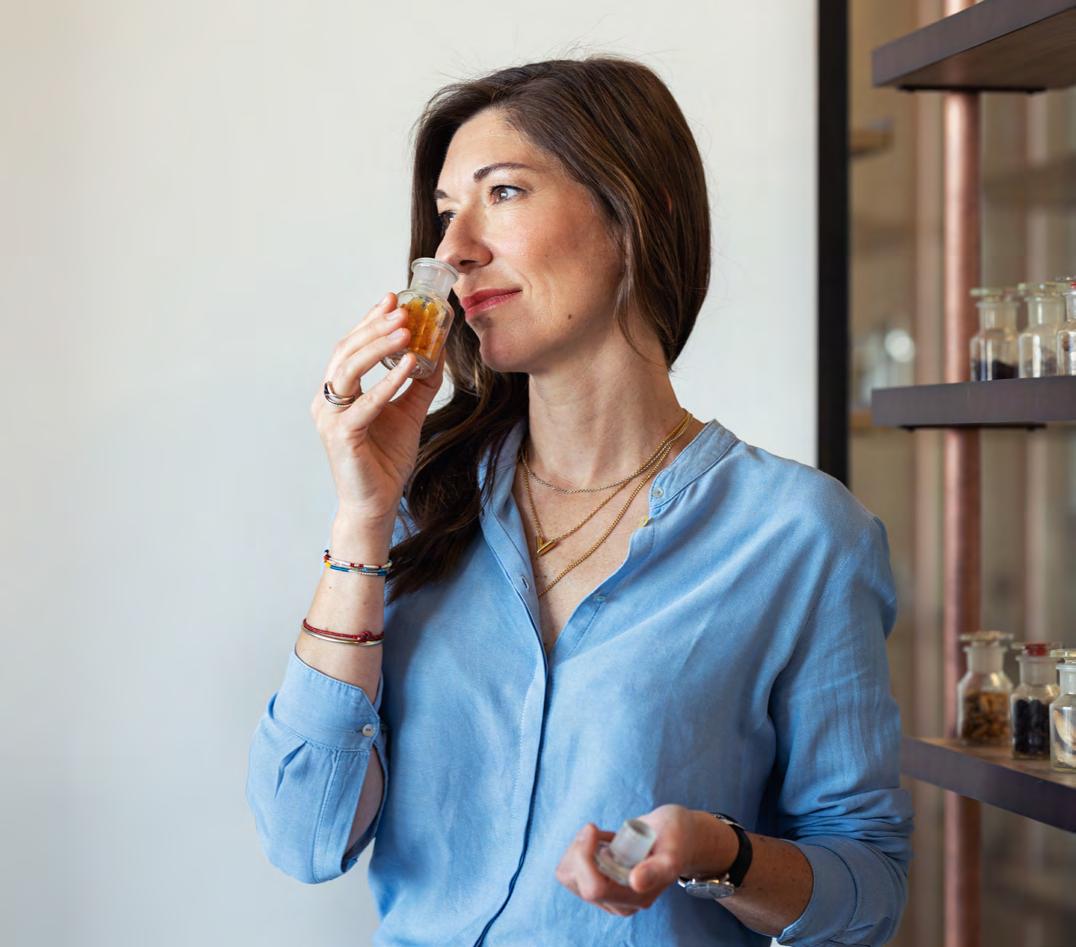
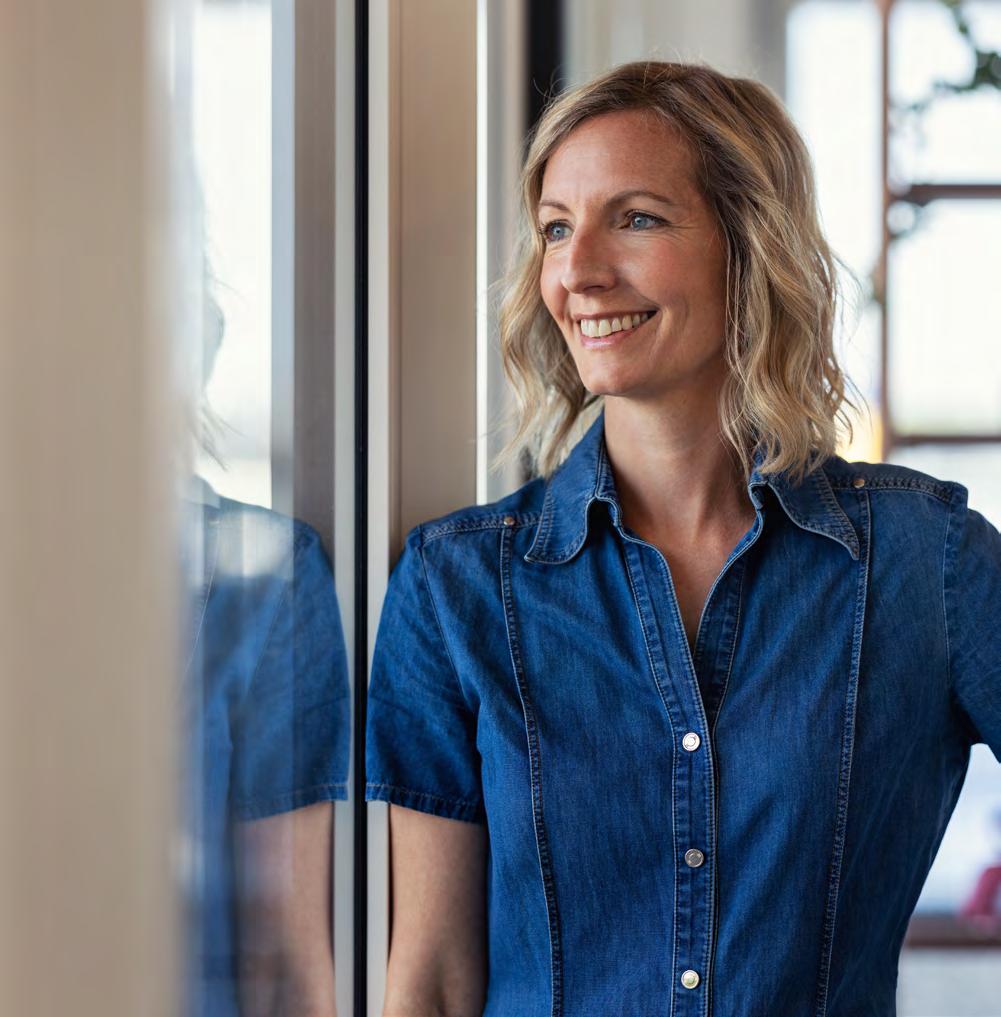
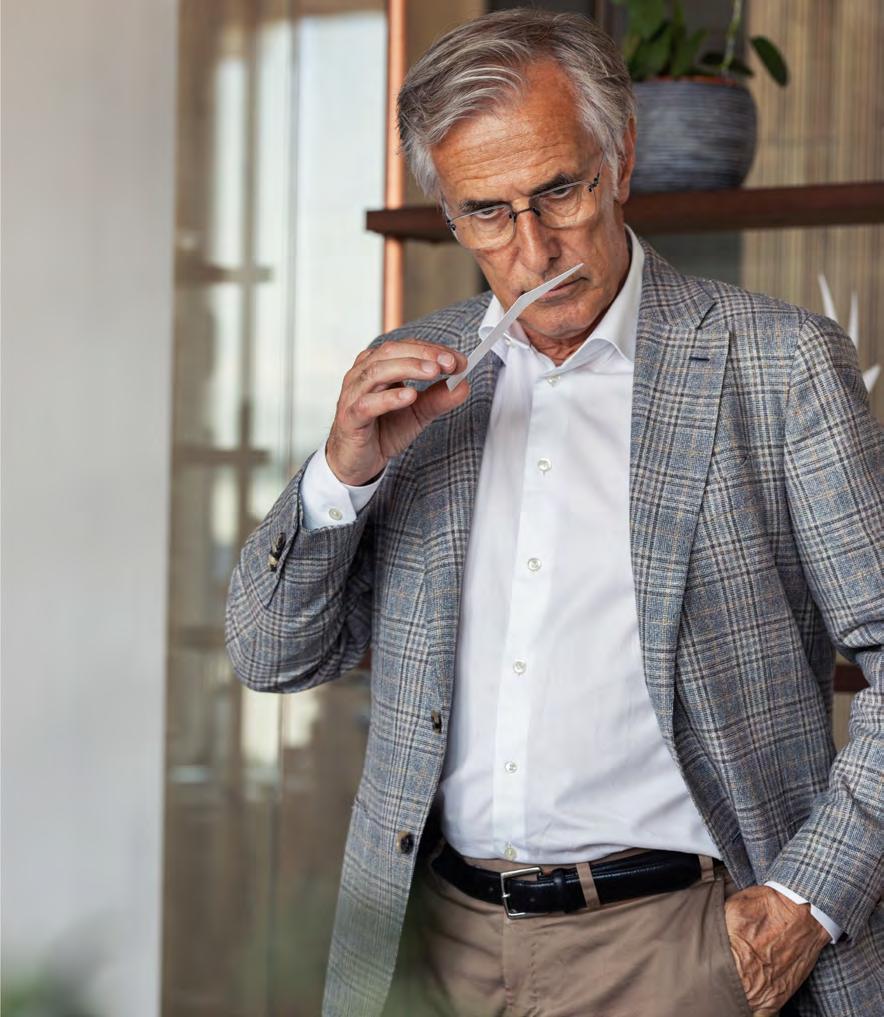
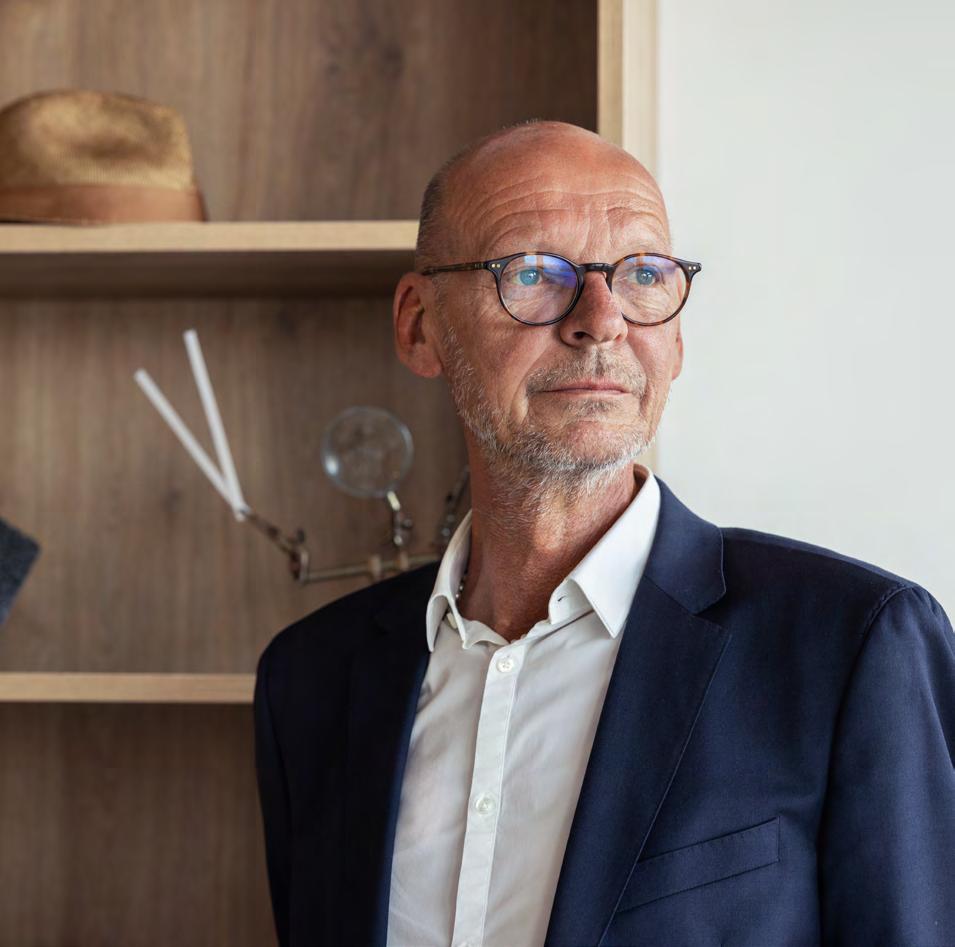
la créativité au service de vos sens Switzerland • France • Malaysia www.luzi.com
Mark Buxton Master Perfumer
LLEN FRAGRANCE PUTTING BIG EFFORTS INTO SMALL BRANDS P.71
THE NICHE ACADEMY THE ART OF TRANSMITTING OLFACTORY CULTURE P.71
MÄURER & WIRTZ WHEN A SILLAGE OPENS UP NEW HORIZONS P. 68
U ZI
SIDONIE GRANDPERRET AND MARK BUXTON TWO TAKES ON NICHE P.72
67
When a sillage opens up new horizons
High-end perfumery occasionally surfaces in unexpected places. Known for its mainstream fragrances, German company Mäurer & Wirtz is exploring a new territory with the support of fragrance house Luzi. How is such a change of direction formulated? The two partners explain the strategy and the issues involved.
Text: Guillaume Tesson
“Together we visited various museums and tasted delights from a master chocolatier.” No, Roland Altenburger, CEO of Swiss fragrance house Luzi, isn’t talking about a honeymoon. He’s simply describing proposed activities for immersing the Mäurer & Wirtz management team in the niche universe. In 2020, Luzi joined DSM-Firmenich, IFF and Takasago in the circle of fragrance houses as a new challenger, paving the way for Mäurer & Wirtz to set sights on more premium fragrances. Since 1845, Mäurer & Wirtz built a solid reputation selling soaps and fragrances under brands 4711, Tabac, Baldessarini and Tosca. The house is historically present in German-speaking markets, in sales outlets like drugstores and pharmacies.
The company has happily embraced this mainstream approach. The arrival in 2020 of new CEO Stephan Kemen, formerly at L’Oréal, marked the expansion of the portfolio into the premium category.
“This diversification is at the heart of our ’Road to the Top’ strategy, until 2030,” explains Stephan Kemen. “We want to offer fragrances throughout the world for all tastes and all budgets. Currently, 35% of our sales are exports, compared to 10% to 15% five years ago. Over the last three years, we have increased the number of perfume brands we offer from nine to 16, with prices ranging from less than 10 euros for entry-level perfumes to 120 or even 230 euros for the more exclusive products.”
68
Opposite Behind the scenes at Luzi.
Photos: Nico Schaerer

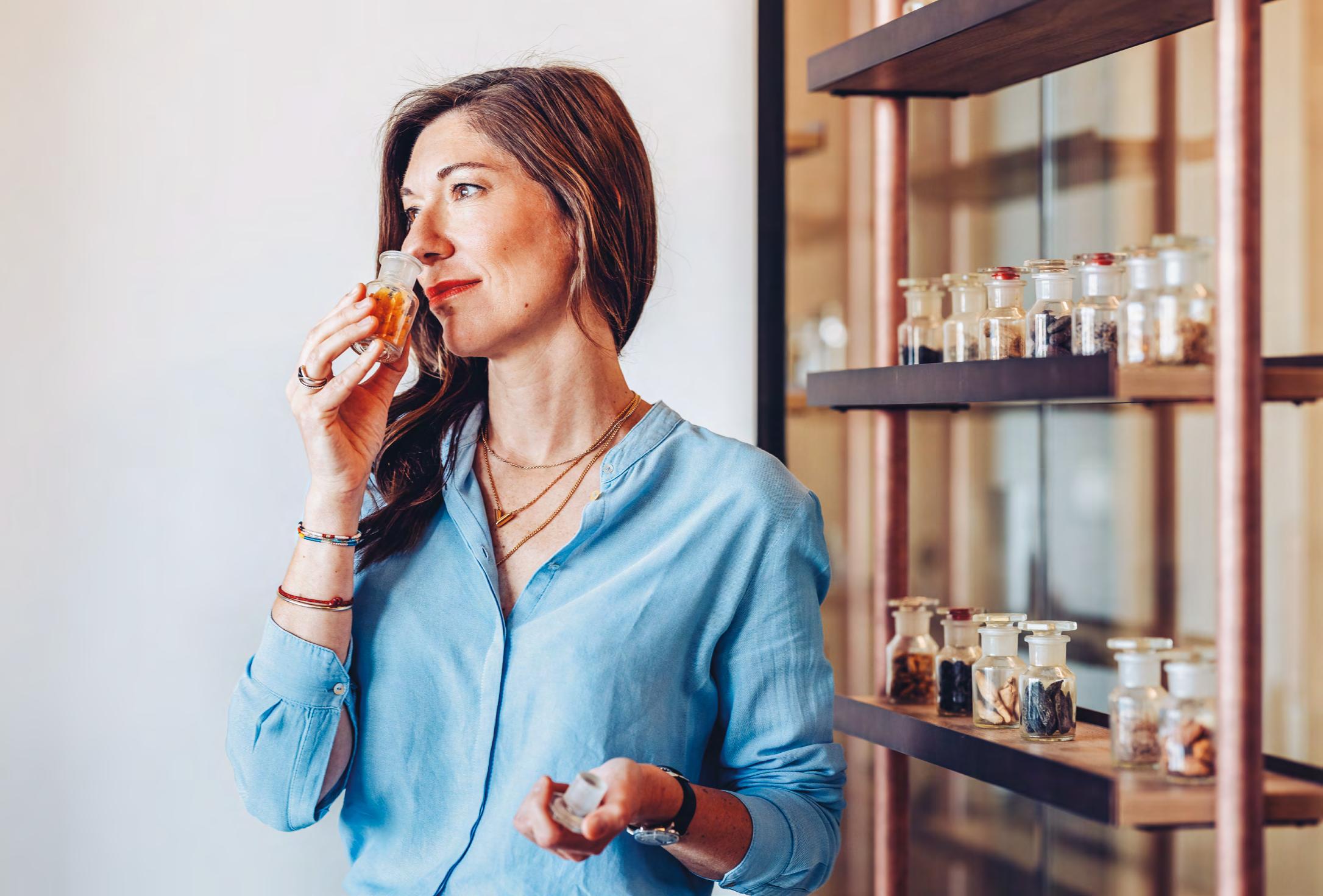
One of the areas of expertise Luzi is drawing on as part of the collaboration with the German company is its knowledge of the Middle Eastern market, a region the fragrance house has been closely working with since 1960. Roland Altenburger feels it has “clear similarities with the niche market: powerful sillages and gorgeous ingredients like rose, incense and oud.” The know-how of perfumer Mark Buxton further bolstered the fragrance house’s credibility. He was brought on board after many years spent composing niche creations at Symrise before setting up his own brand. “We value the creativity and disruptive drives Luzi is capable of,” says Samit Sen, Chief Marketing Officer at Mäurer & Wirtz.
Luzi’s ability to adopt a responsive and agile approach is also a result of the complementary working partnership of Jeanne Bichet and Miro Senjak. Jeanne Bichet, an evaluator (Fragrance Development Manager) who previously
worked at DSM-Firmenich and IFF, sees herself as “the nose for the consumer and the client.” “We have to show the same reactivity as though we were part of their team,” she explains. Miro Senjak is Luzi’s Marketing Director as well as a perfumer and former Mäurer & Wirtz employee, spending three years designing bottles for the company. Since 2023, the two of them have developed fragrances for the “Acqua Colonia Collection Absolue” range, a luxury extension of the famous 4711 eau de cologne. “The main objective was to respect the heritage of the 4711 house and its expertise while giving the ’Absolue’ fragrances a modern and timeless feel,” explains Samit Sen. “4711 is a strong candidate for a shift to the upmarket. We wouldn’t be able to do it with all our brands.” Luzi has created four of the “Absolue” collection fragrances – including Amber Mandarin, composed by Miro Senjak. Luzi decides beforehand on the perfumers who will be involved. “We
“We value the creativity and disruptive drives Luzi is capable of.”
Samit Sen, Chief Marketing Officer at Mäurer & Wirtz
Above Sidonie Grandperret, perfumer at Luzi.
Len Fragrance
PUTTING BIG EFFORTS INTO SMALL BRANDS
Out of the 2,000+ launches each year worldwide, how many niche fragrances manage to reach an audience and ensure their compositions have a long-term future? In a bid to put all the odds on their side, some brands opt for investing in services offered on different levels. Fragrance creation by an in-house perfumer, mentoring for the choice
of packaging and bottling, and so on. Like most major fragrance houses, Luzi provides its services to emerging labels wanting the best possible start. Len Fragrance, whose shareholders include Luzi CEO Roland Altenburger, is one of them. “Launched in 2019 by German creator Jelena von Olnhausen, each fragrance illustrates a love story in an emblematic town,” explains Roland Altenburger. “The initial range was attractive, but Jelena wanted her next step to become daring, with surprising ingredients.”
Daniela Marty, a perfumer at Luzi, is fond of translating flavors into scents. For Darling Bogota, she was handed a brief evolving around a romance in Colombia, with carte blanche when it came to choosing the ingredients. It resulted in a cocktail
The Niche Academy
THE ART OF TRANSMITTING OLFACTORY CULTURE
Transmitting niche perfumery culture to make it universally comprehensible: This is the promise made by the Niche Academy, an in-house initiative at Mäurer & Wirtz.
Originally designed for sales staff, the educational unit set up by Chief Marketing Officer Samit Sen provides training to employees who previously only sold mainstream fragrances. These include one of the most accessible ranges, the “Route 66” collection positioned at under 10 euros for a 100-ml bottle, a far
cry from the 120 euros proposed by a new house collection like “Les Destinations”! “What I learned from the time I spent at Guerlain in Germany was the idea of involving the sales teams on a sensory level. If you don’t feel the emotion yourself, you’re less likely to share a perfume’s story,” points out Samit Sen.
The Niche Academy features a series of workshops, some of them facilitated by Luzi. “We offer an initiation process ranging from fragrance development techniques to storytelling cues at sales outlets,” explains Jeanne Bichet, an evaluator (Fragrance Development Manager) at Luzi, who runs the workshops alongside Miro Senjak, Marketing Director for the Swiss company. “The highlight is an olfactory mapping of 50 fragrances from the 1980s to today.” The lineup includes pioneering scents like Eau d’Hadrien by Annick Goutal (1981)
based on cola, rum, tobacco and chili. “When freedom of creativity is a given, we’re allowed to get a little crazy,” she says. Jelena von Olnhausen has no trouble urging perfumers to rethink the boundaries. “For a fragrance inspired by Japan to be released this year, I convinced Paulo de Moraes to push the limits, and he developed a cherry accord with extraordinary tenacity, which is in theory very difficult to achieve. I enjoy giving them a challenge,” the entrepreneur says with a smile. It’s a positive and productive alliance, but there’s one parameter that remains unpredictable: attracting consumer loyalty, something that may well need a little patience. “No matter how much effort is put in, a brand needs several years to establish itself,” notes Roland Altenburger. and Féminité du bois from Serge Lutens (1992), representatives of the niche boom (Santal 33 by Le Labo), and the Acqua di Parma range, a nod to the “Collection Absolue” extension of the 4711 Acqua Colonia range. At the end of a marathon day, participants who have fallen in love with a particular fragrance are lucky enough to bring a 4-ml bottle home. Participation in the workshops has been extended to the marketing teams, with Luzi offering olfactory training focused on taste (pastries, chocolate, etc.) and in alignment with brands and fragrances under development. A complementary small-scale version (for three or four people) of this awareness-raising initiative at Luzi is called a Trend Tour, designed to provide an inspiring experience in the field, with visits to trade fairs in cities including Paris, Milan and Florence as well as sensory stopovers steeped in perfume.
71
LUZI
Sidonie Grandperret and Mark Buxton Two takes on niche
They both are perfumers at Luzi: Sidonie Grandperret, in-house since 2010, and Mark Buxton, since 2020. Sidonie composes for brands like Micallef, while Mark formulates fragrances for the “Absolue” collection in the 4711 Acqua Colonia range. Now, they both lend their creative talents to “Les Destinations” for Mäurer & Wirtz. They explain how composing for niche brands requires two qualities which might seem incompatible at first glance: perspective and attachment.
the way the creative process works, interacting mainly with our colleagues in the Fragrance Design (evaluation) and Marketing departments since they make the link between perfumers and the client. With an independent brand, the structure is smaller and discussions more spontaneous. We communicate directly with the founder or the creative director.
mark buxton I composed a lot for Mäurer & Wirtz when I was at Symrise, between 2004 and 2011. And recently, I have been creating for the “Absolue” collection in the 4711 Acqua Colonia range. It’s pretty straightforward: I have a lot of freedom and I don’t feel like there are any particular constraints. Maybe it is because their teams, just like at Luzi, are young and spontaneous. For an old guy like me, it’s wonderful to work in that sort of atmosphere!
able to share their vision with me, and we both developed a mutual understanding.
s.g. When an idea bubbles up, some clients call me directly. That’s what happens with Micallef, with whom I work nearly every day. The company is led by Martine Micallef and Geoffrey Nejman, a couple of creators who design the bottles and oversee the production from scent design to packaging. They’re always open-minded and listen to the advice they’re given. We’re very close.
What is your creative approach when dealing with clients?
How is it different to create for a niche brand belonging to a company such as Mäurer & Wirtz compared to small independent houses?
sidonie grandperret At Luzi, we work on all types of projects for consumers from all around the world. Personally, I put the same energy into each one regardless of the brand. Nevertheless, there are differences in the way we communicate. For Mäurer & Wirtz, we are in competition with other composition houses. We respect
At what point does a special relationship develop with the clients?
m.b. I had the opportunity to create seven or eight perfumes for Comme des garçons, including their very first fragrance in 1994. It led to a very close relationship, especially with the Comme de garçons creative director, Rei Kawakubo. She says she still only wears that fragrance to this day. More recently, the designers in charge of the Hong Kong brand Oddity were
m.b. I don’t have a library of formulas I can draw from. I only create madeto-measure fragrances. My style is “loud,” overdosed, with lots of smoky and metallic notes. I’ve often been told: “If there are ten samples on a table and only one of them is from Mark, you’ll find it straightaway.”
s.g. There’s a side of me that’s very focused on raw materials. I like working on textures and contrasts. Maybe because I didn’t come to the industry through perfume, but through cooking and wine. I take a multisensory approach, which is why language and communication with our clients are so important. You don’t create for yourself but for clients, who are artists themselves, and sometimes even develop for other clients.
72
LUZI
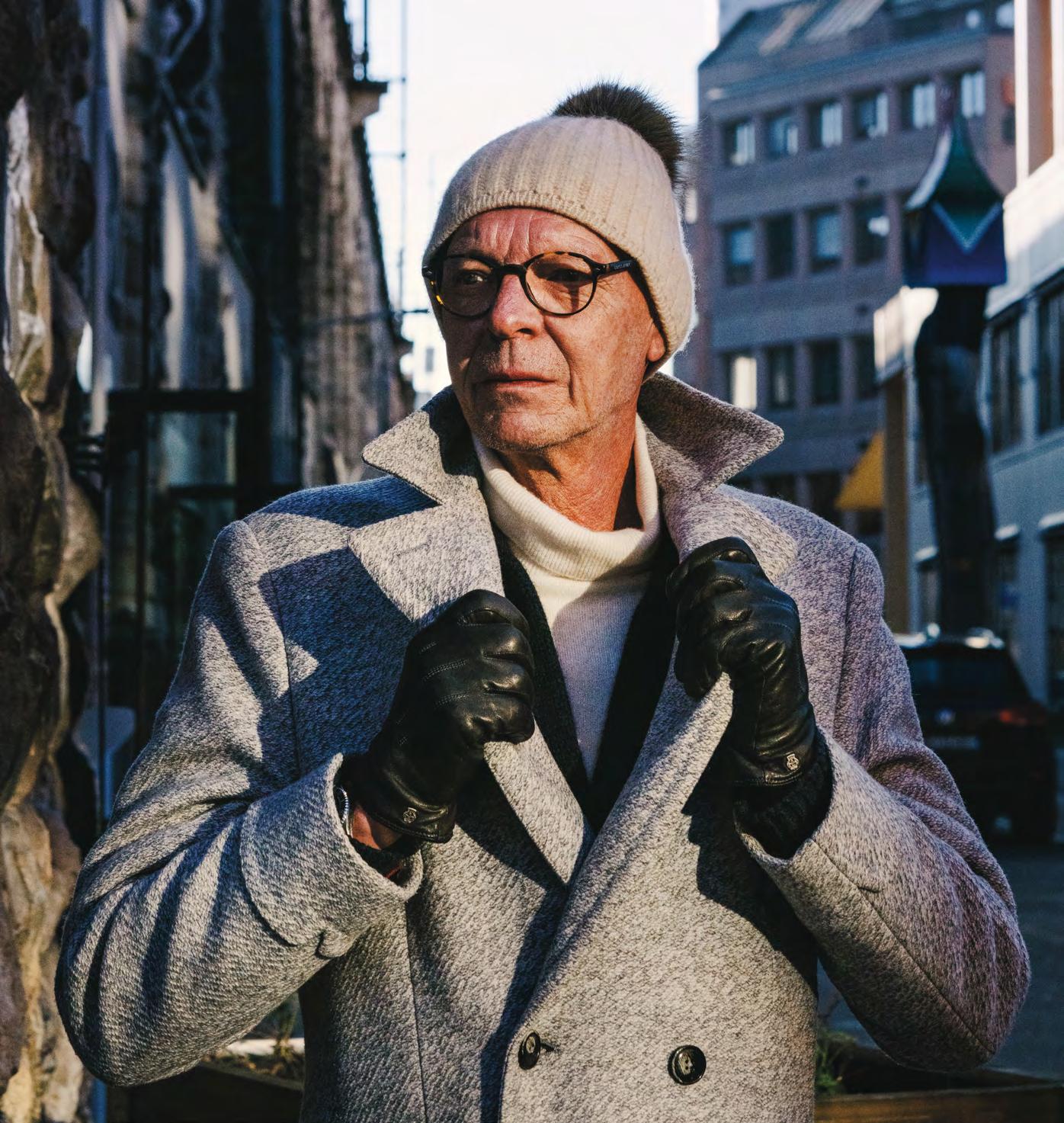
prefer to discuss and allocate the briefs based on each perfumer’s affinities so that we gain efficiency and save time,” explains Jeanne Bichet. When not repositioning existing brands like 4711 in the niche sector, the German company starts with a blank page, as with “Les Destinations.” Luzi is behind several fragrances in the collection, launched in 2021. “The range is inspired by perfumers’ olfactory memories. We were asked to conjure up landscapes, tastes, smells, a city district, and so on, with no other limitations,” recalls Sidonie Grandperret, the perfumer behind Isparta. On the financial side, each brief is matched to a budget that can’t be exceeded. But, according to the two companies, this poses no constraints on creativity. “Apart from captive molecules developed by our competitors, we can incorporate just about any ingredient we want in our formulas,” according to Luzi’s creative team.
And to find their way around this galaxy where over 2,000 fragrances are sent
into orbit every year, the Swiss company runs olfactory workshops as part of the Niche Academy set up by Samit Sen for the Mäurer & Wirtz sales teams. It also provides training every two months to brand managers for the brands in question. “If you want to talk about niche perfumery – and sell it – you need to understand it!” concludes Jeanne Bichet.
GNTONIC
Brand Micallef
Perfumer Sidonie Grandperret
Launch 2023
A cocktail of freshness, with sparkling citrus, mint and ginger, gives way to an addictive woody base enhanced with a hint of nutmeg.
ORCHID VANILLA
Brand 4711 Acqua Colonia Collection Absolue
Perfumer Mark Buxton
Launch 2023
An ode to the orchid’s milky-vanilla notes, warmed up by pepper and cardamom with a lush Madagascar forest in the background.
DARLING BOGOTA
Brand Len Fragrance
Perfumer Daniela Marty
Launch 2023
A fiery, sensual burst of chili draped in tobacco smoke, with the base notes of sandalwood and musk infused with rum and cola.
73
LUZI IN 3 NICHE PERFUMES
© Franck Juery Above
Mark Buxton, perfumer at Luzi.

THE INTERNATIONAL GUIDE TO NICHE PERFUMERY
Where would niche perfumery be without the network of independent perfumeries showcasing all the latest creations for perfumer lovers to discover? How do these fragrances, born in the intimate surroundings of the independent perfumer’s lab or the bigger world of the leading composition houses, find their way to consumers? What are the places that serve as temples to olfactory culture? From France to the USA, Hong Kong to Mexico and Bali, we have selected for you a handful of these special places that keep niche perfumery alive every day and help to spread a universally shared olfactory culture.
To find out more, go to: mag.bynez.com/ niche-by-nez
Full list of our stockists: mag.bynez.com/stores
To become a stockist, contact us at: shop@bynez.com
Niche by Nez is also available online: North America: www.nez-editions.us Europe: shop.bynez.com
NORTH AND SOUTH AMERICA
BRAZIL
SÃO PAULO
Paralela Escola Olfativa R. Cláudio Soares, 72 cj 504, Pinheiros São Paulo, SP 05422-030 paralelaescolaolfativa. com.br
CANADA
MONTREAL
Etiket
1826 O rue Sherbrooke QC H3H 1E4 Montreal etiket.ca
VANCOUVER
Scentrique 466 Granville St BC V6C 1V4 Vancouver scentrique.com
MEXICO
SANTIAGO
DE QUERÉTARO
Ars Aromatica Studio Av. Hércules Ote. 10 76069 Santiago de Querétaro arsaromaticastudio.com
UNITED STATES OF AMERICA
CHICAGO
Field & Florist Division
1908 W Division St Chicago, IL 60622 fieldandflorist.com
Field & Florist
Monadnock 312 S Dearborn St Chicago, IL 60604 fieldandflorist.com
DALLAS
The Scent Room 3699 McKinney Ave Suite 301 Dallas, TX 75204 thescentroom.com
LAKEWOOD
Indigo Perfumery 12011 Detroit Ave Lakewood, OH 44107 indigoperfumery.com
LOS ANGELES
Scent Bar DTLA
777 S Alameda St
Los Angeles, CA 90021 luckyscent.com/scentbar
Scent Bar Hollywood 7405 Beverly Blvd Los Angeles, CA 90036 luckyscent.com/scentbar
NEW YORK
Scent Bar New York 244 Elizabeth St New York, NY 10012 luckyscent.com/scentbar
PHILADELPHIA
Perfumology
25 N 3rd St Philadelphia, PA 19106 perfumology.com
PLANO
Perfume Express
6121 W Park Blvd Plano, TX 75093 perfumexp.com
PORTLAND
Fumerie Parfumerie 3584 SE Division St Portland, OR 97202 fumerie.com
SAN FRANCISCO
Ministry of Scent (Tigerlily Perfumery) 973 Valencia St San Francisco, CA 94110 ministryofscent.com
ZGO
600 Castro St San Francisco, CA 94114 zgoperfumery.com
Luckyscent Online shop luckyscent.com
75
ASIA
CHINA
HONG KONG
Scented Niche
Gough St Central 32
Hong Kong scentedniche.com
Scented Niche
Shop 210A
Musea Tsim Sha Tsui Hong Kong scentedniche.com
INDONESIA
BALI
L’Atelier Parfums et Créations
Jl. Nakula No.18, Seminyak, Kec. Kuta, Kabupaten Badung 80361 Bali perfumeworkshops.com
UNITED ARAB EMIRATES
DUBAI
Villa 515
Jumeirah 3, Jumeirah Beach Road Dubai villa515.com
VIETNAM
HO CHI MINH
Scents Vortex 52 Dong Du, Ben Nghe Ward, District 1 Ho Chi Minh City lapogee.vn
EUROPE
AUSTRIA
VIENNA
Osmotheca GmbH
Gumpendorfer Str. 31-33 1060 Vienna osmotheca.com
BELGIUM
BRUSSELS
Beauty by Kroonen & Brown rue Lebeau 67 1000 Brussels beautybykroonen.com
Smell Stories rue des Teinturiers 15 1000 Brussels smellstories.be
CZECH
REPUBLIC
BRNO
Vavavoom
Radnická 9 602 00 Brno-střed vava-voom.cz
FRANCE
ANGERS
Passage 31
11 rue des Lices
49100 Angers passage31.com
AUCH
Art des sens concept store
2 rue Laborde 32000 Auch instagram.com/artdessens__ conceptstore
BORDEAUX
La Parfumerie bordelaise 17 rue du Temple 33000 Bordeaux laparfumeriebordelaise.com
La Parfumerie de l’Opéra 10 bis allées de Tourny 33000 Bordeaux parfumerie-operabordeaux.fr
Le Nez insurgé 32 rue du Pas-Saint-Georges 33000 Bordeaux lenezinsurge.com
BOURGES
Mix lab
10 rue Michel de Bourges 18000 Bourges
CHARTRES
Cœur Grenadine 12 rue du Soleil d’or 28000 Chartres boutiquecoeurgrenadine.com
DINARD
Divine
32 rue de la Paix 35800 Dinard www.divine.fr
GRASSE
1 000 Flowers Perfumer 4 place aux Aires 06130 Grasse fr.1000flowers.ca
LE CANNET
Mayme?
74 rue Saint-Sauveur 06110 Le Cannet maymeperfume.com
LE MANS
Jovoy
Passage du commerce 72000 Le Mans
LINSELLES
Cdesbrosses Institut 73 rue de Wervicq 59126 Linselles
LYON
Maison Laugier 6 rue Thomassin 69002 Lyon
MARSEILLE
Maison des Nines 9 rue d’Aubagne 13001 Marseille instagram.com/ maisondesnines
MONTPELLIER
Serendipity
2 bis rue Four des Flammes 34000 Montpellier instagram.com/serendipity_ montpellier
NANTES
Fragrance Passion 10 rue des Trois Croissants 44000 Nantes fragrancepassion.fr
Passage 31 13 passage Pommeraye 44000 Nantes passage31.com
Passage 31 9 rue du Couëdic 44000 Nantes passage31.com
NONTRON
Loulou Carnot
31 rue Carnot
24300 Nontron
76
THE INTERNATIONAL GUIDE TO NICHE PERFUMERY 76
PARIS & THE GREATER PARIS REGION
Cinquième Sens (training center)
18 rue de Monttessuy 75007 Paris cinquiemesens.com
Conscience Parfums
371 rue des Pyrénées 75020 Paris instagram.com/conscience. parfums
Fragrances & Cie 6 rue des Marchés 77400 Lagny-sur-Marne fragrancesetcie.com
Jovoy
4 rue de Castiglione 75001 Paris jovoyparis.com/fr
Liquides
9 rue de Normandie 75003 Paris liquides-parfums.com
Marie Jeanne
49 rue Vaneau 75007 Paris marie-jeanne.net
Osmothèque (The world’s perfume archive)
36 rue du Parc de Clagny 78000 Versailles osmotheque.fr
Sens unique Paris
13 rue du Roi de Sicile 75004 Paris sensuniqueparis.com
Twins concept store
7 rue Béranger 75003 Paris twinsconceptstore.com
REIMS
B.A.S.I.C. –
La crème de la crème
3 rue du Clou-dans-le-Fer 51100 Reims parfumerie-basic.fr
TOULON
Paris Parfums
438 rue Jean Jaurès 83000 Toulon parisparfums.com.fr
TOULOUSE
Santa Rosa
11 rue Antonin Mercié 31000 Toulouse santarosa-parfumerie.com
GERMANY
BERLIN
Urban Scents
32 Bleibtreustraße 10707 Berlin urbanscents.de
HAMBURG
Parfums Lübner
Große Bleichen 23 20354 Hamburg parfumslubner.com
MUNICH
Parfümerie
Brückner-Bublitz
Marienplatz 8 80331 Munich parfuemerie-brueckner.com
Parfums uniques
Klenzestraße 22 80469 Munich parfums-uniques.de
ITALY
ARONA
Profumeria Gambarini
Via Camillo Benso di Cavour, 3 28041 Arona profumeriagambarini.it
BERGAMO
Neroli32
Largo Bortolo Belotti, 32 24121 Bergamo neroli32.it
BOLOGNA
Antica Profumeria
Al Sacro Cuore
Via de’ Fusari, 6c 40123 Bologna sacrocuoreprofumi.it
CITTADELLA
Centre Estetico Eri
Via Garibaldi, 65 35013 Cittadella erieinaudi.com
CORTINA
D’AMPEZZO
Campomarzio70
Piazza Fratelli Ghedina Pittori, 9 32043 Cortina d’Ampezzo shop.campomarzio70.it
FLORENCE
Campomarzio70
Via della Condotta, 65/r 50122 Florence shop.campomarzio70.it
FORTE DEI MARMI
Campomarzio70
Via Risorgimento, 8 55042 Forte dei Marmi shop.campomarzio70.it
MACERATA
Lotum Boutique
Corso della Repubblica, 34 62100 Macerata lotumboutique.com
MILAN
50ML
Viale Monte Nero, 16 20135 Milan 50-ml.it
Campomarzio70
Via Brera, 2/a 20121 Milan shop.campomarzio70.it
Fragrans in Fabula Via Madonnina, 17 20121 Milan fragransinfabula.com
Laboratorio
Olfattivo Store
Via Fiori Chiari, 7 20121 Milan laboratorioolfattivo.com
PORTO CERVO
Campomarzio70
c/o Promenade Du Port Via Aga Khan, 1 07021 Porto Cervo shop.campomarzio70.it
PRATO
Profumeria Cafissi
Via Giuseppe Garibaldi, 130 59100 Prato facebook.com/ ProfumeriaCafissi
ROMA
Campomarzio70
Piazza della Rotonda, 70 00186 Roma shop.campomarzio70.it
Campomarzio70
Via di Campo Marzio, 70 00186 Roma shop.campomarzio70.it
77 THE INTERNATIONAL GUIDE TO NICHE PERFUMERY
Campomarzio70
Via Vittoria, 52 00187 Roma shop.campomarzio70.it
Laboratorio Olfattivo Store
Via delle Carrozze, 18 00187 Roma laboratorioolfattivo.com
Profumeria VII Senso Via Ludovisi, 42 00187 Roma
SANTA MARIA CAPUA VETERE
Studio Olfattivo Luxury Perfumery
Corso Giuseppe Garibaldi, 45 81055 Santa Maria Capua Vetere studiolfattivo.it
TORINO
Laboratorio Olfattivo Store
Via Giovanni Giolitti, 5 10123 Torino laboratorioolfattivo.com
Laboratorio Olfattivo Store
Via Giuseppe Mazzini, 6 10123 Torino laboratorioolfattivo.com
Perfumology
Via Cavour, 12 10123 Torino perfumology.it
VERONA
Lebeau Enchanted Perfumery
Corso Cavour, 9 37121 Verona lebeauperfumery.com
VICENZA
Carla Chemello Pofumeria
Contra’ Do Rode, 25 36100 Vicenza carlachemelloprofumeria. wordpress.com
LATVIA
Villa Mode
Online shop www.villamode.lv
POLAND
GDA SK
GaliLu neoperfumeria
Szeroka 15-17
80-835 Gdańsk galilu.pl
KRAKÓW
GaliLu neoperfumeria
Sienna 1
Rynek Główny 6
31-042 Kraków galilu.pl
WARSAW
GaliLu olfactory
Mokotowska 26
00-561 - Warsaw galilu.pl
GaliLu neoperfumeria
Mokotowska 63
00-561 - Warsaw galilu.pl
GaliLu neoperfumeria
Elektrownia Powiśle Dobra 42
00-312 Warsaw galilu.pl
ROMANIA
BUCHAREST
50ML Artistic Fragrance Bar 111 Calea Dorobanti 010562 Bucharest nicheparfumerie.ro
Niche Parfumerie
1 Strada Alba Iulia 300001 Timișoara nicheparfumerie.ro
SPAIN
BARCELONA
Les Topettes
C/ de Joaquín Costa, 33 08001 Barcelona lestopettes.com
Regia
Passeig de Gràcia, 39 08007 Barcelona regia.es
The Perfumery
Barcelona
Carrer de Sant Pere Més Alt 58
08003 Barcelona theperfumerybarcelona.com
MADRID
Le Secret du Marais C/ de Hortaleza, 75 28004 Madrid lesecretdumarais.com
SWEDEN
STOCKHOLM
Cow Parfymeri
Norrlandsgatan 18 111 43 Stockholm cowparfymeri.se
SWITZERLAND
GENEVA
Theodora Haute-Parfumerie
Grand-Rue 38
1204 Geneva parfumerietheodora.com
THE NETHERLANDS
AMSTERDAM
Perfume Lounge
Cornelis Krusemanstraat 25 1075 NC Amsterdam perfumelounge.nl
UNITED KINGDOM
BRISTOL
Shy Mimosa
42B The Mall, Clifton
BS8 4JG Bristol shymimosa.co.uk
EDINBURGH
Jorum Studio
12 St. Stephen Street
EH3 5AL Edinburgh jorumstudio.com
GLASGOW
A Library of Olfactive Material
28 St. Andrews St
G1 5PD Glasgow a-library-of.com
LONDON
Bel Rebel
32 Seymour Pl W1H 7NR London belrebel.com
Jovoy
21 Conduit St W1S 2XP London jovoyparis.uk
78 THE INTERNATIONAL GUIDE TO NICHE PERFUMERY
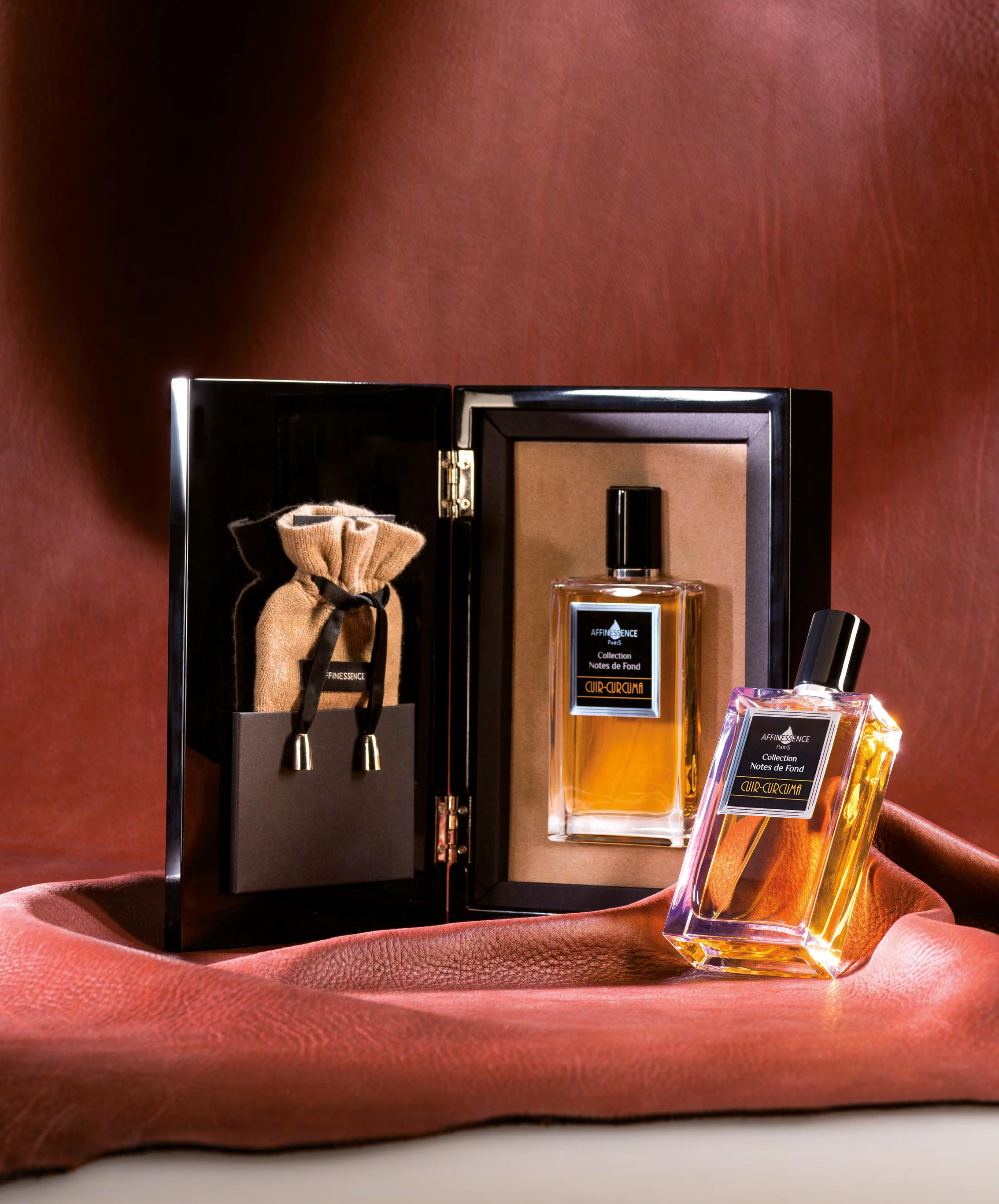

�E�
the olfactory cultural movement is also…

A LEADING PERIODICAL
Nez, the olfactory magazine
Every 6 months a new issue of Nez serves up a slice of worldwide olfactory culture in just 176 pages (fr, en).
A PUBLISHING HOUSE
Nez littérature
• L’Écrivain d’odeurs, Jean-Claude Ellena (fr)
• Aphorisms of a Perfumer, Dominique Ropion (fr, en)
• The Sense of Scent, Mathilde Laurent (fr, en)
• Pot-pourri, Maïté Turonnet (fr)

Nez culture
• The Big Book of Perfume (fr, en)
• Essences & Alchimie, un guide du parfum au naturel (fr)
• Une histoire de parfums (fr)
• Les 111 parfums qu’il faut sentir avant de mourir (fr)
• La Fabuleuse Histoire de l’eau de Cologne (fr)
FOR THE EARS AS WELL AS THE NOSE
Podcasts by Nez
Smell Talks
The best conferences and roundtable discussions with experts across the globe
Les Grands Entretiens
Designers talk about their careers, their practice and their vision of the perfume industry
Parole de marque
The new players in modern perfumery recount their story and their world
1+1
A creative experiment
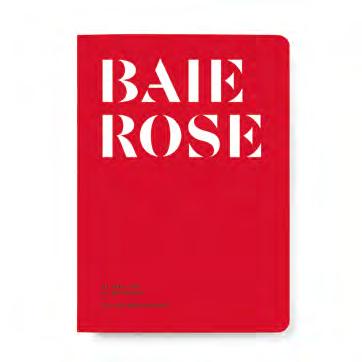
Nez + LMR
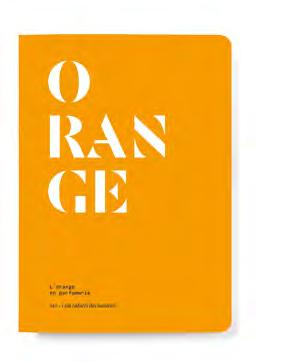
Naturals notebook
Pink pepper, orange, lemon, jasmine grandiflorum, mimosa, ylang-ylang, immortelle, cinnamon, lavender and lavandin, tuberose, blackcurrant bud, geranium, orange blossom, sandalwood, vetiver, orris, jasmine sambac, patchouli, Damask rose, narcissus.

A BOX
The Auparfum box
An independent selection of four niche fragrances every two months.
AN ARRAY OF ONLINE CONTENT
Auparfum
auparfum.bynez.com
Reviews, news, selections, interviews and more
• Sentir, ressentir. Parfumeurs, odeurs et émotions (fr, en)
• Voici des feuilles, des fleurs, des fauves et des oiseaux (fr)
• Parfums pour homme. La sélection idéale (fr)

One-off publications
• We Love Fragrances.
How Fragrance Is a Safe and Essential Part of Life (en)
• From Plant to Essence (fr, en)
1+1 AN EXCLUSIVE PERFUME COLLECTION
• Hongkong Oolong, Maurice Roucel + Alan Chan
• Folia, Julien Rasquinet
+ Eva Jospin
• Ambre à lèvres, Mathilde Bijaoui
+ Marjane Satrapi
• Kraft gommé, Marie Salamagne
+ Woodkid
• Le Lac, Annick Menardo
+ Angelin Preljocaj
• In the Arboretum, Violaine Collas
+ Sopheap Pich
• Adorem, Fabrice Pellegrin
+ Akrame Benallal
• Armoressence, Nicolas Beaulieu
+ Jeanne Vicerial




AN AGENCY SPECIALIZING IN OLFACTORY CULTURE
Le Bureau olfactif
Consultancy and guidance, expert content, training and education, global design, digital and video, photography, publishing, etc.
AN ANNUAL EVENT
Mag by Nez
mag.bynez.com
Perfumery, science, history, the arts, special reports, events and more
THE ONLINE SHOP
The concept store for olfactory culture shop.bynez.com
Paris Perfume Week 21-24 March 2024
The unmissable olfactory culture event in Paris for the perfume world.
80
OUR NETWORK
Nez has created a network of partners to promote olfactory culture. You can find us throughout the world, yearround.
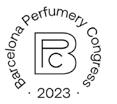
Barcelona Perfumery Congress
Barcelona, June 18-19, 2025

Beautyworld Middle East Dubai, October 28-30, 2024

Congrès olfaction & perspectives
Gennevilliers, March 21, 2024

Cosmetic 360 Paris, October 16-17, 2024

Esxence Milan, March 6-9, 2024

Fragrance Innovation Summit Paris, November 28, 2024

IFEAT Bangkok, November 10-14, 2024

Pitti Fragranze Florence, September 13-15, 2024

Rives de la beauté Paris

ScentXplore New York, December 2024

Simppar Grasse, May 28-29, 2024

IFRA

Institute for Art and Olfaction
Lisbon, Art and Olfaction Awards, June 7, 2024
World Perfumery Congress Geneva, June 24-27, 2024
CREDITS
Publishing directors
Dominique Brunel, Mathieu Chévara, Jeanne Doré
Editor in Chief
Jeanne Doré
Assistant editor Arielle Lauze
Sub editor
Jessica A. Volz
Translator Philippa Bowe
Art direction and graphic design
Atelier Marge Design
Production manager Marine Gimenez
Illustrators
Simon Roussin Erwann Terrier
Advertising Dominique Brunel dbrunel@bynez.com
+33 6 43 75 73 48
Inès Zabili izabili@bynez.com
+33 6 25 81 58 60
Press relations
Lucile Rives lrives@bynez.com
+33 6 18 62 61 03
Nez
29, rue des Orteaux 75020 Paris
Distribution North America
Maison Duquesne info@maisonduquesne.com
France
Paris Perfume Week by Nez Paris, March 21-24, 2024
Manon Carrère manon@manotedecoeur.com
Europe and outside North America
Inès Zabili izabili@bynez.com
Niche by Nez www.bynez.com nezlarevue
NezTheOlfactoryMagazine nezlarevue
With thanks to… Artur Araújo, Guillaume Audy, Olivier Bachelet, Martina Bianchini, Rawya Catto, Alice Charrier, Amandine Cresp, Olivier R.P. David, Nelly Di Mercurio, Jennifer Dorts, Paula Forti, Thomas Haski, Clara Hattab, Anne-Sophie Hennegrave, Aurélie Keller, Andras Komar, Cécile Lavenu, Cécile Le Cerf, Camille Le Gall, Charles de Lusigan, Emmanuelle Moser, Tammy Panesa, Aurelie Perrichet, Maxence Piquart, Sophie Rigaut, Renauld Salmon, Alessandro Starnino, Marta Varela, Aimee Williams
Publisher imprint Printed in Lyon (Commercial Type), Nez (Longtype), Aperçu (Colophon), & Trade Gothic (Linotype). Printed by Corlet on Amber Volume 70 g/m2 and Materica Kraft 180 g/m2 in February 2024.
The contents of this magazine were produced by the Niche by Nez editorial team and achieved in partnership with the brands mentioned, except for pages 1, 10, 13, 24-27, 29, 36, 38, 44, 48-50, 75-80.
All rights reserved worldwide. Reproduction, translation and adaptation, in whole or in part, without prior written permission is strictly forbidden. Involuntary errors or omissions which may have occurred, despite the efforts of the editorial team, in the contents of this magazine will not engage the responsibility of the publisher.
With the support of our principal partners
Key institutional partner:

�iche by �e� 2 en is a magazine published by Nez. It is free and comes out once a year in English and French, opening wide the door to the captivating world of niche perfumery.
INDONESIA RAW MATERIALS
An olfactory journey to discover the loveliest perfumery ingredients.

VAN AROMA
A family business
IN WADI DAWKAH
The Omani Grasse
comptoir �iche by �e�
How brands and composition houses work together to create an inventive and inimitable perfume world.
BRAND PORTRAITS
Explore the fascinating universe of niche perfume houses as you encounter their founders and creations.
Atelier Materi, Olfactive Studio, Len Fragrance, Meo Fusciuni, L’Objet
AND ALSO THE INTERNATIONAL GUIDE TO NICHE PERFUMERY
With the support of our partner
IFRA
To the rescue of oakmoss
INTERVIEW
Stéphane Piquart
IBERCHEM
“The Indonesian perfume world relies on sensations rather than an olfactory pyramid.”
BDK PARFUMS X MANE A family attachment
ATELIER DES ORS X DSM-FIRMENICH
A partnership made in heaven
EVENTS
Major events in niche perfumery taking place throughout the world.
PARIS PERFUME WEEK
Capital of perfume
IN THE AIR
Discover the notes making a splash today, with expert analysis and insights from various perfumers.
The best of niche by the Nez editorial team
The leather trend
SCENTXPLORE NEW YORK
A spirit of camaraderie
LUZI
JUDITH X SYMRISE
A wonderfully vintage Parisienne
BEAUTYWORLD DUBAI
The quintessence of niche
Immersion in the Swiss fragrance house.
MÄURER & WIRTZ
When a sillage opens up new horizons
SIDONIE GRANDPERRET AND MARK BUXTON
Two takes on niche
bynez.com nezlarevue nezlarevue Complimentary copy; not for resale.





























































 Interview with Max Forti, Founder of ScentXplore
Interview with Max Forti, Founder of ScentXplore














































